Risultati: 183
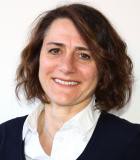
Funzione/Ruolo
Professoressa ordinaria di Bioingeneria industriale all'Istituto di BioRobotica della Scuola Superiore Sant'Anna di Pisa e Professoressa alla National University di Singapore
Percorso professionale
Dopo aver conseguito la laurea in Informatica presso l'Università di Pisa nel 1993, prosegue la sua formazione attraverso un dottorato di ricerca in Robotica all'Università di Genova nel 1998. Dall'anno successivo è assegnista di ricerca e poi ricercatrice in Biorobotica alla Scuola Superiore Sant'Anna di Pisa. Dal 2001 al 2002 è anche visiting researcher al Humanoid Robotics Institute of Waseda University di Tokyo, Giappone. Dal 2006 è professoressa associata e dal 2014 ordinaria di Biorobotica alla Scuola Superiore Sant'Anna di Pisa. E' inoltre professoressa alla National University di Singapore, nel Dipartimento di Ingegneria Meccanica.
Risultati scientifici
L'interesse di ricerca di Cecilia Laschi è la BioRobotica. Partendo da un'esperienza in robotica di base, ha investigato soluzioni bio-ispirate per la robotica personale e di servizio. Recentemente ha lavorato a un progetto molto ambizioso che è cresciuto in un acquario del Centro di Ricerca per le Tecnologie del Mare e la Robotica Marina sulla costa di Livorno. A fare da modello vivente un vero e proprio polpo. Copiando il movimento del cefalopode, nel progetto europeo OCTOPUS, Cecilia Laschi e il suo team hanno posto le basi dello sviluppo della biomimetica del futuro: ossia la progettazione e la realizzazione di robot bioispirati, costruiti con materiali morbidi. Il primo prototipo di braccio robotico è stato costruito imitando la struttura muscolare del braccio del polpo con materiali siliconici, realizzando attuatori innovativi che permettono di ottenere una contrazione della struttura muscolare e realizzato con una copertura di contenimento del braccio, ispirata al tessuto connettivo del polpo, nonché una pelle artificiale dotata di ventose. Il braccio robotico funziona in acqua perché, come il polpo, sfrutta le caratteristiche meccaniche della interazione con l'acqua imitando la flessione e l'allungamento del braccio. Le tecnologie sviluppate imitando il polpo trovano ora ulteriore sviluppo in molti progetti che riguardano applicazioni che vanno dalle esplorazioni marine al settore biomedicale, in chirrgia e nell'assistenza agli anziani. Questa ricerca ha portato allo sviluppo della nuova area di ricerca della Robotica Soft, a livello internazionale. Al nome di Cecilia Laschi è legato anche un altro importante progetto: nel 2007 ha infatti contribuito fattivamente alla nascita, a Tokyo, del laboratorio congiunto di robotica "Robot-An" tra la Scuola Superiore Sant'Anna e la Waseda University dove ricercatori italiani e giapponesi svolgono insieme ricerca di frontiera. Grazie alle competenze della nostra nostra scienziata in robotica umanoide ha visto la luce I-Droid, prodotto da un'azienda spin-off da lei fondata, il primo personal robot venduto in dispense in otto paesi, capace di parlare, riconoscere ordini elementari, vedere, muovere la testa ad un rumore, simulare sentimenti ma soprattutto apprendere, memorizzando degli schemi di comportamento.
Laschi è anche tra gli inventori di un altro gioiello della robotica pisana: i DustBot, i robot-netturbini. Ossia DustClean, che pulisce le strade con spazzole e spray disinfettanti e DustCart, un "omino di neve" color verde, su due ruote che (previa telefonata o sms) si presenta davanti la porta di casa, spalanca il cassetto-pancia, riceve il sacchetto di rifiuti e lo porta fuori dal centro storico. I due Wall-e italiani - ai quali Laschi ha lavorato dal 2006 tramite la RoboTech - sono entrati già in servizio in via sperimentale in un paesino della Toscana.
Attività editoriali e pubblicazioni
Cecilia Laschi è autrice di numerose pubblicazioni su riviste scientifiche nazionali ed internazionali fra cui:
(2016) Laschi C, Mazzolai B. Lessons from nature: the symbiosis of morphological computation and soft robotics. IEEE Robotics & Automation Magazine 23.
(2016) Calisti M, Falotico E, Laschi C. Hopping on Uneven Terrains With an Underwater One-Legged Robot. IEEE Robotics and Automation Letters,1.1:461-468.
(2016) Cianchetti M, Laschi C. Pleasant to the Touch: By Emulating Nature, Scientists Hope to Find Innovative New Uses for Soft Robotics in Health-Care Technology. IEEE Pulse, 7(3):34-37.
(2016) Cauli N, Falotico E, Bernardino A, Santos-Victor J, Laschi C. Correcting for Changes: Expected Perception-Based Control for Reaching a Moving Target. IEEE Robotics and Automation Magazine, 23(1):63-70.
(2015) Cianchetti M, Calisti M, Margheri L, Kuba M, Laschi C. Bioinspired locomotion and grasping in water: the soft eight-arm OCTOPUS robot. Bioinspiration & Biomimetics, 10, 035003.
(2015) Renda F, Giorgio-Serchi F, Boyer F, Laschi C, Modelling cephalopod-inspired pulsed-jet locomotion for underwater soft robots. Bioinspiration and Biomimetics, 10(5).
(2015) Calisti M, Corucci F, Arienti A, Laschi C. Dynamics of underwater legged locomotion: Modeling and experiments on an octopus-inspired robot. Bioinspiration and Biomimetics, 10(4).
(2014) Renda F, Giorelli M, Calisti M, Cianchetti M, Laschi C. Dynamic Model of a Multibending Soft Robot Arm Driven by Cables. IEEE Transactions on Robotics, 30, 1109-1122.
(2014) Laschi C, Cianchetti M. Soft Robotics: New Perspectives for Robot Bodyware and Control. Frontiers in Bioengineering and Biotechnology, 2.
(2013) Kim S, Laschi C, Trimmer B. Soft robotics: a bioinspired evolution in robotics. Trends in Biotechnology, 31, 287-294.
La lista completa è disponibile online.
Riconoscimenti e premi
Co-fondatrice nel 2004 della società spin-off accademico della Scuola Superiore Sant'Anna "RoboTech srl", nel campo della robotica edutainment. Cecilia Laschi è co-autrice di sedici brevetti in Italia, Europa e Giappone.

Funzione/Ruolo
Prima Ricercatrice dell'Istituto di Fisica Nazionale (INFN) sezione di Pisa
Percorso professionale
Dopo aver conseguito la laurea in Fisica all'Università di Pisa nel 1990 prosegue il suo percorso formativo attraverso un dottorato di ricerca in Fisica ottenuto presso lo stesso ateneo nel 1994. Nel 1994 è borsista Post-Doc dell'INFN sezione di Pisa, l'anno successivo è professoressa di ruolo di Fisica presso IPSIA Solvay a Rosignano (Livorno). Nel 1996 rientra all'Istituto Nazionale di Fisica Nucleare e nel 1997 è ricercatrice dello stesso istituto. Dal 2009 a oggi è Prima Ricercatrice dell'Istituto Nazionale di Fisica Nucleare presso la sezione di Pisa. Ha ottenuto l'abilitazione scientifica nazionale a professoressa ordinaria nel settore 02/A1 (Fisica sperimentale delle interazioni fondamentali). Dal 2005 al 2017 è responsabile dell'edizione di Pisa della Masterclass Europea di Fisica delle particelle (attività divulgativa per studenti dei licei) e ha fatto parte del comitato organizzatore locale di 6 congressi internazionali. Dal 2002 al 2008 è responsabile dell'organizzazione dei seminari di Fisica sperimentale della sezione di Pisa dell'Istituto Nazionale di Fisica Nucleare.
Risultati scientifici
Il campo di ricerca di Sandra Leone è la Fisica sperimentale delle particelle elementari. Già dal 1989 studia le collisioni protone-antiprotone nell'esperimento CDF Collider Detector al Tevatron Collider al Fermilab, negli Stati Uniti, con particolare attenzione alla produzione dei bosoni intermedi W. Nel biennio 1994/1995 si occupa dello studio del processo di produzione di quark top e partecipa alla prima osservazione del quark top sempre nell'ambito dell'esperimento CDF (Collider Detector at Fermilab). Dal 1997 al 2001 si occupa dei rivelatori a semiconduttore e delle loro applicazioni per esperimenti a collisionatori adronici, nello specifico della costruzione del rivelatore ISL per l'esperimento CDF. E dal 1998 al 2001 è responsabile dalla costruzione e test di 161 moduli elementari del rivelatore a silicio ISL per l'esperimento CDF al Fermilab. Negli anni successivi si dedica allo studio della produzione associata di bosoni intermedi WZ e della ricerca del bosone di Higgs. Nel 2013 entra a far parte dell'esperimento ATLAS al CERN, e partecipa alla costruzione del sistema di calibrazione con Laser per il calorimetro adronico. Dal 2015 si occupa di test di longevità dei fotomoltiplicatori per il calorimetro adronico di ATLAS. Oltre a collaborare con il CERN per lo studio delle collisioni protone-protone, continua ad occuparsi della analisi dei dati raccolti dall'esperimento CDF al Tevatron. È stata relatrice su invito a 15 conferenze internazionali in sessione plenaria e ha presentato risultati scientifici in numerose conferenze nazionali, scuole di fisica, seminari e sessioni parallele di congressi internazionali, ultimo dei quali ‘Ichep2016', uno dei più importanti appuntamenti nell'ambito della fisica delle alte energie, che si è svolto a Chicago nell'agosto 2016.
Attività editoriali e pubblicazioni
È autrice di più di 1000 pubblicazioni internazionali fra cui:
(2016) CDF Collaboration. Measurement of the WW and WZ production cross section using final states with a charged lepton and heavy-flavor jets in the full CDF Run II data set. Physical Review D, 94, 032008.
(2016) ATLAS Collaboration. Measurement of the W±Z boson pair-production cross section in pp collisions at center of mass energy 13 TeV with the ATLAS Detector. Physical Letters B, 762, 1-22.
(2014) CDF Collaboration. Measurement of B(t→Wb)/B(t→Wq) in Top-Quark-Pair Decays Using Dilepton Events and the Full CDF Run II Data Set. Physical Review Letters, 112, 221801.
(2014) CDF Collaboration. Measurement of the Single Top Quark Production Cross Section and |Vtb| in Events with One Charged Lepton, Large Missing Transverse Energy, and Jets at CDF. Physical Review Letters, 113, 261804.
(2012) CDF Collaboration. Search for the Standard Model Higgs Boson Decaying to a bottom-antibottom Pair in Events with One Charged Lepton and Large Missing Transverse Energy Using the Full CDF Data Set. Physical Review Letters, 109, 111804.
(2012) CDF Collaboration. Evidence for a Particle Produced in Association with Weak Bosons and Decaying to a Bottom-Antibottom Quark Pair in Higgs Boson Searches at the Tevatron. Physical Review Letters, 109, 071804.
(2007) CDF Collaboration. First Measurement of the Ratio of Central-Electron to Forward-Electron W Partial Cross Sections in proton-antiproton collisions at center of mass energy of 1.96 TeV. Physical Review Letters, 98, 251801.
(2002) ISL Collaboration. Status Report of the Intermediate Silicon Layers Detector at CDFII. Nuclear Instruments and Methods in Physics Research A, 485, 6-9.
(1995) CDF Collaboration. Observation of Top Quark Production in proton-antiproton collisions with the Collider Detector at Fermilab. Physical Review Letters, 74, 2626.
(1992) Abe F, [...] Leone S, et al. Lepton Asymmetry in W-boson Decays from proton-antiproton Collisions at center of mass energy of 1.8 TeV. Physical Review Letters, 68, 1458.
Riconoscimenti e premi
Sandra Leone ricopre e ha ricoperto diversi ruoli di rilievo nella società scientifica. Nel 1995 riceve un premio della Società Italiana di Fisica (SIF) per giovani ricercatori. Dal 1998 è referee scientifico delle riviste Physical Review Letters e Physical Review D. Dal marzo 2013 è membro della redazione del sito web divulgativo dell'INFN "Scienza Per Tutti". A partire dal 2008 ottiene vari contratti dalla Research Executive Energy della Commissione Europea come Esperto Valutatore Indipendente nell'ambito del Settimo Programma Quadro e di Horizon 2020. Dal 2006 al 2011 fa parte del comitato pari opportunità dell'Istituto Nazionale di fisica Nucleare su designazione dell'ente.

Funzione/Ruolo
Professoressa ordinaria in Biologia applicata all'Università Vita Salute San Raffaele e Responsabile dell'Unità "Proteomica del Metabolismo del Ferro" dell'Istituto Scientifico San Raffaele di Milano
Percorso professionale
Dopo la laurea in Scienze Biologiche presso l'Università degli Studi di Milano nel 1982, prosegue il suo percorso di formazione all'interno del Dipartimento di Scienze e Tecnologie Biomediche dell'Ospedale San Raffaele. Nel 1984 ottiene una borsa di studio dell'European Molecular Biology Organization presso l'European Molecular Biology Laboratory di Heidelberg. Due anni dopo riceve una borsa triennale di avviamento all'attività scientifica erogata dall'Istituto Scientifico San Raffaele che le consente di entrare a far parte del laboratorio del "Metabolismo del Ferro". Nel 2005 diventa professoressa associata e successivamente ordinaria di Biologia Applicata nella facoltà di Medicina e Chirurgia dell'Università Vita-Salute San Raffaele. Attualmente è anche Responsabile dell'unità di ricerca "Proteomica del Metabolismo del Ferro" dell'Istituto San Raffaele di Milano e Presidente del Presidio di qualità dell'Università San Raffaele.
Risultati scientifici
Sonia Levi si interessa da anni allo studio del metabolismo del ferro e delle malattie ad esso associate. Mel 1984 si reca all'EMBL (European Molecular Biology Laboratory) per apprendere le nascenti tecniche del DNA ricombinante applicate all'espressione delle proteine. Al suo ritorno in Italia porta queste nuove metodologie nel laboratorio del "Metabolismo del Ferro" dell'Ospedale San Raffaele di Milano, dove riesce a ottenere le ferritine umane ricombinanti ed i loro mutanti, utili nello studio dell'assemblaggio di strutture proteiche complesse. Dal 1992 al 2002 prosegue la sua ricerca all'interno del laboratorio "Ingegneria delle Proteine" presso il Dipartimento di Ricerca Biotecnologica (DIBIT) dell'Istituto Scientifico San Raffaele e nel 2001 identifica ed isola una nuova ferritina umana che si localizza nel mitocondrio (piccoli organelli cellulari). La caratterizzazione biologica e funzionale di questa nuova proteina è uno dei suoi principali argomenti d'interesse, così come lo studio delle alterazioni del metabolismo del ferro nel cervello. Recentemente si è dedicata alla comprensione dei meccanismo molecolari che legano l'accumulo di ferro cerebrale sarebbe coinvolto ad alcuni processi neuro-degenerativi.
Attività editoriali e pubblicazioni
Autrice di più di cento pubblicazioni italiane ed internazionali fra cui:
(2016) Orellana DI, Santambrogio P, Rubio A, Yekhlef L, Cancellieri C, Dusi S, Giannelli SG, Venco P, Mazzara PG, Cozzi A, Ferrari M, Garavaglia B, Taverna S, Tiranti V, Broccoli V, Levi S. Coenzyme A corrects pathological defects in human neurons of PANK2-associated neurodegeneration. EMBO Molecular Medicine, 8 (10):1197-1211.
(2015) Maccarinelli F, Pagani A, Cozzi A, Codazzi F, Di Giacomo G, Capoccia S, Rapino S, Finazzi D, Politi LS, Cirulli F, Giorgio M, Cremona O, Grohovaz F, Levi S. A novel neuroferritinopathy mouse model (ftl 498instc) shows progressive brain iron dysregulation, morphological signs of early neurodegeneration and motor coordination deficits. Neurobiology of Disease, 81:119-33.
(2013) Cozzi A, Santambrogio P, Privitera D, Broccoli V, Rotundo LI, Garavaglia B, Benz R, Altamura S, Goede JS, Muckenthaler MU, Levi S. Human L-ferritin deficiency is characterized by idiopathic generalized seizures and atypical restless leg syndrome. Journal of Experimental Medicine, 210(9):1779-91.
(2009) Campanella A, Rovelli E, Santambrogio P, Cozzi A, Taroni F, Levi S. Mitochondrial ferritin limits oxidative damage regulating mitochondrial iron availability: hypothesis for a protective role in Friedreich ataxia. Human Molecular Genetics, 18(1):1-11.
(2004) Campanella A, Isaya G, O'Neill HA, Santambrogio P, Cozzi A, Arosio P, Levi S. The expression of human mitochondrial ferritin rescues respiratory function infrataxin-deficient yeast. Human Molecular Genetics, 13(19):2279-88.
(2002) Arosio P, Levi S. Ferritin, iron homeostasis, and oxidative damage. Free Rqical Biology and Medicine, 33(4):457-463.
(2001) Levi S, Corsi B, Bosisio M, Invernizzi R, Volz A, Sanford D, Arosio P, Drysdale J. A Human mitochondrial ferritin encoded by an introless gene. Journal of Biological Chemistry, 276(27):24437-40.
(1994) Levi S, Santambrogio P, Cozzi A, Rovida E, Corsi B, Tamborini E, Spada S, Albertini A, Arosio P. The role of the L-chain in ferritin iron incorporation. Studies of homo and heteropolymers. Journal of Molecular Biology, 238(5):649-54.
(1991) Lawson DM, Artymiuk PJ, Yewdall SJ, Smith JM, Livingstone JC, Treffry A, Luzzago A, Levi S, Arosio P, Cesareni G, et al. Solving the structure of human H ferritin by genetically engineering intermolecular crystal contacts. Nature, 349(6309):541-544
(1988) Levi, S., Luzzago A, Cesareni G, Cozzi A, Franceschinelli F, Albertini A & Arosio P. Mechanism of ferritin iron uptake: activity of the H-chain and deletion mapping of the ferro-oxidase site. Journal of Biological Chemistry, 263: 18086-18092.
Riconoscimenti e premi
Dal 2016 al 2018 è stata inserita fra le “Top Italian Women Scientist”.
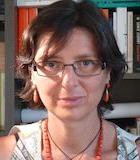
Funzione/Ruolo
Prima Ricercatrice all’ENEA, sede di Bologna
Percorso professionale
Dopo la laurea in Fisica nel 1992 presso l’Università degli Studi di Pisa, con una tesi svolta prevalentemente al CERN di Ginevra, prosegue la formazione con una borsa di studio dell’Istituto Nazionale di Fisica della Materia nell’ambito della fisica della fusione termonucleare controllata e inizia così la collaborazione con il Consorzio RFX di Padova. Dal 1993 al 1999 è ricercatrice all’ENEA (Agenzia Nazionale per le nuove tecnologie, l’energia e lo sviluppo economico sostenibile) dove si occupa fino al 1999 di modellistica ambientale, sviluppando e applicando codici per lo studio della dispersione d’inquinanti reattivi in atmosfera. Nel 1999 ritorna a lavorare a Padova presso il Consorzio RFX, dove continua la sua esperienza nella fisica dei plasmi ad alta temperatura. Tra gli anni 2000 e 2002 svolge ricerca per vari mesi presso il Max Planck Institut für Plasmaphysik di Monaco di Baviera, per lavorare sull’esperimento tokamak ASDEX Upgrade nell’ambito del programma Mobility dell’EURATOM.
Consegue il Dottorato di Ricerca in Energetica presso l’Università degli Studi di Padova nel 2005. Dal 2006 è Prima Ricercatrice all’ENEA.
Risultati scientifici
Rita Lorenzini conduce attività di ricerca nell’ambito della fisica dei plasmi finalizzata a ottenere la fusione termonucleare, che ha lo scopo di ricavare energia dai processi fisici che avvengono nelle stelle riprodotti in laboratorio.
Rita Lorenzini svolge la sua attività prevalentemente sull’esperimento Reversed Field Pinch RFX-mod che si trova a Padova, operato dal Consorzio RFX, formato da CNR, ENEA, INFN, Università di Padova e Acciaierie Venete. Numerose sono anche le sue collaborazioni internazionali: per esempio con il gruppo di ricerca del Madison Symmetric Torus experiment (MST), nel Wisconsin (USA), e più recentemente con il gruppo di ricerca all’Heliotron LHD a Tokyo, in Giappone
Rita Lorenzini studia il problema del trasporto di particelle ed energia nei plasmi, attraverso l’analisi dei dati e la modellistica. Partecipa alle campagne sperimentali per la realizzazione di esperimenti che si svolgono ad RFX-mod, alla cui organizzazione ha attivamente contribuito come Task Force Leader in vari anni.
Nei suoi lavori Rita Lorenzini ha contribuito a caratterizzare le barriere di trasporto che si osservano negli stati elicoidali e a chiarire i legami tra il trasporto di energia e particelle in questi stati e la turbolenza magnetica. La sua attività è prevalentemente dedicata a studiare il trasporto negli stati a confinamento migliorato che si ottengono quando un plasma toroidale, scaldato da un’alta corrente, assume una forma elicoidale. Una scoperta recente, datata 2008, cui Rita Lorenzini ha contribuito.
Le sue ricerche più recenti mirano a migliorare la comprensione della fisica degli stati elicoidali di RFX-mod adattando ai plasmi di laboratorio gli studi sulla riconnessione magnetica che produce i solar flares. Si è occupata anche di valutare e capire le differenze tra i plasmi in idrogeno e in deuterio ottenuti recentemente ad RFX-mod.
Attualmente partecipa a una ricerca, in collaborazione con i ricercatori di LHD, per sviluppare un codice che consenta di simulare plasmi con più assi magnetici, allo scopo di studiare il trasporto del calore, attraverso l’analisi dell’evoluzione spazio-temporale d’impulsi caldi o freddi generati nei plasmi di LHD in cui sono presenti isole magnetiche.
Attività editoriali e pubblicazioni
È autrice di numerose pubblicazioni in riviste internazionali e di atti di convegni, tra cui:
[2018] F. Auriemma, D. Lopez-Bruna, R. Lorenzini, B. Momo, I. Predebon, Y. Suzuki, A. López-Fraguas, Y. Narushima, F. Sattin, D. Terranova ‘A novel approach to studying transport in plasmas with magnetic islands’ Nuclear Fusion 58, 096037.
[2018] C.F. Maggi, H.Weisen, J.C. Hillesheim, A. Chankin, E. Delabie, L. Horvath, F. Auriemma, I.S. Carvalho, G. Corrigan, J. Flanagan, L. Garzotti, D. Keeling, D. King, E. Lerche, R. Lorenzini et al ‘Isotope effects on L-H threshold and confinement in tokamak plasmas,’ Plasma Physics and Controlled Fusion 60, 125002.
[2016] Lorenzini R, Auriemma F, Fassina A, Martines E, Terranova D and Sattin F. Internal Transport Barrier Broadening through Subdominant Mode Stabilization in Reversed Field Pinch Plasmas, Physical Review Letters, 116, 185002.
[2015] Lorenzini R, Agostini M, Auriemma F, Carraro L, De Masi G, Fassina A, Franz P, Gobbin M, Innocente P, Puiatti ME, Scarin P, Zaniol B and Zuin M. The isotope effect in the RFX-modExperiment, Nuclear Fusion, 55, 043012.
[2012] Lorenzini R, Alfier A, Auriemma F, Fassina A, Franz P, Innocente P, Lopez-Bruna D, Martines E, Momo B, Pereverzev G, Piovesan P, Spizzo G, Spolaore M and Terranova D. On the energy transport in internal transport barriers of RFP plasmas, Nuclear Fusion, 52, 062004.
[2011] Bergerson WF, Auriemma F, Chapman BE, Ding WX, Zanca P, Brower DL, Innocente P, Lin L, Lorenzini R, Martines E, Momo B, Sarff JS and Terranova D. Bifurcation to 3D Helical Magnetic Equilibrium in an Axisymmetric Toroidal Device, Physical Review Letters, 107, 255001.
[2009] Lorenzini R, Martines E, Piovesan P, Terranova D, Zanca P, Zuin M et al. Self-organized helical equilibria as a new paradigm for ohmically heated fusion plasmas, Nature Physics, 5:570-574.
[2008] Lorenzini R, Terranova D, Alfier A, Innocente P, Martines E, Pasqualotto R, Zanca P. Single-Helical-Axis States in Reversed-Field-Pinch Plasmas, Physical Review Letters, 101, 025005.
[2007] Lorenzini R, Terranova D, Auriemma F, Cavazzana R, Innocente P, Martini S, Serianni G and Zuin M. Toroidally asymmetric particle transport caused by phase-lockingof MHD modes in RFX-mod, Nuclear Fusion, 47: 1468.
Riconoscimenti e premi
Rita Lorenzini ha tenuto la relazione su invito dal titolo Improvement of the magnetic configuration in the Reversed Field Pinch through successive bifurcations al 50th Annual Meeting of the Division of Plasma Physics, American Physical Society nel Novembre 2008 a Dallas, Texas.
E’ membro del Comitato Scientifico della 41st European Physical Society Conference on Plasma Physics.
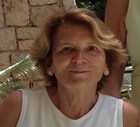
Funzione/Ruolo
Professoressa ordinaria di Fisiologia Vegetale Università di Padova
Percorso professionale
Nel Luglio 1974 si laurea in Biologia all'Università di Napoli, Federico II. Nell’Ottobre 1974 vince un posto di perfezionamento presso la Normale di Pisa. Dal 1975 al 1976 lavora nel laboratorio di Genetica dello sviluppo e Biologia Molecolare del prof. Garcia-Bellido all'Università di Madrid. Dal 1976 al 1982 è ricercatrice CNR presso l'Istituto di Mutagenesi e Differenziamento di Pisa. Dal 1983 al 1984 è Research Fellow nel Dept. of Genetics and Plant Pathology dell' Università di Berkeley, California. Nel 1987 diventa Professoressa Associata di Fisiologia Vegetale e insegna, fino al 1990, alla all'Università della Basilicata, e poi all'Università di Padova dove nell’ottobre 2000 diventa Ordinaria alla Facoltà di Scienze MM.FF.NN, ora Dipartimento di Biologia.
Risultati scientifici
L’attività scientifica è iniziata con una tesi di genetica molecolare batterica, svolta presso l'Istituto Internazionale di Genetica e Biofisica del CNR di Napoli. L’attività è continuata con studi di genetica dello sviluppo sul sistema modello Drosofila a Madrid e successivamente con studi di genetica somatica vegetale a Pisa. Nell' 82 ha iniziato un progetto che mirava all’isolamento e caratterizzazione di mutanti cellulari temperatura-sensibili alterati nel processo di embriogenesi somatica di carota (sistema modello per studi differenziativi vegetali). Lo studio delle alterazioni del differenziamento cellulare vegetale è stato oggetto di due programmi triennali consecutivi della comunità europea che hanno dato luogo a numerose pubblicazioni che costituiscono il nocciolo della produzione scientifica fino alla fine degli anni novanta. Successivamente Fiorella Lo Schiavo ha studiato meccanismi di percezione e trasduzione del segnale ormonale, inizialmente dell’auxina e più recentemente delle citochinine, in diversi sistemi cellulari vegetali. Ha poi condotto studi su alcune proteine canale, in particolare canali di potassio, indagandone anche la funzione in alcuni processi differenziatividelle piante.Ha indagato successivamente alcuni meccanismi di base dei processi di senescenza di organo utilizzando le colture cellulari come sistema modello, in particolare studiando le fasi finali della morte programmata cellulare della senescenza. Recentemente ha analizzato, mediante tecniche di imaging, il ruolo di importanti molecole segnali cellulari, quali calcio e le specie reattive dell’Ossigeno (ROS) indotte da stress abiotici in piante modello e in riso.
Attività editoriali e pubblicazioni
Autrice di oltre 100 pubblicazioni, fra cui:
[2018] Formentin E, Sudiro C, Perin G, Riccadonna S, Barizza E, Baldoni E, Lavezzo E, Stevanato P, Sacchi GA, Morosinotto T, Zottini M, Lo Schiavo F. Transcriptome and cell physiological analyses in different rice cultivars provide novel insights into adaptive and salinity stress responses.Frontiers in Plant Science, 9: 204.
[2017] Teardo E, Carraretto L, Wagner S, Formentin E, Behera S, De Bortoli S, Larosa V, Fuchhs P, Lo Schiavo F, Raffaello A, Rizzuto R, Costa A, Schwarzländer M and Ildiko Szabò Physiological characterization of a plant mitochondrial calcium uniporter in vitro and in in vivo. Plant Physiology, 173: 1-16.
[2015] D’Alessandro S, Golin S, Hardtke, Lo Schiavo F, Zottini M. The co-chaperone p23 controls root development through the modulation of auxin distribution in the Arabidopsisroot meristem. J. of Experimental Botany, 66(16): 5113-5122.
[2015] Teardo E, Carraretto L, De Bortolis S, Costa A, Behera S, Wagner R, Lo Schiavo F, Formentin E, Szabo I. Alternative splicing-mediated targeting of the Arabidopsis Glutamate Receptor 3.5 to mitochondria organelle morphology. Plant Physiology, 167 (1): 216-227.
[2014] Ruberti C, Costa A, Pedrazzini E, Lo Schiavo F, Zottini M. FISSION1A, an Arabidopsis tail-anchored protein, is localized to three subcellular compartments. Molecular Plant,7: 1393–1396, doi: 10.1 093/mp/ssu027.
[2013] Vescovi M, Zaffagnini M, Trost P, Lo Schiavo F, Costa A. Nuclear Accumulation of Cytosolic Glyceraldehyde-3-Phoshate Dhydrogenase in cadmium-Stressed Arabidopsis Roots.Plant Physiology, 162: 333-346, ISSN: 0032-0889.
[2012] Vescovi M, Riefler M, Gessuti M, Novak O, Schmulling T, Lo Schiavo F. Programmed cell death induced by high levels of cytokinin in Arabidopsis cultured cells is mediated by the cytokinin receptor CRE1/AHK4. Journal of Experimental Botany, 63: 2825-2832.
[2012]Loro G, Drago I, Pozzan T, Lo Schiavo F, Zottini M, Costa A. Targeting of Cameleon to different subcellular compartments reveals a strict cytoplasmic/mitochondrial Ca2+ handling relationship in plant cells.Plant Journal, 71(1): 1-13.
[2011] Horie T, Brodsky DE, Costa A, Kaneko T, Lo Schiavo F, Katsuhara M, Schroeder JI. K+ transport by the OsHKT2;4 transporter from rice (Oryza sativa) with atypical Na+ transport properties and competition in permeation of K+ over Mg2+ and Ca 2+ ions. Plant Physiology, 156(3):1493-507.
[2010] Costa A, Drago I, Behera S, Zottini M., Pizzo P, Schroeder Ji, Pozzan T, Lo Schiavo F. H2O2 in plant peroxisomes: an in vivo analysis uncovers a Ca(2+)-dependent scavenging system. Plant Journal, 62: 760-772.
[2009] De Michele R, Vurro E, Rigo C.Costa A, Elviri L, Di Valentin M, Careri M, Zottini M, Sanita' Di Toppi L, Lo Schiavo F. Nitric Oxide is involved in cadmium-induced programmed cell death in Arabidopsis suspension cultures. Plant Physiology, 150: 217-228.
[2009] De Michele R, Formentin E, Todesco M, Toppo S, Carimi F, Zottini M., Barizza E, Ferrarini A, Delledonne M, Fontana P, Lo Schiavo F. Transcriptome analysis of Medicago truncatula leaf senescence: similarities and differences in metabolic and transcriptional regulations as compared with Arabidopsis, nodule senescence and nitric oxide signalling.New Phytologist, 181: 563-575.
Riconoscimenti e premi
Nel 1975, ha vinto il Premio Scoffone-Cremona per la migliore tesi di laurea in Biologia Molecolare.
Dagli anni ’80 in poi, è stata responsabile di progetti nazionali (PF. Ingegneria genetica, IPRA, RAISA, MIPA, Biotecnologie e PRIN) e Internazionali (UE), consulente scientifica della National Science Foundation e dell' Unione Europea e di vari giornali scientifici internazionali.
Nel quadriennio '90-'94 è stata segretaria generale dell'International Association Plant Tissue Culture.
Nel Maggio 1997, ha diretto il corso NATO "Cellular Integration of Signalling Pathway in Plant Development" (Maratea).
Dal 1995 al 2002 è stata nel direttivo della Società di Fisiologia Vegetale e dal 2009 al 2014 nel direttivo della Società di Biologia Vegetale.
Nel settembre del 2012 è stata eletta per la prima volta delegata italiana nel consiglio della FESPB, ora PBE (Plant Biology Europe); carica rinnovata nel febbraio 2018.
E' stata coordinatrice del collegio docente, indirizzo Biotecnologie, della scuola di dottorato di Bioscienze e Biotecnologie dell'Università di Padova dalla sua costituzione fino al 2013.
Da inizio 2014 è membro del nuovo corso di Dottorato in Bioscienze dell’Università di Padovae referente del curriculum "Biochimica & Biotecnologie".
Dal 2016 è Presidente della commissione ASN per il settore della Fisiologia Vegetale.

Area STEM: Psicologia e neuroscienze
Competenze: psicologia dell’apprendimento, psicologia dello sviluppo
Parole chiave: adolescenza, apprendimento, bisogni educativi speciali, discalculia, disordini dello sviluppo, disturbi dell'apprendimento, impotenza appresa, infanzia, matematica, neuroscienze, numeri, plasticità cerebrale, plusdotazione, psicopatologia dell'apprendimento, strategie didattiche, sviluppo
Regione: Veneto
Funzione/Ruolo
Prorettrice con delega all'Orientamento e Tutorato per l'Università di Padova e Professoressa ordinaria di Psicologia dello Sviluppo presso la stessa università
Percorso professionale
Dopo aver conseguito la laurea in Filosofia nel 1988 e la laurea in Psicologia, nel 1991, presso l'università di Padova, prosegue la sua formazione, nel 1997, con un dottorato di ricerca in Psicologia dello Sviluppo all'Università di Leiden, in Olanda, su un progetto internazionale. La sua carriera continua all'interno dell'università: nel 1998 è ricercatrice in Psicologia dello Sviluppo, nel 2001 professoressa associata e nel 2005 professoressa ordinaria di Psicologia dello Sviluppo sempre all'Università di Padova. Dal 2007 è prorettrice con delega all'Orientamento e Tutorato per lo stesso ateneo, ruolo che ricopre a tutt'oggi.
Nell'aprile del 2020 è stata chiamata dalla ministra dell'Istruzione, Lucia Azzolina, a far parte dal comitato di esperti istituito presso il MIUR con il compito di "formulate e presentare idee e propose per la scuola con riferimento all'emergenza sanitaria in atto [Covid-19], ma anche guardando al miglioramento del sistema di Istruzione Nazionale".
Risultati scientifici
I principali interessi di ricerca di Daniela Lucangeli riguardano lo sviluppo e potenziamento dell'intelligenza numerica, i processi maturazionali nell'età evolutiva (prima e seconda infanzia, età scolare e adolescenza) e i meccanismi di apprendimento nello sviluppo tipico e atipico. Si occupa anche dello studio di funzioni (linguaggio, memoria, attenzione, emozioni, metacognizione, autoregolazione), dei disturbi dell'apprendimento (quali dislessia, disortografia, disgrafia, discalculia) e dei bisogni educativi speciali. Svolge inoltre ricerche e studi sul potenziamento dell'apprendimento, sui deficit comportamentali e cognitivi, sui profili giftedness ed alto potenziale, sulle emozioni nell'apprendimento e sull'impotenza appresa.
Con il gruppo di ricercatori e scienziati dell'Accademia Mondiale delle Scienze per le Difficoltà di Apprendimento, promuove da anni un forte movimento di azioni per la ricaduta della ricerca scientifica nelle prassi di prevenzione, potenziamento e riabilitazione delle disarmonie dello sviluppo. Difatti la ricerca scientifica ha messo in evidenza come attraverso l'intervento precoce nelle diverse "fatiche" dello sviluppo, sia possibile ottenere l'ottimizzazione dei processi anche nelle situazioni di eventuale disabilità (linguaggio, apprendimento, sviluppo cognitivo,ecc...). Il focus del suo lavoro non è solo quello relativo all'analisi dei profili cognitivi e all'eventuale diagnosi ma innanzitutto quello di utilizzare le migliori strategie di aiuto per il massimo di plasticità cerebrale.
Negli ultimi tempi si dedica allo studio dei network circuitali legati alla warm cognition ed ai circuiti emozionali dell'apprendimento. In particolare, agli studi volti ad evidenziare il contributo dei fattori ereditari e dei fattori culturali nello sviluppo dei processi psicologici e nell'educazione. Approfondisce lo studio di funzioni e di processi cognitivi con l'obiettivo di evidenziare le importanti implicazioni delle neuroscienze nei processi educativi.
In qualità di Prorettrice, con delega alle attività di tutorato, di orientamento "in itinere" e "in ingresso" dell'Università di Padova, coordina la realizzazione di progetti regionali ed europei volti ad indirizzare i giovani nella scelta universitaria e professionale.
Attività editoriali e pubblicazioni
Daniela Lucangeli è Editor della rivista Difficoltà In Matematica (Erickson) e referee per diverse riviste specializzate. È autrice di numerose pubblicazioni nazionali ed internazionali e di saggi scientifici e didattici, tra cui (negli ultimi cinque anni):
(2017) Sella F, Berteletti I, Lucangeli D, Zorzi M. Pre-school children use space, rather then counting, to infer the numerical magnitude of digits: evidence for a spatial mapping principle. Cognition, 158, 56-67.
(2016) Sella F, Berteletti I, Lucangeli D, Zorzi M. Spontaneous non‐verbal counting in toddlers. Developmental Science, 19(2), 329-337.
(2016) Benavides-Varela S, Butterworth B, Burgio F, Arcara G, Lucangeli D, Semenza C. Numerical Activities and Information Learned at Home Link to the Exact Numeracy Skills in 5–6 Years-Old Children. Frontiers in psychology, 7.
(2015) Sella F, Berteletti I, Lucangeli D, Zorzi M. Varieties of quantity estimation in children. Developmental Psychology, 51(6), 758.
(2014) Caviola S, Mammarella IC, Lucangeli D, Cornoldi C. Working memory and domain-specific precursors predicting the success in learning written subtraction problems. Learning and Individual Differences, 36, 92-100.
(2014) Re AM, Pedron M, Tressoldi PE, Lucangeli D. Response to Specific Training for Students With Different Levels of Mathematical Difficulties. Exceptional Children, 80(3), 337-352.
(2013) Al-Yagon M, Cavendish W, Cornoldi C, Fawcett AJ, Grunke M, Hung, LY, Jimenez JE, Karande S, van Kraayenoord CE, Lucangeli D, Margalit M, Montague M, Sholapurwala R. The Proposed Changes For DSM-5 for SLD and ADHD: International Perspectives-Australia, Germany, Greece, India, Israel, Italy, Spain, Taiwan, United Kingdom, and United States. Journal of Learning Disabilities, 46, 58-72.
(2013) Colomer C, Miranda A, Re AM, Lucangeli D. Numerical and Calculation Abilities in Children with ADHD. Learning Disabilities: A Contemporary Journal, 11(2), 1-15.
(2013) Mammarella IC, Bomba M, Caviola S, Broggi F, Neri F. Lucangeli D, Nacinovich R. Mathematical difficulties in nonverbal learning disability or co-morbid dyscalculia and dyslexia. Developmental neuropsychology, 38(6), 418-432.
(2013) Mammarella IC, Caviola S, Cornoldi C, Lucangeli D. Mental additions and verbal-domain interference in children with Developmental Dyscalculia (DD). Research in Developmental Disabilities, 34(9), 2845-2855.
Riconoscimenti e premi
Daniela Lucangeli è Presidente dell'Associazione per il Coordinamento Nazionale degli Insegnanti Specializzati (CNIS) e componente dei Comitati Scientifici di numerose associazioni di ricerca nazionali e internazionali quali l'Associazione Italiana per la Ricerca e l'Intervento nella Psicopatologia dell'Apprendimento (AIRIPA) e dell'Associazione Italiana di Psicologia (AIP Sezione Sviluppo). Vice Presidente per l'International Development dell'International Academy for Research in Learning Disabilities (IARLD). Membro tecnico dell'Osservatorio Nazionale per l'infanzia e l'adolescenza. Componente scientifica della Commissione tecnica nominata dal Ministero dell'Istruzione per le linee guida dei disturbi specifici dell'apprendimento (DSA), dei Bes (Bisogni Educativi Speciali). Ed è membro della Commissione Nazionale Ministero CNOP (Consiglio Nazionale degli Psicologi) "Benessere a Scuola". Vice presidente della Fondazione di ricerca HPNR (Human Potential Network Research). Direttrice Scientifica del Polo Apprendimento (28 Centri in Italia). Direttrice Scientifica dell'Associazione Gate Italy (Gifted and Talent Education). Responsabile Scientifica del Centro Regionale di Ricerca e Servizi Educativi per le Difficoltà di Apprendimento.
Nel 2019 ha ricevuto il premio internazionale "Standout Woman Award" "per l’alto profilo degli studi da lei effettuati, volti a sostenere la crescita e lo sviluppo di bambini e adolescenti, e per il suo costante impegno mostrato nei servizi educativi e nei servizi clinici come supporto alle vulnerabilità evolutive".
Nell'aprile del 2020 è stata nominata nel Comitato di esperti presso il Ministero dell'istruzione, istituito dalla ministra Lucia Azzolina.

Area STEM: Scienze biomediche e biotecnologie
Competenze: biotecnologie farmacologiche, farmacologia cellulare e molecolare
Parole chiave: coronavirus, Covid-19, farmaci, farmacologia di genere, invecchiamento, malattie metaboliche, menopausa, metabolismo epatico, neuroinfiammazione, recettori degli estrogeni, vaccini, vaccini a RNA o DNA, vaccini innovativi
Regione: Lombardia
Funzione/Ruolo
Professoressa ordinaria di Farmacologia e Biotecnologie e Coordinatrice del Centro di Eccellenza per le malattie Neurodegenerative presso l'Università degli studi di Milano
Percorso professionale
Dopo la laurea in Scienze Biologiche presso l’Università degli studi di Milano nel 1973, prosegue i suoi interessi scientifici con una borsa di studio presso l’Istituto di Farmacologia e Farmacognosia diretto dal professor Rodolfo Paoletti. Vincitrice del Salk Institute - University of Texas Award continua la sua formazione inizialmente presso il Dipartimento di Farmacologia e Neurobiologia dell’Università del Texas, a Houston, negli Stati Uniti e poi presso il Dipartimento di Biologia Cellulare del Baylor College of Medicina sotto la guida del professor Bert O’Malley. Ritornata in Italia nel 1982 come ricercatrice, fonda e dirige un centro modello di collaborazione Università-Industria frutto di una iniziativa dell’Università di Milano e dell’Azienda Farmaceutica Hoffman-LaRoche: il Milano Molecular Pharmacology Lab (MPL). Alla fine degli anni ’80, in qualità di professoressa associata, continua le sue ricerche presso il Dipartimento di Scienze Farmacologiche dell’Università di Milano. Dal 2002 dirige il Centro di Eccellenza sulle malattie neurodegenerative dell’Università di Milano, un centro sperimentale finanziato da un fondo bandito dal Ministero dell’Università e della Ricerca nel quale è direttamente responsabile di un gruppo di ricerca costituito da 20 ricercatori e giovani laureati. Dal 2006 al 2014 fonda e presiede la TOP srl, spin-off dell’Università di Milano. Quale esperta di Biotecnologie Farmacologiche ricopre diverse cariche ministeriali: è membro del Comitato di Consulenza del Primo Ministro Italiano nel settore delle Biotecnologie, Biosicurezza e Scienze della Vita, del Comitato Scientifico “Innovative Medicine Initiative” dell’Unione Europea, dello European ESFRI Working Group for Health and Food, del Council of the European Society for Molecular Imaging (ESMI) ed è delegata del MIUR per l’European Pilot Initiative on Joint Programming on Neurodegenerative Diseases di cui è Vice-Presidente dal 2010. Attualmente è stata nominata dalla Società Americana di Endocrinologia membro della Endocrine Society EU Task force for Endocrine Disrupters e collabora con l’Innovative Medicine Initiative2 in qualità di membro SSG Panel on Neurodegeneration.
Risultati scientifici
La ricerca svolta da Adriana Maggi è da sempre incentrata sullo studio delle attività fisiologica svolta dagli estrogeni, con particolare riferimento a organi non-riproduttivi. Gli studi iniziali sono associati alla scoperta che il recettore degli estrogeni è presente in tutte le cellule cerebrali (oligodendrociti, astrociti, microglia e neuroni), anche in aree cerebrali non associate a funzioni riproduttive, bensì legate al controllo di attività emozionali (corteccia frontale, ippocampo). Più recentemente lo studio della attività anti-infiammatoria degli estrogeni attivi nella microglia ha condotto a nuove ipotesi circa la maggiore incidenza di malattie neurodegenerative nei soggetti di sesso femminile e al ruolo del sesso nella risposta a stimoli diversi e insulti di tipo ischemico. Al fine di meglio comprendere l’azione degli estrogeni, Adriana Maggi ha ideato e creato un modello unico per lo studio dell’azione di questi ormoni in organismi viventi e per l’identificazione di nuovi farmaci attivi tramite questi recettori: il topo reporter ERE-Luc. Tale sistema di reporter è stato in seguito utilizzato per la generazione di altri sistemi modello per lo studio di altri recettori (per esempio il recettore dei PPAR) e processi complessi quali stress ossidativo, infiammazione, trasporto di calcio, apoptosi e altri. La disponibilità del modello ERE-Luc per lo studio della attività dei recettori per gli estrogeni ha permesso di dimostrare per la prima volta che nei mammiferi gli estrogeni sono molto attivi a livello epatico. Studi recenti dimostrano che negli organismi di sesso femminile gli estrogeni controllano il metabolismo epatico e la sintesi di lipidi in stretta relazione con l’attività riproduttiva. Tale azione è fondamentale nel differenziare il metabolismo energetico nei mammiferi dei due sessi e la scoperta fatta ha una rilevanza significativa non solo per una migliore comprensione del metabolismo epatico sesso-dipendente, ma anche per la comprensione dei meccanismi eziopatogenetici di una serie di malattie associate con l’invecchiamento e, nella donna, strettamente legate alla post-menopausa.
I risultati delle ricerche fatte hanno aperto una nuova via per la comprensione delle differenze metaboliche tra maschi e femmine permettendo la comprensione delle differenze di sesso/genere nella prevalenza di una serie molto ampia di malattie che includono gran parte delle malattie associate all’invecchiamento (dal diabete alle malattie neurodegenerative) e nel metabolismo epatico dei farmaci e xenobiotici in genere. Inoltre, la scoperta della rilevanza della attività degli estrogeni a livello epatico suggerisce una nuova via per la generazione di formule di sostituzione ormonale nella post-menopausa più efficaci e dotate di minori effetti collaterali.
L’attività di ricerca di Adriana Maggi è stata riconosciuta e supportata da numerosissimi enti finanziatori in campo nazionale e internazionale. Su finanziamento della Commissione Europea la professoressa ha coordinato 4 Consorzi di ricerca europei per lo studio della fisiologia e dell’invecchiamento della donna e degli interferenti endocrini, inoltre più recentemente la sua ricerca è stata finanziata dai Nationals Institutes of Health con un grant RO1 per lo studio dell’invecchiamento della donna e ERC per lo studio della fisiologia di genere.
Attività editoriali e pubblicazioni
È autrice di più di 200 pubblicazioni scientifiche, 6 brevetti e tre monografie. Tra le più recenti pubblicazioni:
(2017) Della Torre S, Maggi A. Sex Differences: A Resultant of an Evolutionary Pressure? Cell Metabolism, 25:499-505.
(2017) Rizzi N, Rebecchi M, Levandis G, Ciana P and Maggi A. Identification of novel loci for the generation of reporter mice. Nucleic Acids Reserach, 45:e37.
(2016) Della Torre S, Mitro N, Fontana R, Gomaraschi M, Favari E, Recordati C, Lolli F, Quagliarini F, Meda C, Ohlsson C, Crestani M, Uhlenhaut NH, Calabresi L, Maggi A. An Essential Role for Liver ERα in Coupling Hepatic Metabolism to the Reproductive Cycle. Cell Reports, 15:360-71.
(2016) Villa A, Vegeto E, Poletti A, Maggi A. Estrogens, Neuroinflammation, and Neurodegeneration. Endocrine Reviews. 37:372-402.
Benedusi V, Martini E, Kallikourdis M, Villa A, Meda C and Maggi A. Ovariectomy shortens the life span of female mice. Oncotarget (2015) 6:10801-11.
(2014) Della Torre S, Benedusi V, Fontana R, Maggi A, Energy Metabolism and reproduction, an ancestral balance to be preserved for women health. Nature Review Endocrinology, 10:13-23.
(2012) Villa A, Della Torre S, Stell A, Cook J, Brown M, Maggi A. Tetradian oscillation of estrogen receptor α is necessary to prevent liver lipid deposition. Proceedings of the National Academy of Sciences USA. 109:11806-11.
(2011) Della Torre S, Rando G, Meda C, Stell A, Chambon P, Krust A, Ibarra C, Magni P, Ciana P. and Maggi A. Amino Acid-dependent activation of liver Estrogen Receptor alpha integrates metabolic and reproductive functions via IGF-1. Cell Metabolism, 13: 205-214.
(2010) Rando G, Horner D, Biserni A, Ramachandran B, Caruso D, Ciana P, Komm B. and Maggi A. An innovative method to classify SERMs based on the dynamics of estrogen receptor transcriptional activity in living animals. Molecular Endocrinology, 24: 735-744.
(2009) Brufani M, Ceccacci F, Filocamo L, Garofalo B, Joudioux R, La Bella A, Leonelli F, Migneco LM, Bettolo RM, Farina PM, Ashcroft GS, Routley C, Hardman M, Meda C, Rando G, Maggi A. Novel locally active estrogens accelerate cutaneous wound healing. A preliminary study. Molecular Pharmaceutics, 6: 543-56.
(2003) Ciana P, Raviscioni M, Mussi P, Vegeto E, Que I, Parker MG, Lowik C and Maggi A. In vivo imaging of transcriptionally active estrogen receptors. Nature Medicine, 9: 82-6.
Riconoscimenti e premi
Adriana Maggi ha ottenuto molti premi e riconoscimenti nel corso della sua carriera professionale, fra cui il Salk-Institute-University of Texas Award; il NATO Award for exchange studies, il Lecture Award of the British Endocrine Society, il Premio per la Ricerca Farmindustria-Telethon, il PFIZER Investigator-Initiated Research Award, l’ERC Advanced Grant Award.

Funzione/Ruolo
Chief Executive Officer di DAXO GROUP e DAXOLAB, Presidente DONNE 4.0 e Vicepresidente ARTES 4.0
Percorso professionale
Darya Majidi è un'imprenditrice digitale italo-iraniana, computer scientist, esperta in intelligenza artificiale, autrice, docente universitaria, attivista per i diritti umani e digitali e keynote speaker, pioniera e visionaria dell’Information Technology in Italia. Partecipa attivamente alla trasformazione digitale del nostro Paese da oltre 30 anni, con esperienze maturate in ambito pubblico, privato, accademico ed internazionale. Ha dato vita a startup e aziende innovative, vanta referenze di merge & acquisition tra le sue aziende e corporate internazionali ed esperienze di private equity e venture capital che l’hanno vista protagonista nella trasformazione di startup da lei create in aziende strutturate.
Attualmente è CEO, fondatrice e proprietaria della Daxo Group, società di consulenza strategica e di formazione di digital transformation che da oltre 10 anni accompagna i propri clienti prestigiosi nella loro trasformazione e formazione digitale con particolare attenzione all’empowerment digitale femminile in ottica di chiusura del digital gender gap. La Daxo Group è la prima azienda in Italia attestata con la ISO 30415 in ottica implementazione di politiche di Diversity & Inclusion.
CEO e owner di Daxolab, coworking, acceleratore e incubatore di imprese che ad oggi ha dato vita ad una ventina di startup innovative e ospita un eco sistema unico di professionisti, PMI e grandi aziende.
Founder e Presidente della Associazione Sociale Donne 4.0, supporta l’empowerment digitale delle ragazze e delle donne a livello nazionale e internazionale. Donne 4.0 rappresenta una associazione unica nel panorama internazionale nel coniugare le conoscenze e competenze tecnologiche e digitali con gli aspetti di etica e soft skills. Progetti da Majidi ideati e lanciati AIxGIRLS, AIxWOMEN, StartupHER.
Vice-Presidente del Centro di Competenza ARTES 4.0, capitanato dalla Scuola Superiore Sant’Anna di Pisa, supporta il trasferimento tecnologico tra imprese e università.
Speaker, docente, mentore, TEDx speaker e Member della Singularity University Faculty.
È stata Assessora all’Innovazione della città di Livorno, contribuendo a trasformare la città in una Smart City, creando sistemi e servizi per semplificare il rapporto tra la pubblica amministrazione con le imprese, i cittadini e gli ordini professionali. Le attività svolte hanno avuto numerosi riconoscimenti nazionali ed internazionali. È stata Presidente del Gruppo Giovani Imprenditori di Confindustria Livorno e Vice Presidente di Confindustria di Livorno con delega alla ricerca e all’innovazione.
Ha numerose collaborazioni con università di prestigio internazionali, tra i quali la Scuola Superiore Sant’Anna di Pisa, la Scuola Normale di Pisa, la Rome Business School ed altri.
È una mamma, una role model, una donna attiva che spera di impattare il mondo concretamente.
Attività editoriali e pubblicazioni
Darya Majidi. Donne 4.0. 2018.
Darya Majidi. Sorellanza digitale. Femminismo 4.0. 2020.
Riconoscimenti e premi
Nel 2021 è stata menzionata da D di Repubblica come una delle 100 donne che stanno cambiando il mondo e nel 2022 da Io Donna del Corriere della sera tra le 10 donne che impattano l’Italia.
Nell'ottobre del 2023 è stata riconosciuta tra le most powerful women del mondo da Fortune Italia, che le ha dedicato la copertina.

Area STEM: Scienze biomediche e biotecnologie
Competenze: medicina molecolare, medicina traslazionale, oncologia, ricerca oncologica
Parole chiave: biomarcatori molecolari circolanti, biopsie liquide, biosensori, cellule endoteliali circolanti, cellule staminali tumorali, cellule tumorali circolanti, coronavirus, Covid-19, Covid-19 nei pazienti oncologici, Covid-19: patogenesi, nanomedicia, rigenerazione tessutale
Regione: Calabria
Funzione/Ruolo
Ricercatrice senior Bionem (Bio- and Nano-Engineering for Medicine) presso i laboratori di nanotecnologie del Dipartimento di Medicina Sperimentale e Clinica, Università Magna Grecia di Catanzaro.
Percorso professionale
Laureatesi presso l’Università di Messina in Medicina e Chirurgia prosegue i suoi studi presso Università Cattolica del Sacro Cuore di Roma dove consegue la specializzazione in Oncologia Medica. Dopo il conseguimento del dottorato in Ricerca in Biologia Cellulare e Umana presso l’università di Messina, come vincitrice della borsa biennale AIRC, svolge la sua attività di ricerca e di professoressa a contratto presso l’Università Magna Grecia di Catanzaro. Ha collaborato con l’Istituto Italiano di Tecnologie (IIT) di Genova nella posizione di post-doc, per lo sviluppo di dispositivi per la caratterizzazione di biomarcatori prognostici nei pazienti tumorali. NM nel 2005 è stata consulente presso Consolato dell'Ambasciata italiana Nosy-Be Madagascar in tema di valutazione dei rischi oncologici legati a problemi territoriali con particolare interesse per l'età pediatrica. Nel contesto del progetto "Monitoraggio e diagnosi precoce di patologie tumorali legate all'esposizione a sostanze tossiche ambientali nella popolazione calabrese" ha svolto, nel 2009, consulenza presso ARPACAL - Agenzia Regionale per la Protezione Ambientale della Calabria. Nel 2011 è stata consulente scientifica per il progetto "Centro del Farmaco" IRCS San Raffaele Pisana di Roma. Dal 2013 è responsabile scientifica del progetto di ricerca CHARACTEX (Caratterizzazione delle cellule tumorali circolanti da sangue periferico, midollare e cordonale, e di cellule tumorali da tessuto mediante valutazione citofluorimetrica ed espansione in vitro). Partecipa al progetto nazionale come responsabile scientifica e coordinatrice della sezione di Germaneto, Università Magna Grecia, per lo svolgimento del progetto SCENIC (Caratterizzazione immunofenotipica delle cellule endoteliali circolanti da sangue periferico, midollare e cordonale mediante valutazione citofluorimetrica in condizioni standardizzate di strumento, reagenti e protocolli) commissionato dalla Becton Dickinson (BD). Nel 2015 è responsabile scientifica del progetto di ricerca ENDOFIRE (Caratterizzazione immunofenotipica delle cellule endoteliali circolanti e degli exosomi da sangue periferico mediante valutazione citofluorimetrica in pazienti affetti da fibrillazione atriale) e dello studio osservazionale ENXOCORE (Caratterizzazione immunofenotipica delle cellule endoteliali circolanti staminali (EPC) e differenziate (CEC) e degli exosomi da sangue periferico, mediante valutazione citofluorimetrica, in pazienti affetti da infarto miocardico acuto senza sopraslivellamento del segmento S-T (NSTEMI). Dal 1999 è membro della Associazione Italiana dei Medici Oncologi (AIOM) e dal 2017 della Member Royal Society of Medicine. Nel 2017 si abilita a professoressa di seconda fascia nei settori scientifico disciplinari MED06 (Oncologia Medica) e MED46 (Medicina Traslazionale). Per l’anno accademico 2017-18 è direttrice e docente del corso di aggiornamento in Screening, diagnosi e prognosi e valutazione della efficacia di farmaci in vitro con l'ausilio della biopsia liquida" presso la Facoltà di Medicina e Chirurgia Università Magna Graecia. Per l’anno accademico 2018-19 è direttrice e coordinatrice didattica del Master di I livello in “Liquid Biopsy in Tumors and other Complex Diseases”. Presso i laboratori BionemL@b del Dipartimento di Medicina Sperimentale e Clinica, Università Magna Grecia, si dedica alla ideazione e realizzazione di dispositivi o lab-on-chip finalizzati all’ isolamento e caratterizzazione delle cellule tumorali circolanti.
Risultati scientifici
Natalia Malara ha contribuito a sviluppare un protocollo neoadiuvante per l'immunomodulazione di membrana in pazienti con cancro del polmone per aumentare la reazione immunitaria anti-tumorale (tesi di laurea premiata con il “Fondazione Bonino-Pulejo Award”) e per caratterizzare l'impatto dei meccanismi parafisiologici legati all’invecchiamento sulla biologia del cancro al seno (con particolare interesse sulle alterazioni delle proteine di controllo del ciclo cellulare) (2004). Inoltre, ha sviluppato protocolli innovativi per isolare e caratterizzare il subset di cellule non ematologiche reperibili nel sangue con l’obiettivo di definirne l’identità di marcatore biologico e stabilirne il grado di conformità biologica alla patologia. In particolare, ha messo a punto un protocollo standardizzato per l’isolamento e la messa in coltura delle cellule tumorali circolanti per la loro caratterizzazione citofluorimetrica, morfo-immunocitochimica e genetico-mutazionale (2018). Ha contribuito a standardizzare il normale intervallo di valori di differenti biomarcatori come le cellule endoteliali circolanti, e valutare il loro impatto prognostico in patologia tumorale e cardiovascolare (2018). Autrice di libri nel settore oncologico (2009, 2019) e di brevetti nazionale e internazionali (2018), Malara ha sviluppato, nell’ambito della medicina personalizzata, un test che indaga sulla sensibilità in vitro delle cellule staminali tumorali, isolate dalle biopsie tissutali (prelievo di tessuto tumorale) e dalle biopsie liquide (prelievo di sangue periferico), agli agenti chemioterapici (2007, 2014, 2016). Ha sviluppato un protocollo per isolare ed espandere in vitro le cellule staminali umane da differenti sorgenti (tessuti adulti e annessi embrionali) per il loro impiego nel campo della rigenerazione tissutale (2015). Partecipa e collabora alla realizzazione di dispositivi con architetture su scala nanometrica (2014) per la separazione e il rilevamento di specie biologiche con finalità applicative in campo clinico, con particolare interesse al loro utilizzo nell’ambito della medicina preventiva personalizzata (2018).
Attività editoriali e pubblicazioni
Natalia Malara ha firmato oltre 80 pubblicazioni, fra cui:
[2021] Ferraro E, Germanò M, Mollac R, Mollace V, Malara N, HIF-1, the Warburg Effect, and Macrophage/Microglia Polarization Potential Role in COVID-19, Pathogenesis, Oxidative Medicine and Cellular Longevity, 8841911.
[2021] Di Vito A, Donato A, Presta I, Mancuso T, Brunetti FS, Mastroroberto P, Amorosi A, Malara N, Donato G. Extracellular Matrix in Calcific Aortic Valve Disease: Architecture, Dynamic and Perspectives, International Journal of Molecular Sciences 22(2): 913.
[2020] Aquila I, Sacco MA, Abenavoli L, Malara N, Arena V, Grassi S, Ausania F, Boccuto L, Ricci C, Gratteri S, Oliva A, Ricci P. Severe Acute Respiratory Syndrome Coronavirus 2 Pandemic: Review of the Literature and Proposal for Safe Autopsy Practice, Archives of pathology & laboratory medicine 144 (9): 1048-1056.
[2019] Gandolfo G, Temperilli F, Amoroso A. “La Medicina di Laboratorio nell’emergenza”, seconda edizione, Malara N. capitolo “Emergenze in Oncologia” e capitolo “Recenti applicazioni cliniche della citofluorimetria a flusso, in rapido sviluppo: le cellule tumorali circolanti, le cellule endoteliali circolanti, le cellule staminali circolanti” Delfino editore, Roma.
[2018] Malara N, Gentile F, Coppedè N, Coluccio ML, Candeloro P, Perozziello G, Ferrara L, Giannetto M, Careri M… et al. Superhydrophobic Lab-on-chip exploring protonation state in secretome assess personalized onset-risk of sporadic tumour. Nature Precision Oncology 2:26/2018.
[2018] Lanuti P, Simeone P, Rotta G, Almici C, Avvisati G, Azzaro R, Bologna G, Budillon A, Di Cerbo M, …Malara N …et al. Standardized flow cytometry network study for the assessment of circulating endothelial cell physiological ranges. Sci Rep. Apr 11;8(1):5823.
[2016] Malara N, Trunzo V, Foresta U, Amodio N, De Vitis S, Roveda L, Fava M, Coluccio ML, Macrì R…et al. Ex-vivo characterization of circulating colon cancer cells distinguished in stem and differentiated subset provides useful biomarker for personalized metastatic risk assessment. Journal of Translational Medicine 14(1) 12/2016.
[2016] Malara N, Guzzi G, Mignogna, C, Trunzo V, Camastra C, Della Torre A, Di Vito A, Lavecchia A M… et al. Non-invasive real-time biopsy of intracranial lesions using short time expanded circulating tumor cells on glass slide: Report of two cases.BMC Neurology 16(1) 12/2016
[2015] Malara N, Musolino G, Trunzo V, Minniti AM, Cristodoro L, Polistina M, Renzulli A, Mollace V. Novel application of mesenchymal stem cells from mammary artery. International Journal of Cardiology 182C:466-468 01/2015.
[2014] Malara N. “Il Tessuto Tumorale”, editore Eurolink, distributore Feltrinelli
[2014] Malara N, Givigliano F, Trunzo V, Macrina L, Raso C, Amodio N, Aprigliano S, Minniti A M, Russo… et al. In vitro expansion of tumour cells derived from blood and tumour tissue is useful toredefine personalized treatment in non-small cell lung cancer patients.Journal of biological regulators and homeostatic agents 28(4):717-31.
[2014] Malara N,Coluccio ML, Limongi T, Asande M, Trunzo V, Cojoc G, Raso C, Candeloro P, Perozziello G….et al. Folic Acid Functionalized Surface Highlights 5-Methylcytosine-Genomic Content within Circulating Tumor Cells.Small 07/2014; 10(21).
Riconoscimenti e premi
Nel 1994 ha rcevuto il premio della Fondazione Umberto Bonino & Maria Sofia Pulejo Messina.
Nel 1997 ha ricevuto il premio AIRC (Associazione Italiana Ricerca sul Cancro).
Nel 2010 ha ricevuto dalla Rhegium Julii Association il premio "Artemisia" per la ricerca sul cancro.
Nel 2014 ha ricevuto il premio "Giovanni Scarcea” per la ricerca sul cancro.
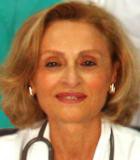
Area STEM: Scienze cliniche e scienza dell'alimentazione
Competenze: nefrologia
Parole chiave: complicazioni cardiovascolari dell'insufficienza renale, dialisi, epidemiologia delle malattie renali, genetica molecolare delle malattie renali, genetica molecolare dell'ipertensione arteriosa, insufficienza renale, ipertensione arteriosa, malattie renali progressive, trapianto di rene
Regione: Calabria
Funzione/Ruolo
Responsabile dell'Unità Operativa Complessa di Nefrologia, Dialisi e Trapianto dell'Azienda Ospedaliera "Bianchi-Melacrino-Morelli" di Reggio Calabria
Percorso professionale
Dopo la laurea in Medicina e Chirurgia all'Università di Messina nel 1978, prosegue la sua formazione attraverso una specializzazione in Nefrologia nel 1983 presso la stessa università. Nel biennio 1981-1982 è Clinical Scientist presso l'unità Renale e Trapianti del Western Infirmary a Glasgow, in Scozia. Dal 1993 al 1997 si specializza ulteriormente con un Master della Società Italiana Ipertensione Arteriosa (SIIA). Nel 1996 acquisisce un ulteriore livello di formazione post-universitaria in Epidemiologia clinica presso la Erasmus University di Rotterdam. Frequenta numerosi corsi, fra cui il Molecular Genetics Course alla Rotterdam University, l'Epidemiology Course, ERA-EDTA Registry di Roma nel 2004, e ulteriori High Quality Nephrology Courses. Nel 2001, consegue una specializzazione in Ipertensione arteriosa alla European Society of Hypertension. Attualmente Francesca Mallamaci dirige la U.O.C (unità operativa complessa) di Nefrologia, Dialisi e Trapianto dell'Azienda Ospedaliera "Bianchi-Melacrino-Morelli" di Reggio Calabria.
Risultati scientifici
Le aree di ricerca di Francesca Mallamaci comprendono l'ipertensione, le complicazioni cardiovascolari dell'insufficienza renale, le malattie renali progressive, l'epidemiologia delle malattie renali e la genetica molecolare delle malattie renali e dell'ipertensione arteriosa. Prende parte attivamente ai progetti di ricerca nazionali e internazionali e supervisiona l'attività dell'Unità di Ricerca di "Epidemiologia Clinica e Fisiopatologia delle malattie Renali e dell'Ipertensione arteriosa" del CNR di Reggio Calabria. Fino al 2015 è stata impegnata nel progetto internazionale "Lung Water by Ultra-Sound Guided treatment to prevent death and cardiovascular complications in high risk end stage renal disease patients with cardiomyopathy (LUST STUDY)". Il progetto prevede la creazione di un database contenente le informazioni dei test clinici effettuati sui pazienti, per indagare il sovraccarico di volume extracellulare che è un fattore di rischio per problemi cardiovascolari e renali. Lo scopo di questo studio clinico è quello di testare una politica di trattamento guidata da misurazioni extravascolari per prevenire la morte per insufficienza cardiaca scompensata e infarto nei pazienti in dialisi ad alto rischio. Francesca Mallamaci è inoltre coordinatrice clinica del Registro Internazionale EURECA-m supportato dalla Società Europea di Nefrologia, Dialisi e Trapianto (ERA-EDTA). L'obiettivo del registro è quello di individuare e validare la raccolta di fattori di rischio cardiovascolare tradizionali e non, in un campione rappresentativo di pazienti in dialisi in Europa.
Attività editoriali e pubblicazioni
Francesca Mallamaci è Associate Editor della rivista Nephrology Dialysis Transplantation e Editor Emeritus di Journal of Nephrology, la rivista ufficiale in lingua inglese della Società Italiana di Nefrologia (di cui è stata Editor in Chief dal 2006 al 2012).
È autrice di numerosi articoli pubblicati su riviste scientifiche nazionali ed internazionali, tra cui:
(2019) Mallamaci F, Tripepi G, D'Arrigo G, Borrelli S, Garofalo C, Stanzione G, Provenzano M, De Nicola L, Conte G, Minutolo R, Zoccali C. Blood Pressure Variability, Mortality, and Cardiovascular Outcomes in Chronic Kidney Disease Patients. Clinical Journal of American Society of Nephrology, 14(2):233-240.
(2018) Mallamaci F, Tripepi R, D'Arrigo G, Porto G, Versace MC, Marino C, Sanguedolce MC, Testa A, Tripepi G, Zoccali C. Long-term blood pressure monitoring by office and 24-h ambulatory blood pressure in renal transplant patients: a longitudinal study. Nephrology Dialysis Transplantation, 34(9):1558-1564.
(2018) Mallamaci F, D'Arrigo G, Tripepi R, Leonardis D, Porto G, Testa A, Abd ElHafeez S, Mafrica A, Versace MC, Provenzano PF, Tripepi G, Mancini P, Zoccali C. Office, standardized and 24-h ambulatory blood pressure and renal function loss in renal transplant patients. Journal of Hypertension, 36(1):119-125.
(2017) Mallamaci F, Tripepi G. Pulmonary congestion and hypertension in hemodialysis patients, Giornale Italiano di Nefrologia, 34(Suppl 69):36-40.
(2016) Mallamaci F. Highlights of the 2015 ERA-EDTA congress: chronic kidney disease, hypertension. Nephrology Dialysis Transplantation, 31(7):1044-6.
(2016) Mallamaci F, Torino C, Tripepi G. Physical exercise in haemodialysis patients: time to start. Nephrology Dialysis Transplantation, 31(8):1196-8.
(2016) Mallamaci F, Tripepi R, Leonardis D, Mafrica A, Versace MC, Provenzano F, Tripepi G, Zoccali C. Nocturnal Hypertension and Altered Night-Day BP Profile and Atherosclerosis in Renal Transplant Patients. Transplantation, 100(10):2211-8.
(2015) Mallamaci F, Testa A, Leonardis D, Tripepi R, Pisano A, Spoto B, Sanguedolce MC, Parlongo RM, Tripepi G, Zoccali C. A genetic marker of uric acid level, carotid atherosclerosis, and arterial stiffness: a family-based study. American Journal of Kidney Diseases, 65(2):294-302.
(2015) Mallamaci F, Tripepi R, Leonardis D, Mafrica A, Versace MC, Provenzano F, Tripepi G, Zoccali C. Nocturnal Hypertension and Altered Night-Day BP Profile and Atherosclerosis in Renal Transplant Patients. Transplantation, 100(10):2211-8.
(2015) Mallamaci F, Testa A, Leonardis D, Tripepi R, Pisano A, Spoto B, Sanguedolce MC, Parlongo RM, Tripepi G, Zoccali C. A genetic marker of uric acid level, carotid atherosclerosis, and arterial stiffness: a family-based study.American Journal of Kidney Diseases, 65(2):294-302.
Riconoscimenti e premi
Diversi lavori della professoressa Mallamaci sono stati premiati in conferenze nazionali e internazionali come l'European Renal Association (ERA-EDTA) e il Congresso dell'American Society of Nephrology.
Nel campo dell'insufficienza renale cronica, è al 19° posto della classifica internazionale creata e periodicamente aggiornata dall'Università di Baltimora EXPERTSCAPE.
Nel 2014 ha presieduto il Comitato Scientifico del Congresso Nazionale della Società Italiana di Nefrologia. È inoltre componente del Comitato Scientifico del Congresso Europeo di Nefrologia, Dialisi e Trapianto (ERA-EDTA) di Vienna del 2016 e dello stesso comitato del congresso che si terrà a Madrid nel 2017. Francesca Mallamaci è stata inoltre formalmente invitata a rappresentare la Società Europea di Nefrologia, Dialisi e Trapianto ai Congressi della European Society of Paediatric Nephrology e dell'American Society of Nephrology del 2015.

Funzione/Ruolo
Professoressa associata di Psicologia dello Sviluppo Università di Padova
Percorso professionale
Dopo aver conseguito la laurea in Psicologia nel 2002 presso l’università di Padova, ha proseguito la sua formazione nello stesso ateneo con un Dottorato di Ricerca in psicologia (2006), durante il quale ha svolto dei periodi di ricerca all’estero presso il the Hospital for Sick Children (Toronto, Canada) e l’università di Gent (Belgio). Nel 2008 è ricercatrice in Psicologia dello Sviluppo. Nel 2013 è visiting researcher presso l’Universitè Catholique de Louvain-la-Neuve (Belgio), nel 2017 presso la Liverpool John Moores University (Regno Unito) e nel 2018 presso la Goldsmith University of London (Regno Unito). Dal 2013 è socia fondatrice dello spin-off universitario Lab.D.A., centro specializzato per la diagnosi e l’intervento nei disturbi dello sviluppo, e dal 2017 è responsabile di una delle sedi dello spin-off (Lab.D.A. Padova Nord). Dal 2014 è direttrice del master universitario in Psicopatologie dello Sviluppo, dell’Università di Padova.
Risultati scientifici
Fin dall’inizio delle sue ricerche ha approfondito lo studio del Disturbo Nonverbale, un disturbo del neurosviluppo caratterizzato da difficoltà di tipo visuospaziale e buone abilità verbali, sul quale ha pubblicato numerose ricerche su riviste internazionali. Per il suo contributo in questo ambito dal 2017 è stata invitata a far parte della Consensus Conference internazionale promossa dalla Columbia University, Institute of Psychiatry, New York (USA), che si propone come obiettivo il riconoscimento di questo disturbo, ancora poco conosciuto, nel manuale diagnostico internazionale dei disturbi mentali, DSM 5. Attualmente le sue ricerche sono volte a individuare somiglianze e differenze tra il Disturbo Nonverbale e altri disturbi evolutivi, quali l’autismo ad alto funzionamento e il disturbo da deficit di attenzione e iperattività(ADHD).
Un altro filone di ricerca di cui si è occupata riguarda il coinvolgimento di processi cognitivi (in particolare la memoria di lavoro visuospaziale) in diversi disturbi dello sviluppo, e in relazione agli apprendimenti (come per esempio la matematica). Più di recente, in collaborazione con l’Università di Cambridge, ha condotto delle ricerche sullo sviluppo dell’ansia per la matematica nei bambini e sulla relazione tra ansia e apprendimenti scolastici.
Tutti i risultati delle ricerche sono stati pubblicati in riviste scientifiche internazionali, e laddove i risultati consentivano applicazioni, sono stati prodotti test per bambini e materiali per l’intervento, pubblicati da case editrici specializzate.
Attività editoriali e pubblicazioni
Irene C. Mammarella è Academic Editor per PlosOnee fa parte dell’Editorial Board didiverse riviste scientifiche internazionali: Educational Psychology, Learning and Individual Differences e Journal of Experimental Child Psychology.
E’ autrice di numerose pubblicazioni internazionali, tra cui:
[2018] Cardillo, R., Menazza, C. & Mammarella, I. C. Visuoconstructive Abilities and Visuospatial Memory in Autism Spectrum Disorder Without Intellectual Disability: Is the Role of Local Bias Specific to the Cognitive Domain Tested?Neuropsychology. doi: 10.1037/neu0000472
[2018] Mammarella, I. C., Donolato, E., Caviola, S., & Giofrè, D. Anxiety profiles and protective factors: A latent profile analysis.Personality & Individual Differences, 124, 201-208. doi: 10.1016/j.paid.2017.12.017
[2018] Mammarella, I. C., Caviola, S., Giofrè, D. & Szücs, D. The underlying structure of visuospatial working memory in children with mathematical learning disability.British Journal of Developmental Psychology, 36, 220-235 doi: 10.1111/bjdp.12202
[2017] Mammarella, I. C., Caviola, S., Giofrè, D., & Borella, E. Separating math from anxiety: The role of inhibitory mechanisms.Applied Neuropsychology: Child, doi: 10.1080/21622965.2017.1341836
[2016] Hill, F., Mammarella, I. C., Devine, A., Caviola, S., Passolunghi, M. C. & Szücs, D. Maths anxiety in primary and secondary school students: Gender differences, developmental changes and anxiety specificity.Learning and Individual Differences, 48, 45-53.
[2016] Mammarella, I. C., Ghisi, M., Bomba, M., Bottesi, G., Caviola, S., Broggi, F. & Nacinovich, R. Anxiety and depression in children with Nonverbal learning disabilities, reading disabilities, or typical development.Journal of Learning Disabilities, 49, 130-139.
[2015] Mammarella, I. C., Hill, F., Devine, A., Caviola, S., & Szücs, D. Math anxiety and developmental dyscalculia: A study on working memory processes.Journal of Clinical and Experimental Neuropsychology, 37, 878-887.
[2014] Mammarella, I. C., & Cornoldi, C. An analysis of the criteria used to diagnose children with Non-verbal learning disabilities (NLD).Child Neuropsychology, 20, 255-280.
[2014] Mammarella, I. C., Giofrè, D., Caviola, S., Cornoldi, C., & Hamilton, C. Visuospatial working memory in children with Autism: The effect of semantic global organization. Research in Developmental Disabilities, 35, 1349-1356.
[2013] Mammarella, I. C., Bomba, M., Caviola, S., Broggi, F., Neri, F., Lucangeli, D., & Nacinovich, R. Mathematical difficulties in nonverbal learning disability or co-morbid dyscalculia and dyslexia.Developmental Neuropsychology, 38, 418-432.
[2013] Mammarella, I. C., Borella, E., Pastore, M., & Pazzaglia, F. The structure of visuospatial memory in adulthood.Learning and Individual Differences, 25, 99-110.
Riconoscimenti e premi
Irene C. Mammarella fa parte di diverse associazioni intenazionali: APS (Association for Psychological Science), MCLS (Mathematical Cognition and Learning Society), EARLI (European Association for Research on Learning and Instruction), IARLD (International Academy for Research in Learning Disabilities).
E’ inoltre nel consiglio direttivo dell’ Airipa (Associazione Italiana per la ricerca e l’intervento nella psicopatologia dell’apprendimento) e fa parte dell’AIP (associazione Italiana di Psicologia) sezione sviluppo ed educazione.
Dal 2017 è membro effettivo del Panel di sviluppo delle linee guida per la revisione delle raccomandazioni cliniche sui Disturbi Specifici dell’Apprendimento (DSA), promosso dall’Associazione Italiana Dislessia.

Funzione/Ruolo
Professoressa associata di Fisica all’Università degli studi di Cagliari e presso l’Istituto Nazionale di Fisica Nucleare
Percorso professionale
Dopo la laurea in Fisica presso l'Università di Cagliari, nel 1999, perfeziona la sua formazione con un dottorato di ricerca in Fisica all’Università di Oxford che consegue nel 2003. Nello stesso anno prosegue i suoi studi con un post-doc sempre in Inghilterra, prima a Oxford e poi all’Università di Liverpool. Dal 2000 al 2006, collabora come Associata Scientifica con il laboratorio Fermilab di Chicago, negli Stati Uniti. Nel 2007, rientra in Italia, a Cagliari, come ricercatrice all’INFN (Istituto Nazionale di Fisica Nucleare) e, l’anno successivo, all’Università. Dal 2012 al 2013 collabora con il laboratorio CERN di Ginevra. Nel 2015 vince un ERC Consolidator Grant con il CNRS (Centre National de la Recherche Scientifique) e si trasferisce a Orsay, Parigi, fino alla fine del 2016. Nel 2016 è anche visiting professor all’Università di Cambridge, UK. Nel 2017 diventa professoressa associata all’Università di Cagliari. Attualmente si occupa dello studio della fisica degli ioni pesanti con l’esperimento LHCb al CERN e guida un gruppo di ricerca di sei post-docs, due studenti e due ricercatori diviso tra Orsay e Cagliari.
Risultati scientifici
Nel 2002 osserva assieme ai colleghi dell’esperimento CDF (Collider Detector at Fermilab) il decadimento dei bosoni W e Z (particelle fondamentali del Modello Standard) in elettroni e ne misura la sezione d'urto di produzione e il rapporto per la prima volta a quell’energia, pubblicando il lavoro nella sua tesi di dottorato. Nel 2003 lavora con un gruppo di 14 persone dedite alla ricerca delle particelle supersimmetriche chargino e neutralino nel loro decadimento leptonico, arrivando a coordinarle e pubblicando il miglior limite mondiale in quel momento sulla loro massa e sezione d’urto di produzione. Nel 2007 diviene membro della collaborazione LHCb (Large Hadron Collider beauty) - esperimento dell'acceleratore LHC del CERN che ha lo scopo di misurare i parametri della violazione CP e decadimenti e fenomeni rari relativi agli adroni in cui è presente il quark beauty (quark b) - al CERN di Ginevra. Partecipa a diversi studi sulla produzione di stati associati di quark-antiquark (quarkonia) pubblicando diversi lavori in merito e collaborando con teorici esperti del campo. Dal 2009 al 2013 diventa la responsabile di tale fisica nell’esperimento. Nel 2015 fonda un nuovo gruppo di ricerca all’interno di LHCb aprendo la via alle misure di precisione di Quark Gluon Plasma ad alte rapidità, il suo attuale campo di ricerca.
Attività editoriali e pubblicazioni
È autrice di numerose pubblicazioni nazionali ed internazionali, tra cui:
(2017) Aaij R, Manca G et al. [LHCb Collaboration]. Study of prompt D0 meson production in pPb collisions at √snn = 5 TeV, Journal of High Energy Physics, 1710, 090.
(2014) Manca G. Review on quarkonia production at LHC, International Journal of Modern Physics A, 29, 1430014.
(2013) Aaij R, Manca G et al. [LHCb Collaboration]. Production of J/Ψ and Υ mesons in pp collisions at √s = 8 TeV, Journal of High Energy Physics, 1306, 064.
(2013)A.A. Alves Jr., G. Manca et al. [LHCb Muon Collaboration]. Performance of the LHCb muon system, Journal of Instrumentation, 8, P02022.
(2012) Aaij R, Manca G et al. [LHCb Collaboration]. Measurement of Υ production in pp collisions at √s = 7 TeV, European Physical Journal C, 72, 2025.
(2011) Aaij R, Manca G et al. [LHCb Collaboration] Measurement of J/Ψ production in pp collisions at √s = 7 TeV. European Physical Journal C, 71, 1645.
(2010) Anelli M, Manca G et al. [LHCb Muon Collaboration]. Performance of the LHCb muon system with cosmic rays, Journal of Instrumentation ,5, P10003.
(2007) Aaltonen T, Manca G et al. [CDF Collaboration]. Search for chargino-neutralino production in pp collisions at √s = 1.96 TeV, Phys. Rev. Lett. 99 191806.
(2008) Aaltonen T, Manca G et al. [CDF Collaboration]. Search for supersymmetry in pp collisions at √s = 1.96 TeV Using the tri-lepton signature of Chargino-Neutralino production, Physical Review Letters, 101, 251801.
(2005) D. Acosta, G. Manca et al. [CDF Collaboration]. First measurements of inclusive W and Z cross-sections from Run II of the Tevatron collider, Physical Review Letters, 94, 091803.
(2007) Abulencia A, Manca G et al. [CDF Collaboration]. Measurements of inclusive W and Z cross-sections in pp collisions at √s = 1.96 TeV, Journal of Physics G, 34,2457.
È revisora per le riviste Journal of High Energy Physics e European Physical Journal.
Riconoscimenti e premi
Nel 2005 vince la Particle Physcs and Astronomy Research Council fellowship per due anni. Nel 2015 ha vinto un ERC Consolidator Grant della durata di 5 anni per un totale di 1,9 milioni di euro.
Dal 2016 fa parte dell’AccademiaNet network.
È nella lista dei Top Italian Scientists dal 2012.

Funzione/Ruolo
Professoressa ordinaria di Psicologia Sociale presso l'Università Cattolica del Sacro Cuore di Milano
Percorso professionale
Dopo aver conseguito la laurea in Filosofia con indirizzo Scienze Umane presso l'Università Cattolica di Milano nel 1999, prosegue la sua formazione nello stesso Ateneo con un dottorato di ricerca in Psicologia Sociale e dello Sviluppo durante il quale collabora alle attività di ricerca e formazione del Centro di Ateneo Studi e Ricerche sulla Famiglia. Dal 2003 al 2005 è assegnista di ricerca in Psicologia Sociale presso il Dipartimento di Psicologia dell'Università Cattolica di Milano. Dall'anno successivo fino al 2016 è ricercatrice di Psicologia Sociale presso la Facoltà di Scienze della Formazione della Università Cattolica di Milano. Nel 2008 è visiting professor presso la University of Tennessee, nel dipartimento Child and Family Studies e nel 2016 ricopre lo stesso ruolo all'University of Sussex, nel dipartimento di Psychology. Nel 2009 è stata selezionata come consulente presso l'ufficio Research Methods and Data Analysis delle Nazioni Unite (ONU), Office of Internal Oversight Services (New York). Dal 2015 al 2019 è professoressa associata e, dal 2019, ordinaria di Psicologia Sociale presso la Facoltà di Scienze della Formazione della Università Cattolica di Milano.
Risultati scientifici
Claudia Manzi è una studiosa di processi di costruzione e sviluppo dell'identità, in particolare di motivazioni identitarie, identità adulta, identità correlata alla transizione, al pregiudizio etnico, alla differenziazione familiare, alla psicologia cross-culturale. Su questi temi ha collaborato, nel 2007, con l'Universidad de los Andes, Bogotà, in Colombia, per uno studio sui cambiamenti identitari nei periodi di transizione, e nello stesso anno con il Centre for the Study of Youth and Political Violence, dell'University of Tenneessee, presso il quale ha partecipato alla fase finale di analisi dei dati e pubblicazione dei risultati di un progetto coordinato dal World Health Organization's Program for Child and Adolescent Health and Development. Dal 2008 partecipa all'equipe di ricerca internazionale per il progetto di ricerca cross-culturale "Motivated identity construction in cultural context" finanziato dal Economic and Social Research Council (ESRC). Infine, dal 2014 fa parte dell'equipe di ricerca internazionale "World Relationship Study", finanziato da Japan Society for the Promotion of Science.
Attività editoriali e pubblicazioni
Claudia Manzi dal 2011 è componente dell'Editorial Board dell'Encyclopaedia of Quality of Life Research (Ed. A. Michalos), Springer di New York e referee di riviste internazionali di eccellenza come Journal of Personality, Journal of Marriage and Family, Journal of Adolescence, Journal of Early Adolescence, Self and Identity, Psychology of Individual Differences, Social Psychology.
È autrice di numerose pubblicazioni nazionali e internazionali fra cui:
(2017) Manzi C, Roccato M, Paderi F, Vitrotti S, Russo S. The social development of right-wing authoritarianism: The interaction between parental autonomy support and societal threat to safety. Personality and Individual Differences, 109: 1-4.
(2015) Manzi C, Roccato M, Russo S. What buffers right-wing authoritarian responses to threat? An experimental study to test the moderation of meaning. Personality and Individual Differences, 83:117-121.
(2015) Manzi C, Parise M, Iafrate R, Sedikides C, Vignoles VL. In so far as you can be part of me: The influence of intrusive parenting on young adult couple identity. Self & Identity, 14: 5, 570-582.
(2014) Manzi C, Brambilla M. Identity change. In A. Michalos (Eds.). Encyclopedia of Quality of Life Research, Dordrecht, Netherlands, Springer, 2167-2168.
(2014) Manzi C, Ferrari L, Rosnati R, Benet-Martinez V. Bicultural Identity Integration of Transracial Adolescent Adoptees: Antecedents and Outcomes. Journal of Cross Cultural Psychology, 45(6):888-904.
(2013) Brambilla M, Manzi C, Regalia C, Verkuyten M. Religiosity and Prejudice: Different Patterns for Two Types of Religious Internalization. The Journal of Social Psychology, 153:486-498.
(2011) Scabini E, Manzi C. Family Processes and Identity. In S. J. Schwartz, K. Luyckx, and V. L. Vignoles (Eds), Handbook of Identity Theory and Research, New York: Springer, 565-584.
(2010) Manzi C. Identità adulta nella letteratura psicosociale. In E. Marta, C. Regalia (Eds.), Identità in relazione. Le sfide odierne dell'essere adulto. Milano: The McGraw-Hill Companies, 17-31.
(2010) Manzi C, Vignoles V, Regalia C. Accommodating a new identity: Possible selves, identity change, and well-being across two life-transitions. European Journal of Social Psychology, 40:970-984.
(2006) Manzi C, Vignoles V, Regalia C, Scabini E. Cohesion and enmeshment revisited: Family differentiation, identity, and psychological well-being in two European cultures. Journal of Marriage and the Family, 68: 673-689.
Riconoscimenti e premi
Dal 2007 Claudia Manzi fa parte della European Association of Social Psychology, dal 2009 della Society for Personality and Social Psychology e dal 2014 della Associazione Italiana di Psicologia, sezione di Psicologia Sociale.
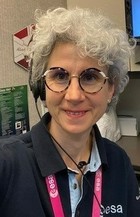
Area STEM: Ingegneria
Competenze: computazione elettromagnetica, ingegneria dei sistemi spaziale, ingegneria delle operazioni, valutazione programmatica e dei servizi operativi
Parole chiave: ESA (European Space Agency), International Space Station (ISS), ISS Payloads, JSC (Johnson Space Center), modulo Columbus, NASA (National Aeronautics and Space Administration)
Regione: ESTERO
Funzione/Ruolo
Operations and Project Engineer presso RHEA Group per l’ Agenzia Spaziale Europea (ESA).
Percorso professionale
Cecilia Marasini si laurea presso l'Università di Pisa in Ingegneria delle Telecomunicazioni nel 2001, includendo una borsa di studio di sei mesi in calcolo elettromagnetico presso la Chalmers University of Technology di Goteborg (Svezia) e uno stage di tre mesi in Hewlett Packard Consultant.
Nel 2001, inizia la sua carriera professionale come ingegnera di sistema e software presso il Centro Tecnologico Motorola di Torino, dove fa parte del team di test di interoperabilità per supportare l'integrazione di terminali UMTS/GSM e 3G nella rete dei servizi mobili.
Il suo interesse per la ricerca elettromagnetica applicata la riporta al mondo accademico e dal 2004 al 2007 svolge il dottorato di ricerca presso il TNO (Organizzazione dei Paesi Bassi per la Ricerca Scientifica Applicata) e l’Università Tecnica di Eindhoven in Olanda. Diventata ricercatrice, lavora nel gruppo Radar and Electronic Warfare presso TNO fino al 2009.
Nel 2010 si trasferisce nel campo dell'ingegneria aerospaziale ed entra a far parte del Gruppo RHEA per Agenzia Spaziale Europea (ESA-ESTEC, Paesi Bassi) nel Direttorato di Human and Robotics Exploration Spaceflight (HRE). Da allora, ricopre il ruolo di Operations e Project Engineer. Ha contribuito alla creazione e alla gestione programmatica della rete degli USOCs (User Support Operations Centres) per l'esecuzione e l'implementazione di payload europei sulla Stazione Spaziale Internazionale (ISS), elaborando concetti di operazioni di payload e processi operativi. Ha contribuito alla creazione e all'implementazione del Centro dei Dati Scientifici e dell’archivio dati per l'archiviazione, la valorizzazione e la pubblicazione dei dati degli esperimenti ESA eseguiti sulla ISS.
Nel 2019 e nel 2022, ha servito temporaneamente l’ufficio ESA Houston Liaison Office come rappresentante dell'ESA presso l'ISS Mission Management Center al Johnson Space Center (JSC) della NASA (Houston, Texas).
Nel 2021, assume un ruolo di ingegneria operativa nella definizione dei concetti di ESA Gateway Operations come prossimo passo per l'operabilità dei moduli ESA in orbita lunare.
Ha promosso le materie STEM nelle scuole primarie e medie in Italia e nei Paesi Bassi, presentando la sua esperienza come ispirazione alle giovani generazioni e alle ragazze in particolare.
Risultati scientifici
Il profilo scientifico di Cecilia Marasini è vario poiché ha iniziato la sua ricerca nelle tecniche di calcolo elettromagnetico mentre svolgeva la sua tesi di laurea in Ingegneria delle telecomunicazioni e ha ampliato la sua ricerca in tecniche di calcolo efficiente per la progettazione di antenne conseguendo un dottorato di ricerca solo dopo una esperienza professionale nel settore delle telecomunicazioni. La principale attività di ricerca si è basata sulla programmazione di un codice di calcolo efficiente utilizzando il metodo di Galerkin per rappresentare l’antenna e applicando una funzione di ottimizzazione Swarm con l’obiettivo di massimizzare il guadagno di antenna e minimizzare il Voltage Standing Wave ratio (VSWR).
Successivamente ha esteso il suo interesse al settore spaziale, lavorando principalmente alla definizione di concetti operativi per l'esecuzione degli esperimenti europei sulla Stazione Spaziale Internazionale e recentemente per gli elementi ESA sul Gateway.
Con l'obiettivo di centralizzare i dati scientifici degli esperimenti ISS europei, Cecilia ha lavorato alla definizione e all'implementazione del Science Data Archive / HRE Data Archive, contribuendo alla definizione di processi, prodotti e deliverables e gestendo il contratto di servizio associato.
Ha ampliato le sue capacità interdisciplinari e la sua esperienza di lavoro in ambienti internazionali assumendo il ruolo di rappresentante presso l'ISS Mission Management Center per l'ESA.
Attività editoriali e pubblicazioni
E’ autrice e co-autrice di varie pubblicazioni scientifiche internazionali, tra cui:
[2022] C. Marasini, A. Nitsch, T. Sheasby, ‘Implementing a Lean Operational Set-up for Gateway ESA Modules’, for presentation at International Astronautical Congress IAC 2022.
[2021] A. Laveron, C. Marasini, et. All, ‘The HRE Science Data Center: A new entity for storing, valorising and publishing the data coming from ESA experiments’, International Astronautical Congress, IAC 2021.
[2018] C. Marasini, A. Nitsch, ‘Implementing Experiments and Science Operations on ISS with a Network of Operations Centres’, Human Spaceflight and Weightlessness Science Workshop, Toulouse, France.
[2011] C. Leone, A. Rogovich, C. Marasini, S. Genovesi and A. Monorchio, ‘A dynamic particle swarm optimization for the design of loaded wire antennas’, IET Microwave, Antennas and Propagation Journal.
[2010] C. Marasini, A New Approach for Wire Antennas Design – Problem formulation and numerical implementation of Galerkin MoM embedded in a Particle Swarm Optimization Process, LAMBERT Academic Publishing, Germany, 2010, ISBN 978-3-8383-4153-8
[2009] C. Marasini and E.S.A.M. Lepelaars, ‘Static magnetic signature translation’, 6th International Marine Electromagnetics Conference, MARLEC 2009.
[2009] C. Marasini, E. S. A. M. Lepelaars and A. P. M. Zwamborn, ‘Interpolation algorithm for fast evaluation of EM coupling between wires’, Applied Computational Electromagnetic Society (ACES) Journal, vol.24 n.3.
[2008] C. Marasini, ‘Efficient Computation Techniques for Galerkin MoM Antenna Design, Ph.D. Dissertation’, Eindhoven University of Technology, Eindhoven, The Netherlands, June 2008, ISBN 978-90-386-1874-6
[2007] A. Rogovich, C. Marasini, A. Monorchio, E. S. A. M. Lepelaars and P. A. M. Zwamborn. ‘Design of Wire Antennas by Using an Evolved Particle Swarm Optimization Algorithm’. Invited paper at International Conference on Electromagnetics in Advanced Applications, ICEAA ’07.
[2007] C. Marasini, E. S. A. M. Lepelaars and P. A. M. Zwamborn, ‘Interpolation Algorithm for Fast Evaluation of EM Coupling between Wires’. Paper presentation at International Symposium on Electromagnetic Theory, EMTS ’07.
[2005] C. Marasini, E. S. A. M. Lepelaars and P. A. M. Zwamborn, ‘Analysis of the resonant behavior of a complex loaded wire by using the Exact Kernel MoM’. Paper presentation at International Conference on Electromagnetics in Advanced Applications, ICEAA ’05.
[2000] C. Marasini, A. Freni, P-S Kildal, ‘Analysis of mictrostrip antenna on a corrugated multilayer structure by using CG-FFT method and G1DMULT algorithm’, Antenna & Propagations AP2000, Millennium Conference.
Riconoscimenti e premi
Nel 2019 riceve il Certificato di eccellenza di RHEA Group per 10 anni di servizio.
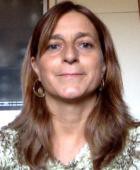
Funzione/Ruolo
Prima ricercatrice all’Istituto Nazionale di Geofisica e Vulcanologia, Centro Nazionale Terremoti; Responsabile dell’analisi dati per la sorveglianza e il monitoraggio sismico
Percorso professionale
Dopo la laurea in Geologia all’Università degli Studi di Roma La Sapienza nel 1991, prosegue gli studi attraverso una borsa di specializzazione all’estero in Sismologia presso lo United States Geological Survey di Menlo Park, CA, USA nel 1992- 1993. Nel 1994 continua la specializzazione presso l’Università degli studi de L’Aquila, dipartimento di Fisica e poi presso l’Istituto Nazionale di Geofisica (ING) di Roma che nel 2000 diventa Istituto Nazionale di Geofisica e Vulcanologia (INGV). Prosegue all’INGV la sua formazione e le sue ricerche prima come ricercatrice a contratto, poi come ricercatrice e nel 2003 come prima ricercatrice. Dal 1998 svolge i turni di sorveglianza sismica prima come turnista responsabile della Sala operativa, con il compito di allertare la Protezione Civile, servizio interrotto durante i periodi di maternità nel 2000 e nel 2002; poi nel 2015 si qualifica come turnista per allerta tsunami e infine oggi svolge i turni come funzionaria responsabile della comunicazione verso il Dipartimento di Protezione Civile (DPC).
Dal 2007 al 2014 è stata responsabile di un gruppo di ricerca costituito da 25 ricercatori che si occupano di sismologia e struttura dell’interno della terra, dal 2014 è responsabile di un gruppo di tecnici e ricercatori che si occupano dell’analisi dati per la sorveglianza e il monitoraggio sismico. Tra il 2009 ed il 2013 è stata coordinatrice della rete sismica mobile del Centro Nazionale Terremoti si è quindi occupata della organizzazione di attività di pronto intervento sismico. Ha coordinato importanti gruppi di lavoro in progetti nazionali e internazionali che hanno coinvolti istituti e Università Italiane, Europee e Statunitensi quali il progetto RETREAT (2002-2007), il progetto Messina 1908-2008 (2007-2009), il progetto INGV-DPC Test sites per il monitoraggio multidisciplinari di dettaglio (2007-2009), il progetto AlpArray (2015-2018). È responsabile di alcune delle attività che INGV svolge per il DPC e dell’accordo quadro con la Agenzia di Protezione Civile della Regione Lazio. Partecipa da sempre alle attività di divulgazione ed informazione dell’INGV rivolte alle scuole, al pubblico e ai media.
Risultati scientifici
I suoi interessi scientifici si sono concentrati negli ultimi anni sull’’analisi di sequenze sismiche per l’individuazione delle faglie attive e lo studio delle possibili variazione delle caratteristiche della crosta terrestre durante l’occorrenza delle sequenze stesse. Da circa 15 anni si occupa dell’analisi della birifrangenza delle onde sismiche per definire l’anisotropia sismica e lo stato di deformazione della crosta e del mantello terrestre. Questa analisi permette di caratterizzare il campo di fratturazione crostale e definire le sue relazioni con il campo di sforzo attivo e con la presenza di fluidi. La caratterizzazione dell’anisotropia sismica, quando fatta su onde che attraversano il mantello terrestre, ci consente invece di formulare modelli geodinamici a scala regionale: la zona di subduzione del tirreno meridionale, li dove la placca ionica scende al di sotto dell’arco calabro è stata la prima regione del mantello terrestre dove è stato osservato un flusso toroidale del mantello ai bordi della placca in subduzione (Civello e Margheriti 2004). Durante gli anni della formazione si è occupata dello studio degli effetti di sito cioè di come le onde sismiche vengono amplificate e modificate dalla geologia di superficie specialmente quando si hanno depositi incoerenti siano essi fluviali o di versante, e dalla conformazione topografica dell’area attraversata dallo scuotimento sismico. Nel 1993 è stata tra le prime a utilizzare le registrazioni delle vibrazioni ambientali (noise sismico) per caratterizzare la risposta di siti che avevano registrato il terremoto di San Francisco del 1989.
Attività editoriali e pubblicazioni
È autrice di circa 70 pubblicazioni scientifiche internazionali, tra cui:
(2016) Baccheschi P, Pastori M, Margheriti L, Piccinini D. Shear wave splitting of the 2009 L'Aquila seismic sequence: fluid saturated microcracks and crustal fractures in the Abruzzi region (Central Apennines, Italy). Geophysical Journal International, 204 (3): 1531-1549.doi: 10.1093/gji/ggv536
(2014) Margheriti L, Lucente FP, Park J, Pondrelli S, Levin V, Steckler MS, Baccheschi P, Salimbeni S. Large-scale coherent anisotropy of upper mantle beneath the Italian peninsula comparing quasi-Love waves and SKS splitting. Journal of Geodynamics, DOI: 10.1016/j.jog.2014.07.007
(2014) Govoni A, Marchetti A, De Gori P, Di Bona M, Pio Lucente F, Improta L, Chiarabba C, Nardi A, Margheriti L, Piana Agostinetti N, Di Giovambattista R, Latorre D, Anselmi M, Ciaccio MG, Moretti M, Castellano C, Piccinini D. The 2012 Emilia seismic sequence (Northern Italy): Imaging the thrust fault system by accurate aftershocks location Tectonophysics. http://dx.doi.org/10.1016/j.tecto.2014.02.013
(2013) Salimbeni S, Pondrelli S, Margheriti L. (2013). Hints on the deformation penetration induced by subductions and collision processes: Seismic anisotropy beneath the Adria region (Central Mediterranean).Journal of Geophysical Research: Solid Earth, DOI: 10.1002/2013JB010253
(2011) Baccheschi P, Margheriti L, Steckler M S & Boschi E. Anisotropy patterns in the subducting lithosphere and in the mantle wedge: A case study—The southern Italy subduction system. Journal of Geophysical Research, 116, B08306.
(2010) Lucente FP, Gori PD, Margheriti L, Piccinini D, Bona MD, Chiarabba C, Agostinetti NP. Temporal variation of seismic velocity and anisotropy before the 2009 MW 6.3 L'Aquila earthquake. Italy: Geology, 38:1015–1018, doi: 10.1130/G31463.1.
(2004) Civello S and Margheriti L. Toroidal mantle flow around the Calabrian slab (Italy) from SKS splitting, Geophysical Reserach Letters, 31, L10601, doi:10.1029/2004GL019607.
(2000) Margheriti L, Azzara MR, Cocco M, Delladio A and Nardi A. Analysis of borehole broad-band recordings: Test sute in the Po basin, Northern Italy. Bulletin of the Seismological Society of America, 90, 6:1454-1463.
(1996) Margheriti L, Nostro C, Cocco M and Amato A. Seismic anisotropy beneath the northern Apennines (Italy) and its tectonic implications. Geophysical Reserach Letters, 23; 20:2721-2724.
(1994) Margheriti L, Boatwright J, Wennerberg L. A comparison of Coda and S-wave spectral ratios as estimates of site response in the Southern San Francisco Bay area. Bulletin of the Seismological Society of America, 84, 6:1815-1830.
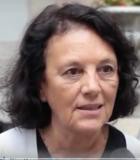
Funzione/Ruolo
Geriatra presso l'Istituto Auxiologico Italiano "Mosé Bianchi" di Milano
Percorso professionale
Dopo aver conseguito la laurea in Medicina e Chirurgia, all'Università degli Studi di Milano, dal 1976 prosegue la sua formazione come ricercatrice in Medicina Interna fino 1991. Dal 2007 al 2010 dirige il laboratorio di ricerca sperimentale sull'invecchiamento dell'IRCCS Istituto Auxologico Italiano e Università di Milano e del Dipartimento di Scienze Mediche e Riabilitative ad indirizzo Geriatrico-Cardio-Vascolare dell'IRCCS Istituto Auxologico Italiano. Fino al 2014 è responsabile della Scuola di Specializzazione in Geriatria, e del Cdl Magistrale in Scienze Riabilitative delle Professioni Sanitarie. Dal 2010 al 2016 dirige l'U.O.C. (unità operativa complessa) di Geriatria della Fondazione IRCCS Ca' Granda Ospedale Maggiore Policlinico di Milano in convenzione con l'Università degli Studi di Milano, dove nello stesso periodo insegna come professoressa associata di Geriatria, presso il Dipartimento di Scienze Cliniche e di Comunità. Dal 2020 è geriatra presso l'Auxiologico "Mosé Bianchi", il centro di ricovero e cura a carattere scientifico dell'Istituto Auxiologico Italiano con sede a Milano.
Risultati scientifici
Daniela Mari dirige da molti anni il gruppo di ricerca di Milano che studia i fattori di rischio cardiovascolari e loro varianti genetiche nella longevità e nei centenari, e le malattie neurodegenerative nell'anziano. Durante il periodo trascorso come responsabile del laboratorio di ricerca sperimentale sull'invecchiamento dell'Istituto Auxologico Italiano di Milano, Daniela Mari e colleghi si concentrano sullo studio delle basi genetiche della longevità, indagando le caratteristiche di un largo numero di figli settantenni di centenari. A tale scopo ricorrono anche all'analisi di metilazione del DNA, ovvero a una modificazione epigenetica del DNA, processo che consiste nel legame di un gruppo metilico (un atomo di carbonio legato a tre atomi di idrogeno) a una base azotata. Indagano anche il rapporto dose-efficacia della terapia anticoagulante orale (TAO) nell'anziano, i fattori di rischio genetici e non nelle malattie cerebrovascolari e l'influenza dell'obesità e dello stato metabolico sull'invecchiamento e le malattie età-correlate.
Attività editoriali e pubblicazioni
Daniela Mari è Associate Editor nell' Editorial Board della rivista Journal of Gerontology & Geriatrics (JGG).
È inoltre autrice di numerose pubblicazioni scientifiche nazionali ed internazionali, fra cui:
(2016) Esposito S, Mari D, Bergamaschini L, et al. Pneumococcal colonization in older adults.Immunity & Ageing, 13(1).
(2016) Abbate C, Trimarchi PD, Rotondo E, Mari D, et al. Spontaneous confabulations in amnestic-mild cognitive impairment due to Alzheimer's disease: a new (yet old) atypical variant?. Neurocase.
(2016) Muscogiuri D, Mari D, et al. 25 Hydroxyvitamin D Deficiency and Its Relationship to Autoimmune Thyroid Disease in the Elderly. International Journal of Environmental Research and Public Health, 13(9):850.
(2016) Abbate C, Caputo L, Damanti S, Mari D, et al. Reversible Parkinson's Dementia Associated with Withdrawal of Androgen-Deprivation Therapy for Prostate Cancer. Journal of the American Geriatrics Society.
(2016) Arosio B, Casati M, Gussago C, Mari D, et al. Adenosine Type A2A Receptor in Peripheral Cell from Patients with Alzheimer's Disease, Vascular Dementia, and Idiopathic Normal Pressure Hydrocephalus: A New/Old Potential Target. Journal of Alzheimer's disease, 54(2):1-9.
(2016) Ogliari G, Smit RAJ, van der Spoel E, Mari D, et al. Thyroid Status and Mortality Risk in Older Adults With Normal Thyrotropin: Sex Differences in the Milan Geriatrics 75+ Cohort Study. The Journals of Gerontology Series A Biological Sciences and Medical Sciences.
(2016) Dionigi Rossi P, Bilotta C, Consonni D, Mari D, et al. Predictors of clinical events occurring during hospital stay among elderly patients admitted to medical wards in Italy.European Journal of Internal Medicine, 32.
(2016) Gussago C, Arosio B, Guerini F, Mari D, et al. Impact of vitamin D receptor polymorphisms in centenarians.Endocrine.
(2016) Oldoni E, Fumagalli GG, Serpente M, Mari D, et al. PRNP P39L Variant is a Rare Cause of Frontotemporal Dementia in Italian Population. Journal of Alzheimer's disease: JAD, 50(2).
(2015) Hovath S, Pirazzini C, Bacalini MG, Mari D, et al. Decreased epigenetic age of PBMCs from Italian semi-supercentenarians and their offspring. Aging, 7(12).
Daniela Mari è anche autrice del saggio scientifico divulgativo A spasso con i centenari.. L'arte di vivere bene invecchiando (Il Saggatiore, 2017).
Riconoscimenti e premi
Daniela Mari ha ottenuto un grant dal MIUR, dal Ministero della Salute e dalla Regione Lombardia per gli studi sull'emostasi, la genetica dell'invecchiamento e la longevità. Dal 2010 a oggi è componente del tavolo Regionale per l'appropriatezza in Medicina e del "Gruppo Fondamentale" Tavolo Tecnico Regionale della Direzione Generale Sanità Regione Lombardia. Nel 2012 riceve la carica di "Scientific Expert" dell'Agence Nationale de la Recherche francese per la revisione di progetti di ricerca. Dal 2013 fa parte dell'albo dei revisori per la valutazione dei programmi e dei prodotti di ricerca ministeriale (ANVUR), dallo stesso anno fa parte dell'Action-Group A3 della Commissione Europea "European Innovation Partnership on Active and Healthy Ageing: Action For Prevention Of Functional Decline And Frailty". Daniela Mari è inoltre partner nello studio Europeo: MID- FRAIL Study FP7-Health 2011.

Funzione/Ruolo
Professoressa Emerita di Analisi Numerica all'Università di Pavia
Percorso professionale
Consegue la laurea in Matematica all'Università di Pavia nel 1970, e lavora come ricercatrice presso l'Istituto di Analisi Numerica (ora IMATI-CNR) di Pavia dal 1973 al 1990. Dallo stesso anno è professoressa di Analisi Numerica presso la facoltà di Scienze dell'Università di Genova, e dal 1993 è Professoressa Ordinaria della stessa materia presso la facoltà di Ingegneria dell'Università di Pavia. Attualmente è professoressa emerita di Analisi Numerica presso il Dipartimento di Matematica dell'Università di Pavia.
Risultati scientifici
Gli interessi di ricerca di Luisa Donatella Marini riguardano i metodi numerici per equazioni alle derivate parziali (equazioni che coinvolgono le derivate parziali di una funzione incognita di più variabili indipendenti) con applicazioni alla deformazione di corpi elastici, alla simulazione di dispositivi semi-conduttori, alla meccanica dei fluidi. Un particolare interesse è stato dedicato alle tecniche di discretizzazione (per passare da un problema la cui incognita è una funzione a un problema la cui incognita è un insieme finito di numeri, risolvibile con un calcolatore) e in questo ambito ai metodi cosiddetti di Galerkin e alle loro varianti, introdotte per migliorarne le prestazioni. Tali varianti devono essere adeguate alle diverse caratteristiche di problemi che provengono da contesti applicativi diversi: la filtrazione dell'acqua attraverso strati di terra, la risposta di un dispositivo semiconduttore alla variazione del potenziale elettrico applicato, la flessione di una struttura con uno spessore sottile sottoposta ad un carico trasversale, il trasporto di un inquinante lungo un corso d'acqua etc.
Attività editoriali e pubblicazioni
Luisa Donatella Marini ha fatto parte, dal 1988 al 1993, del Comitato di Redazione della rivita SISC (SIAM Journal on Scientific and Statistical Computing), e dal 2001 è parte del Comitato di Redazione dela rivista CMAME (Computer methods in Applied Mechanics and Engineering) due delle riviste internazionali di Calcolo Scientifico più prestigiose, e dal 2008 è anche parte del Comitato di Redazione dell'Italian Journal of Pure and Applied Mathematics. Collabora inoltre al processo di selezione degli articoli da pubblicare su numerose altre importanti riviste internazionali.
È inoltre autrice di più di 100 pubblicazioni nazionali ed internazionali, tra cui:
(2016) Beirao da Veiga L, Brezzi F, Marini LD, Russo A. Virtual Element Methods for general second order elliptic problems on polygonal meshes. Mathematical Models and Methods in Applied Sciences, 26(4):729-750.
(2013) Beirao da Veiga L, Brezzi F, Cangiani A, Manzini G, Marini LD, Russo A.
Basic principles of Virtual Element Methods. Mathematical Models and Methods in Applied Sciences, 23(1):199-214.
(2013) Beirao da Veiga L, Brezzi F, Marini LD. Virtual Elements for linear elasticity problems, SIAM Journal on Numerical Analysis, 51(2):794-812.
(2009) Ayuso B, Marini LD. Discontinuous Galerkin methods for advection-diffusion-reaction problems. SIAM Journal on Numerical Analysis, 47(2):1391-1420.
(2006) Brezzi F, Cockburn B, Marini LD, Süli E. Stabilization mechanisms in discontinuous Galerkin finite element methods. Computer Methods in Applied Mechanics Engineering, 195(25-28), 3293-3310.
(2005) Arnold DN, Brezzi F, Marini LD. A Family of Discontinuous Galerkin Finite Elements for the Reissner-Mindlin plate. Journal of Scientific Computing, 22(1): 25-45.
(2002)Arnold DN, Brezzi F, Cockburn B, Marini LD, Unified analysis of Discontinuous Galerkin Methods for Elliptic Problems. SIAM Journal on Numerical Analysis, 39(5):1749-1779.
(1989) Marini LD, Quarteroni A. A relaxation procedure for domain decomposition methods using finite elements. Journal of Numerical Mathematics, 55:575-598.
(1985) Marini LD. An inexpensive method for the evaluation of the solution of the lowest order Raviart-Thomas mixed method. SIAM Journal on Numerical Analysis, 22 (3):493-496.
(1985) Brezzi F, Douglas J jr., Marini LD. Two families of mixed finite elements for second order elliptic problems. Journal of Numerical Mathematics, 47:217-235.
Riconoscimenti e premi
Luisa Donatella Marini ha co-organizzato il mini simposio "Applications of the Virtual Element Method" alla Conferenza GAMM (International Association of Applied Mathematics and Mechanics) di Lecce, 2015. Fa inoltre parte della General Assembly e del Managing Board di ECCOMAS (European Community on Computational Methods in Applied Sciences) ed è componente dell'European Academy of Science dal 2010.
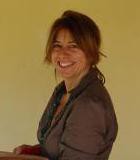
Funzione/Ruolo
Professoressa ordinaria di Geodesia e Geomatica nei Corsi di Laurea in Ingegneria Civile Sicurezza e Protezione Civile e Aerospaziale all’Università di Roma La Sapienza; CEO di SurveyLAb srl
Percorso professionale
Dopo la laura in Fisica nel 1987 con una tesi sulla missione satellitare LAGEOS per lo studio dei Movimenti Crostali nell’Area del Mediterraneo prosegue la sua formazione con un dottorato di ricerca presso l’Università degli studi di Bologna in Scienze Geodetiche e Topografiche, discutendo una tesi sulle Tecniche della Geodesia Spaziale (SLR E GPS) applicate allo Studio delle Deformazioni. Nel 1992 diventa ricercatrice presso l’Università di Roma Sapienza Dal 1003 al 1005 è Visiting Scientist presso l’USGS a Reston (Virginia), dove lavora su progetti per l’integrazione dati GPS/INS per la georeferenziazione di dati acquisiti tramite rilievi aerei. Dal 2001 è professoressa associata alla Facoltà di Ingegneria Civile e Industriale dell'Università di Roma La Sapienza e dal 2020 professoressa ordinaria al Dipartimento di Ingegneria Civile Edile e Ambientale, dello stesso Ateneo.
Durante la sua carriera accademica tiene corsi di Alta Formazione su Image Analysis Remote Sensing Techniques e GIS e su Tecniche di rilievo aeree per le catastrofi naturali e fa parte del Collegio Docenti del Dottorato in Geoinformazione dell’Università di Tor Vergata. Attualmente partecipa al Dottorato in Ingegneria delle Infrastrutture e Trasporti della Sapienza.
Nel 2008 fonda lo spin-off della Sapienza Survey Lab dedicato allo sviluppo di sistemi innovativi per il controllo del territorio e delle infrastrutture civili utilizzando sensori in situ e osservazioni satellitari (GNSS e DInSAR). Attualmente è CEO di Survey Lab.
Risultati scientifici
L’attività principale di Maria Marsella è la ricerca sulle tecniche geodetiche e geomatiche per il monitoraggio del territorio e la tutela delle infrastrutture civili. È esperta nell’acquisizione ed elaborazione di dati di osservazione della terra con sensori ottici e SAR e di dati di geodesia spaziale. Ha condotto studi e ricerche per lo sviluppo di modelli interpretatavi e previsionali in aree soggette a rischio idrogeologico e in aree vulcaniche attive, basandosi sull’integrazione di dati di telerilevamento aereo e satellitare con misure in situ. Ha coordinato numerosi progetti di ricerca finanziati da enti nazionali quali il MIUR, l’Agenzia Spaziale Italiana, il Diartimento Protezione Civile dell’Istituto Nazionale di Geofisica e Vulcanologia, e progetti europei nell’ambito dei programmi EU FP7 e H2020.
Attività editoriali e pubblicazioni
E’ autrice di oltre cento pubblicazioni fra cui:
(2016) Scifoni S, Bonano M, Marsella M, Sonnessa A, Tagliafierro V, Manunta M. On the joint exploitation of long-term DInSAR time series and geological information for the investigation of ground settlements in the town of Roma (Italy). Remote Sensing of Environment, 182:113-127 3.
(2015) Palenzuela JA, Marsella M, Nardinocchi C, Pérez JL, Fernández T. Landslide detection and inventory by integrating LiDAR data in a GIS environment. Landslides, 12(6):1035-1050,9.
(2015) Marsella M, D’Aranno PJV, Scifoni S, Sonnessa A, Corsetti M. Terrestrial laser scanning survey in support of unstable slopes analysis: the case of Vulcano Island (Italy). Natural Hazards, 78(1):443-459,5.
(2012) Marsella M, Baldi P, Coltelli M, Fabris M.The morphological evolution of the Sciara del Fuoco since 1868: reconstructing the effusive activity at Stromboli volcano. Bulletin of Volcanology, 74,1:231-248.
(2009) Proietti C, Coltelli M, Marsella M, Fujita E. A quantitative approach for evaluating lava flow simulation reliability: LavaSIM code applied to the 2001 Etna eruption. Geochemistry Geophysics Geosystems,10,9.
(2008) Manunta M, Marsella M, Zeni G, Sciotti M, Atzori S, Lanari R. Two-scale surface deformation analysis using the SBAS-DInSAR technique: a case study of the city of Rome Italy.International Journal of Remote Sensing, 29,6:1665-1684.
(2008) Baldi P, Coltelli M, Fabris M, Marsella M, Tommasi P. High precision photogrammetry for monitoring the evolution of the NW flank of Stromboli volcano during and after the 2002-2003 eruption. Bulletin of Volcanology, 70,6:703-715.
(2007) Vicari A, Herault A, Del Negro C, Coltelli M, Marsella M, Proietti C. Modeling of the 2001 lava flow at Etna volcano by a cellular automata approach. Environmental Modelling & Software, 22,10:1465-1471.
(2005) Baldi P, Fabris M, Marsella M, Monticelli R. Monitoring the morphological evolution of the Sciara del Fuoco during the 2002 - 2003 Stromboli eruption using multi-temporal photogrammetry. ISPRS, Journal of Photogrammetry and Remote Sensing, 59,4:199-211.
(2002) Baldi P, Bonvalot S, Briole P, Coltelli M, Gwinner K, Marsella M, Puglisi G, Remy D. Validation and comparison of different techniques for the derivation of digital elevation models and volcanic monitoring (Vulcano Island Italy). International Journal of Remote Sensing, 23,22:4783-4800.
Riconoscimenti e premi
Nel 2017 viene chiamata a far parte del Comitato Tecnico Scientifico per il Commissario del Governo per la ricostruzione nei territori interessati dal sisma del 24 agosto 2016 presso la Presidenza del Consiglio dei Ministri.
Nel marzo 2016 Survey Lab, di cui è CEO, ha vinto la Call H2020 SME Instrument-Phase II-Space con il progetto IMODI (Monitorare con i satelliti la stabilità di edifici e infrastrutture).
Dal 2011 al 2014 è stata esperta per la Valutazione della Qualità della Ricerca (VQR-ANVUR).
Fra il 2002 e il 2013 è stata esperta valutatrice di progetti per la Call Aeronautica e Spazio dei programmi quadro per lo sviluppo tecnologico della Commissione Europea FP6 e FP7.
Nel 2002 e 2003 e poi ancora nel 2017 ha collaborato con il Dipartimento di Protezione Civile Nazionale per la gestione delle Emergenze Stromboli 2002-03 e 2017.
Fa parte del Consiglio Direttivo del Centro di Ricerca Aerospaziale della Sapienza (CRAS).

Funzione/Ruolo
Direttrice di Ricerca, Sviluppo e Strategia alla Medicaltech srl. Presidente emerita di Talent4Rise
Percorso professionale
Dopo la laurea in informatica, continua i suoi studi con una specializzazione in cibernetica / intelligenza artificiale e ingegneria dei sistemi elettronici. Dal 1989 è ricercatrice presso il Laboratorio Centrale di Ricerca di un'importante e innovativa azienda italiana di telecomunicazioni. Successivamente ha iniziato a contribuire ad alcuni comitati di standardizzazione internazionali, in particolare quello relativo al linguaggio VHDL. Dal 1993 è stata responsabile di progetti di R&S su aree relative a strumenti di automazione della sintesi logica, utilizzando sistemi esperti, reti neurali, logica fuzzy e coordinatrice di progetti, in ambito internazionale, per la ricerca e l'applicazione di algoritmi di codifica e decodifica video. Dal 2000 è stata responsabile di progetti di Multimedia Content Delivery e Architetture di rete. Nel 2013 ha coordinato attività relative alla telemedicina e al risparmio energetico per la smart city in collaborazione con Monzino e il Centro Cardiologico di Milano Ricerche. Nel 2014 ha vinto una selezione pubblica per titoli per una collaborazione con l'Università degli Studi di Milano presso il Dipartimento di Scienze Farmacologiche e Biomolecolari. Nel 2013 fonda, con un gruppo di colleghe, un'associazione di donne (Talent4Rise, che sotto la sua direzione diventerà socio fondatore della Fondazione Triulza, padiglione della società civile per EXPO2015). L'obiettivo è quello di dare visibilità ai talenti femminili STEM. Ha ricoperto la carica di presidente e membro del consiglio generale della Fondazione Triulza fino al 2016. Successivamente è stata nominata presidente emerita e vicepresidente e, nello stesso periodo, è stata nominata direttore del marketing strategico di un'azienda ICT. Dal 2014 è membro del Consiglio di Amministrazione di una società in house di un comune dell'hinterland milanese che raggruppa le farmacie locali.
Risultati scientifici
Da circa 30 anni Mirella Mastretti si occupa di aree innovative sia come ricercatrice e docente di alta formazione, sia come manager in contesti accademici, della società civile e di aziende ICT. Le sue attività hanno riguardato il coordinamento di progetti finanziati a livello nazionale e internazionale. Membro di comitati scientifici e di standardizzazione internazionali, ha contribuito alla definizione del linguaggio VHDL, all'implementazione di originali strumenti di sintesi logica (brevettati) e ad algoritmi innovativi per applicazioni audio/video, AI (Artificial Intelligence) e reti neurali.
Ha sempre gestito progetti e occasioni per vivacizzare il dibattito sull'innovazione in ambito sanitario e life-science, sul ruolo della scienza e della tecnologia nella società, con particolare attenzione a metodi, strumenti e tecnologie, per garantire una buona qualità di vita e assistenza a persone croniche o anziane e per la formazione inclusiva; il tutto si è svolto in un contesto di "sharing economy" che vede la collaborazione tra aziende, mondo accademico e terzo settore
Attività editoriali e pubblicazioni
[1990] Antoniazzi S., Mastretti M. An Interactive Environment for Hardware/Software System Design at the Specification Level. Microprocessing and Microprogramming, vol. 30.
[1991] Antoniazzi S., Mastretti M. An Architectural Design Support Environment for High-Performance Digital Systems. Microprocessing and Microprogramming, vol.32.
[1994 ]Balboni A., Mastretti M., Stefanoni M. Static Analysis of VHDL ModelEvaluation. Proceedings of EURO-VHDL.
[1995] Mastretti M., Sturlesi M. Tomasello S. Static Analysis of VHDL Code: Simulation Efficiency and Complexity. Proceedings VHDL: Champions of the Second Generation, San Diego, California.
[1995] Mastretti M., Sturlesi M. Tomasello S., Busi M., Sarvello R. VHDL Quality: Syhtnesizability, Complexity and Efficiency Evaluation. European Design Automation Conference with EURO-VHDL ’95, Brighton, September.
[1996] Mastretti M., Sturlesi M., Tomasello S. Quality Measures and Analysis: A Way to improve VHDL Models, Hardware Component Modeling. Kluwer Academic Publisher.
[1996] Mastretti M., Sturlesi M. Tomasello S., Busi M., Sarvello R. Static Analysis of VHDL Code: the SAVE project. Proceedings of 3rd International Conference on Achieving Quality in Software (AquIS’96).
[1996]Mastretti M. Current Issues in Electronic Modeling. Kluwer Academic Publisher.
[1998] Mastretti M., Paolillo E., Di Bello P., Mercandalli D. Technologies for the Information Society, Developments and Opportunities, IOS Press.
[1999] Boscolo M., Mastretti M., Paolillo E. Technology as the Catalyst of Users' Acceptance in Electronic Commerce. Flexible Working, New Network Technologies, pp. 121-132.
[2015] Mastretti M. Best Practices for EXPO2015, Tecniche Nuove.
[2016] Mastretti M. Impresa che funziona - come finanziare ricerca e innovazione con i fondi pubblici, Sandit.
Riconoscimenti e premi
Nel 1989 riceve il premio "Milano Ricerche".
Nel 2012 riceve il Premio "Progetto Regione Lombardia" (SURE-SMAU)
Nel 2014 riceve il "Premio Camera di Commercio di Milano", per il progetto Rise2Up
Nel 2015 è nominata "Digital champion", ambasciatrice dell’innovazione, da Riccardo Luna, su incarico del Presidente del Consiglio.
Nel 2016 è nominata Presidente emerita di Talent4Rise.

Funzione/Ruolo
Direttrice associata per la Robotica e Direttrice del Laboratorio di Soft Robotics Boinispired all'Istituto Italiano di Tecnologia (IIT)
Percorso professionale
Dopo aver conseguito la laurea in Scienze Biologiche presso l'università degli Studi di Pisa nel 1995, entra a far parte dell'Istituto di Biofisica del Consiglio Nazionale delle Ricerche (CNR), dove si occupa di tematiche ambientali e in particolare dell'inquinamento da mercurio. Dal 1997 al 1998 segue un master in Gestione e Controllo dell'Ambiente (EMAS) alla Scuola Superiore Sant'Anna di Pisa (SSSA), con stage presso l'Ufficio Rischi Esteri di Responsabilità Civile e Infortuni, delle Assicurazioni Generali S.p.A. di Trieste. L'anno successivo è assistente di ricerca presso il Centro di Ricerca in Microingegneria (CRIM Lab) della Scuola Superiore Sant'Anna di Pisa, ruolo che ricopre fino al 2004. Dallo stesso anno fino al 2009 è Ricercatrice di Ingegneria Biomedica presso la stessa Scuola Superiore Sant'Anna. Nel novembre 2009 diventa Team Leader al Centro di Micro Bio-Robotica (CMBR) dell'Istituto Italiano di Tecnologia (IIT) di Genova. Nel 2011 consegue un dottorato di ricerca in Ingegneria dei Microsistemi presso l'Università Tor Vergata di Roma. Nello stesso anno diventa coordinatrice del CMBR dell'IIT, posizione che mantiene fino a marzo del 2021, quando diventa Direttrice associata per la Robotica e Direttrice del Laboratorio di Soft Robotics Boinispired, sempre presso l'IIT.
Risultati scientifici
L'ambito di ricerca di Barbara Mazzolai è la robotica soft e bioispirata, un'evoluzione della robotica che prevede l'utilizzo di materiali non rigidi e ispirati al mondo vivente, in particolare agli animali invertebrati e alle piante. Durante il suo periodo al CRIM Lab della Scuola Superiore Sant'Anna, Barbara Mazzolai fonda un nuovo ambito di ricerca specificatamente dedicato alle microtecnologie e alla robotica applicabili all'ambiente e all'agroalimentare, svolge il ruolo di project manager di progetti europei come Octopus, mirato allo sviluppo di un robot soft ispirato all'Octopus vulgaris, e DustBot, una rete di robot autonomi utilizzabili per la raccolta dei rifiuti porta-a-porta e per il miglioramento dell'igiene urbana. Arrivata alla direzione del Centro di Micro Bio-Robotica dell'IIT, fonda una nuova linea di ricerca nel campo della robotica bioispirata e soft robotics denominata "Plantoid", che mira alla realizzazione per la prima volta a livello mondiale di robot ispirati ai movimenti, alle capacità sensoriali e di comunicazione delle piante e delle loro radici per l'esplorazione del suolo e il monitoraggio ambientale.
Attività editoriali e pubblicazioni
Barbara Mazzolai è membro del gruppo editoriale di varie riviste scientifiche, quali Bioinspiration & Biomimetics, Soft Robotics, Biomimetics, Robotics & Automation Letters, Frontiers in Bionics and Biomimetics, Micro-BioRobotics.
È autrice di numerose pubblicazioni su riviste scientifiche internazionali, fra cui:
(2016) Laschi C, Mazzolai B, Cianchetti M. Soft robotics: Technologies and systems pushing the boundaries of robot abilities. Science Robotics, 1:(1).
(2016) Larson C, Peele B, Li S, Robinson S, Totaro M, Beccai L, Mazzolai B, Shepherd R. Highly stretchable electroluminescent skin for optical signaling and tactile sensing. Science, 351(6277): 1071-1074.
(2016) Argiolas A, Puleo GL, Sinibaldi E, Mazzolai B. Osmolyte cooperation affects turgor dynamics in plants. Scientific Reports, 6.
(2016) Mazzolai B, Mattoli V. Robotics: Generation soft. Nature, 536 (7617), 400-401.
(2014) Sadeghi A, Tonazzini A, Popova L, Mazzolai B. A Novel Growing Device Inspired by Plant Root Soil Penetration Behaviors. PLoS ONE, 9:(2).
(2014) Sinibaldi E, Argiolas A, Puleo GL, Mazzolai B. Another lesson from plants: the forward osmosis-based actuator. PLoS ONE, 9(7): e102461.
(2014) Tramacere F, Kovalev A, Kleinteich T, Gorb SN, Mazzolai B. Structure and mechanical properties of Octopus vulgaris suckers. Journal of the Royal Society Interface, 11: 91, 20130816.
(2013) Tramacere F, Beccai L, Kuba M, Gozzi A, Bifone A, Mazzolai B. The Morphology and Adhesion Mechanism of Octopus vulgaris suckers. PLoS ONE, 8(6): e65074.
(2012) Mazzolai B, Margheri L, Cianchetti M, Dario P, Laschi C. Soft robotic arm inspired by the octopus. II. From artificial requirements to innovative technological solutions. Bioinspiration & Biomimetics, 7 025005.
(2011) Mazzolai B, Mondini A, Corradi P, Laschi C, Mattoli V, Sinibaldi E, Dario P. A Miniaturized Mechatronic System Inspired by Plant Roots. IEEE Transaction on Mechatronics, 16(2), 201-212.
Riconoscimenti e premi
Nel 2010 Barbara Mazzolai riceve il premio "Marisa Bellisario" per l'attività scientifica e di gestione del progetto "DustBot", nel 2013 è insignita del Premio Pio Manzù con la Medaglia del Senato della Repubblica italiana per il suo impegno di scienziata per lo sviluppo di tecnologie che aprono nuove strade allo sviluppo sostenibile. Con le stesse motivazioni nel 2015 riceve il premio internazionale Genova: una donna fuori dal coro.
Nel settembre 2021 viene nominata fra le 50 donne italiane di maggiore ispirazione per il mondo della tecnologia con il riconoscimento InspiringFifty for Italy.

Funzione/Ruolo
Vice Presidente BT Security EMEA & APAC at BT
Percorso professionale
Laureata in informatica e matematica alla Bar-Ilan University di Tel Aviv, consegue successivamente un MBA in tecnologie e innovazione al Technion, l’Israel Institute of Technology di Haifa.
Dal 2003 al 2008 lavora in Avnet Information Security & Risk Managementm arrivando a ricoprire il ruolo di VP Products and Services. Nel 2008 lavora in Eurekify, con il ruolo di Vice Presidente EMEA (Europe, Middle East, Africa). Dal 2009 al 2015 è in CA Technogies, con il ruolo iniziale di Direttrice delle vendite EMEA e poi di Capo della Strategia per la sicurezza, sempre in area EMEA. Dal 2016 al 2018 è in HP, dove guida le attività ESS (Enterprise Security Services) in qualità di Responsabile per il Sud dell'area EMEA. Nel marzo 2018 approda in BT, dove guida un team pan-europeo di esperti di sicurezza che proteggono alcune delle più importanti e complesse organizzazioni a livello mondiale contro le sempre più crescenti minacce informatiche.
Risultati scientifici
Nel corso degli anni ha sviluppato significative esperienze nel campo della sicurezza informatica, sia in ambito militare che civile/commerciale, oltre a competenze ed esperienze cyber focalizzate a mitigare le crescenti minacce informatiche. E’ stata tra le prime esperte di sicurezza di sistemi ERP, seguendo in qualità di Security Advisor più di 30 progetti. Una significativa esperienza è stata inoltre maturata sul tema dell’Identity and Access Management, avendo contribuito attivamente alla creazione di una start-up poi acquisita da CA Technogies. In BT ha approfondito tematiche di Cyber Intelligence partecipando attivamente a gruppi di lavoro volti a sfruttare le potenzialità dell'intelligenza artificiale applicata alla Cyber Security.
Grazie alle esperienze e conoscenze maturate figura spesso tra i relatori delle principali conferenze e convegni del mondo sulla sicurezza informatica. Alcuni esempi: RSA conference di San Francisco, Kuppinger Cole EIC conference di Monaco, Cyberweek di Tel Aviv, Security summit di Milano e Forum PA di Roma.

Area STEM: Psicologia e neuroscienze
Competenze: neuropsicologia dello sviluppo
Parole chiave: apprendimento, coronavirus, Covid 19: impatto psicologico su bambini e adolescenti, Covid-19 in età pediatrica, deficit di attenzione e iperattività, dislessia, disturbi dello sviluppo, linguaggio, sindromi genetiche, terapia dislessia
Regione: Lazio
Funzione/Ruolo
Psicologa e Psicoterapeuta presso l'Unità di Neuropsichiatria Infantile dell'Istituto Scientifico di Ricerca e Cura Bambino Gesù di Roma
Percorso professionale
Dopo la laurea in Psicologia dello Sviluppo e dell'Educazione presso La Sapienza di Roma, prosegue la sua formazione con un Perfezionamento in Psicopatologia dell'Apprendimento presso l'Università di San Marino. Dal 1998 svolge attività di ricerca presso l'Ospedale Pediatrico Bambino Gesù. Nel 2004 consegue il Dottorato di Ricerca in Scienze cognitive e della Riabilitazione presso la L.U.M.S.A. di Roma. Nel 2013 ottiene un contratto di assunzione a tempo indeterminato, come Psicologa, Dirigente I livello, presso il Dipartimento di Neuroscienze, U.O.C. Neuropsichiatria Infantile dell'Ospedale Pediatrico Bambino Gesù di Roma, responsabile prof. Stefano Vicari. Nel 2014 ottiene l'abilitazione nazionale come professoressa associata per l'insegnamento di Psicologia Generale, Psicobiologia, Psicometria. Ha insegnato Psicofisiologia e Neuropsicologia e Tecniche di Osservazione del Comportamento Infantile e Neuropsicologia Comportamentale presso l'Università Europea di Roma. E' specializzata in Psicoterapia cognitivo-comportamentale. Svolge attività didattica in diversi Master di Neuropsicologia e Scuole di Specializzazione ad orientamento Cognitivo Comportamentale. Svolge attività clinica di diagnosi dei disturbi dell'apprendimento e dello sviluppo. Coordina un gruppo di ricerca che si occupa della sperimentazione e applicazione di tecniche riabilitative innovative come la stimolazione cerebrale non invasiva per il trattamento di disturbi evolutivi come la dislessia.
Risultati scientifici
I suoi interessi di ricerca riguardano lo studio del profilo neuropsicologico di diversi disturbi dello sviluppo, come i disturbi dell'apprendimento, del linguaggio, il deficit di attenzione e iperattività e la disabilità intellettiva. Il suo ambito di ricerca è lo studio dei correlati neurobiologici e della relazione fra il cervello e il profilo neuropsicologico dei disturbi dello sviluppo. Dal 2012 Deny Menghini e il suo team di ricercatori dell'Ospedale Pediatrico Bambino Gesù di Roma, in collaborazione con il Laboratorio di stimolazione cerebrale della Fondazione Santa Lucia, hanno iniziato ad utilizzare a fini sperimentali una nuova tecnica per il trattamento della dislessia. La tecnica impiegata viene definita stimolazione cerebrale non invasiva e permette di stimolare in maniera indolore e miratamente le aree cerebrali in cui si osserva una minore attività cerebrale nelle persone con dislessia. Visti i risultati preliminari incoraggianti, la ricerca sta proseguendo aumentando il numero di partecipanti coinvolti nello studio e definendo il protocollo più efficace (ad esempio, il numero di incontri necessari, le specifiche aree cerebrali da stimolare e la durata ottimale dell'intervento) in modo da poterlo presto estendere alla pratica clinica.
Attività editoriali e pubblicazioni
Autrice di numerose pubblicazioni scientifiche su riviste nazionali ed internazionali fra cui:
[2018] Costanzo F, Rossi S, Varuzza C, Varvara P, Vicari S, Menghini D. Long-lasting improvement following tDCS treatment combined with a training for reading in children and adolescents with dyslexia. Neuropsychologia.
[2018] Menghini D, Armando M, Calcagni M, Napolitano C, Pasqualetti P, Sergeant JA, Pani P, Vicari S. The influence of Generalized Anxiety Disorder on Executive Functions in children with ADHD. Eur Arch Psychiatry Clin Neurosci. 268(4):349-357.
[2016] Costanzo F, Varuzza C, Rossi S, Sdoia S, Varvara P, Oliveri M, Giacomo K, Vicari S, Menghini D.. Evidence for reading improvement following tDCS treatment in children and adolescents with Dyslexia. Restorative Neurology and Neuroscience, 34(2):215-26.
[2016] Costanzo F, Varuzza C, Rossi S, Sdoia S, Varvara P, Oliveri M, Koch G, Vicari S, Menghini D. Reading changes in children and adolescents with dyslexia after transcranial direct current stimulation. Neuroreport, 27(5):295-300.
[2015] Costanzo F, Menghini D, et al. Transcranial Direct Current Stimulation Treatment in an Adolescent with Autism and Drug-Resistant Catatonia.Brain Stimulation 8(6).
[2015] De Crescenzo F, Licchelli S, Ciabattini M, Menghini D, et al. The use of actigraphy in the monitoring of sleep and activity in ADHD: A meta-analysis. Sleep Medicine Reviews 26.
[2014] Varvara P, Varuzza C, Sorrentino AC, Vicari S, Menghini D. Executive functions in developmental dyslexia. Frontiers in Human Neuroscience, 8:120.
[2013] Costanzo F, Menghini D, Caltagirone C, Oliveri M, Vicari S. How to improve reading skills in dyslexics: the effect of high frequency rTMS. Neuropsychologia, 51(14):2953-9.
[2012] Costanzo F, Menghini D, Caltagirone C, Oliveri M, Vicari S. High frequency rTMS over the left parietal lobule increases non-word reading accuracy. Neuropsychologia, 50(11):2645-51.
[2011] Menghini D, Costanzo F, Vicari S. Relationship between brain and cognitive processes in Down syndrome. Behavior Genetics, 41(3):381-93.
Riconoscimenti e premi
Nel 2010 ha ottenuto un Grant della Fondation Jerome Lejeune per un progetto di ricerca sui correlati cerebrali nella sindrome di Down.
Nel 2012 ha ricevuto un finanziamento dal Ministero della Salute nell'ambito del Young Italian Researchers Grant grazie al quale è nato il gruppo di ricerca per innovazioni terapeutiche nei disturbi dello sviluppo.
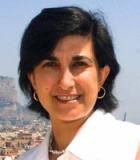
Funzione/Ruolo
Dirigente di Ricerca presso l'Istituto Nazionale di Astrofisica; Direttrice dell'INAF - Osservatorio Astronomico di Palermo
Percorso professionale
Dopo la laurea in Fisica, conseguita presso l'Università degli Studi di Palermo, nel 1983, vince una borsa di studio del CNR grazie alla quale nel 1985 trascorre un periodo presso l'Harvard Smithsonian Center for Astrophysics - una delle principali istituzioni scientifiche mondiali nell'ambito dell'astrofisica - dove partecipa all'analisi dei dati stellari ottenuti con il satellite Einstein lanciato qualche anno prima. Usufruisce poi di una borsa di studio presso l'Istituto per le Applicazioni Interdisciplinari della Fisica del CNR. Nel 1991 consegue il dottorato in Fisica presso l'Università degli Studi di Palermo con una tesi dal titolo: "L'emissione di fondo nella banda 0.16-3.5 keV osservata con l'Imaging Proportional Counter a bordo del satellite Einstein. Il contributo degli AGN e della componente stellare della Galassia". Dopo il dottorato diventa astronoma presso l'Osservatorio Astronomico di Palermo. Trascorre un periodo presso il Dipartimento di Astronomia e Astrofisica dell'Università di Chicago grazie a una borsa di studio CNR/NATO Senior. Oggi è Dirigente di Ricerca e direttrice dell'Osservatorio Astronomico di Palermo, una struttura di ricerca dell'Istituto Nazionale di Astrofisica.
Risultati scientifici
La sua attività scientifica si è focalizzata sullo studio della fisica dell'alta atmosfera stellare e temi correlati. In particolare è stata fra i primi ricercatori a svolgere attività di ricerca sulle corone delle stelle giovani attraverso osservazioni di ammassi aperti e regioni di formazione stellare con missioni spaziali (Einstein, Rosat, Chandra, XMM/Newton), determinando come la radiazione ad alta energia in queste stelle sia molto più alta di quella presente oggi nel Sole. Si è poi occupata di regioni di formazione stellare e dei processi fisici che governano la formazione delle stelle in varie bande di energia, fino allo studio della popolazione stellare giovane nell'intorno solare evidenziando come la regione attorno al Sole sia stata la sede di un episodio di formazione stellare nell'ultimo miliardo di anni. Oggi si occupa di pianeti extrasolari con particolare riferimento alla ricerca di pianeti di piccola massa attorno a stelle più piccole del Sole e alle interazioni con la stella centrale. E' coinvolta dell'utilizzo dello spettrografo HARPS-N (di cui è co-investigator) istallato al Telescopio Nazionale Galileo, che è oggi lo strumento più sensibile per la ricerca di pianeti nell'emisfero Nord. Inoltre è co-principal Investigator e responsabile italiano per la missione ARIEL dell'Agenzia Spaziale Europea per l'osservazione delle atmosfere esoplanetarie, oggi in fase di studio.
Attività editoriali e pubblicazioni
Giuseppina Micela è autrice di oltre 300 pubblicazioni scientifiche su riviste internazionali. Inoltre svolge attività di divulgazione dell'astronomia, e in particolare ha pubblicato il volume Nascita e morte delle stelle per la collana "Farsi un'idea" della casa editrice Il Mulino.
Fra i suoi articoli:
[2016] Affer L, Micela G, Damasso M, Perger M, Ribas I et al. HADES RV program with HARPS-N at the TNG. GJ 3998: An early M-dwarf hosting a system of super-Earths, Astronomy & Astrophysics, 593, 117.
[2015] Reale F, Gambino A F, Micela G, Maggio A, Widemann Th, Piccioni G. Using the transit of Venus to probe the upper planetary atmosphere, Nature Communications, 6, 7563.
[2013] Pepe F, Cameron Collier A, Latham, DW, Molinari E, Udry S, Bonomo A, Buchhave LA, Charbonneau,D, Cosentino R, Dressing CD, Dumusque X, Figueira P, Fiorenzano AFM, Gettel S, Harutyunyan A, Haywood RD, Horne K, Lopez-Morales M, Lovis C, Malavolta L, Mayor M, Micela G et al. An Earth-sized planet with an Earth-like density, Nature, 503, 7476:377-380.
[2012] Caramazza M, Micela G, Prisinzano L, Sciortino S, Damiani F, Favata F, Stauffer JR, Vallenari A, Wolk SJ. Star formation in the outer Galaxy: coronal properties of NGC 1893, Astronomy & Astrophysics, 539, 74.
[2008] Penz T, Micela G, Lammer H. Influence of the evolving stellar X-ray luminosity distribution on exoplanetary mass loss, Astronomy and Astrophysics, 477, 309-314.
[2006] Cecchi-Pestellini C, Ciaravella A, Micela G, Stellar X-ray heating of planet atmospheres, Astronomy and Astrophysics, 458:L13-L16.
[2003] Favata F, Micela, G. Stellar Coronal Astronomy, Space Science Reviews, 108, 577-708.
[1993] Micela G, Sciortino S, Favata F. Stellar birthrate in the Galaxy - Constraints from X-ray flux-limited surveys, Astrophysical Journal, 412:618-624.
[1988] Micela G, Sciortino S, Vaiana GS, Schmitt JHMM, Stern RA, Harnden FR Jr, Rosner R. The Einstein Observatory survey of stars in the Hyades cluster region, Astrophysical Journal, 325:798-819.
[1985] Micela G, Sciortino S, Serio S, Vaiana GS, Bookbinder J, Golub L, Harnden FR Jr, Rosner R. Einstein X-ray survey of the Pleiades - The dependence of X-ray emission stellar age, Astrophysical Journal, 292:172-180.
Riconoscimenti e premi
Giuseppina Micela è stata componente di numerosi team scientifici per lo studio di missioni dell'Agenzia Spaziale Europea (Eddington, Plato, EChO, ARIEL) e di altri progetti nazionali e internazionali da terra e dallo spazio. E' stata responsabile nazionale del progetto PREMIALE, finanziato dal MIUR, "A Way to Other Worlds - WOW". Inoltre è stata vincitrice di alcuni programmi della Commissione Europea, che hanno permesso a diversi ricercatori europei di svolgere la loro attività presso l'Osservatorio di Palermo.
Oggi è membro del patronato della Fundacion Galileo Galilei, che gestisce il telescopio Nazionale Galileo situato nelle isole Canarie, è membro del Consiglio di Amministrazione della fondazione di partecipazione Gal Hassin, e dell'International Advisory Committee dell' Institute of Space Sciences (IEEC-CSIC), in Barcellona. Infine è membro del collegio dei docenti in Fisica dell'Università di Palermo.

Funzione/Ruolo
Ricercatrice dell'Unità di Farmacologia dell'Università di Camerino
Percorso professionale
Dopo aver conseguito la laurea in Farmacia presso l'Università di Camerino nel 2008 e l'abilitazione all'esercizio della professione di farmacista, prosegue i suoi studi attraverso un dottorato di ricerca in Chemical, Pharmaceutical Sciences and Biotechnology, che consegue nel 2012, nello stesso ateneo, dopo aver trascorso l'ultimo anno presso l'Università di Zurigo . Attualmente svolge attività di ricerca nell'Unità di Farmacologia dell'Università di Camerino.
Risultati scientifici
I principali interessi di ricerca di Maria Vittoria Micioni Di Bonaventura si concentrano sullo studio dei disordini alimentari. Già durante il suo dottorato di ricerca si occupa di studi di farmacologia comportamentale volti allo sviluppo di nuove strategie terapeutiche per il trattamento degli espisodi di binge eating, ovvero abbuffate compulsive di cibo, presenti nei soggetti che soffrono di problemi di alimentazione come la bulimia, il disturbo da alimentazione incontrollata (binge eating disorder) e l'anoressia del sottotipo binge eating-purging type. Lo scopo degli studi è indagare il ruolo delle restrizioni caloriche e dello stress per la comparsa e lo sviluppo del disordine, testando diversi composti che possono influenzare tali sistemi in un modello preclinico. Uno dei principali obiettivi di Maria Vittoria Micioni Di Bonaventura è individuare le cause scatenanti di questi disturbi così da poter sviluppare una terapia farmacologica efficace. Il suo ultimo progetto di ricerca è proprio incentrato sullo sviluppo di un nuovo approccio farmacologico per il trattamento dell'obesità e dei disturbi alimentari correlati all'alimentazione incontrollata e compulsiva, che intende ottenere studiando il ruolo svolto nel sistema cerebrale dall'adenosina (un importante modulatore nel sistema nervoso centrale e periferico).
Attività editoriali e pubblicazioni
Autrice di numerose pubblicazioni scientifiche fra cui:
(2018) Pucci M, Micioni Di Bonaventura MV, Zaplatic E, Bellia F, Maccarrone M, Cifani C, D'Addario C. Transcriptional regulation of the endocannabinoid system in a rat model of binge-eating behavior reveals a selective modulation of the hypothalamic fatty acid amide hydrolase gene. International Journal of Eating Disorders, 52(1):51-60.
(2018) Micioni Di Bonaventura MV, Ubaldi M, Giusepponi ME, Rice KC, Massi M, Ciccocioppo R, Cifani. Hypothalamic CRF1 receptor mechanisms are not sufficient to account for binge-like palatable food consumption in female rats. International Journal of Eating Disorders, 50(10):1194-1204.
(2017) Micioni Di Bonaventura MV, Lutz TA, Romano A, Pucci M, Geary N, Asarian L, Cifani C. Estrogenic suppression of binge-like eating elicited by cyclic food restriction and frustrative-nonreward stress in female rats. International Journal of Eating Disorders, 50(6):624-635.
(2016) Pucci M, Micioni Di Bonaventura MV, Giusepponi ME, Romano A, Filaferro M, Maccarrone M, Ciccocioppo R, Cifani C, D'Addario C. Epigenetic regulation of nociceptin/orphanin FQ and corticotropin-releasing factor system genes in frustration stress-induced binge-like palatable food consumption. Addiction Biology, 21(6):1168-1185.
(2016) Romano A, Tempesta B, Micioni Di Bonaventura MV, Gaetani S. From Autism to Eating Disorders and More: The Role of Oxytocin in Neuropsychiatric Disorders. Frontiers in Neuroscience, 9:497.
(2015) Pucci M, Micioni Di Bonaventura MV, et al. P.1.a.021 Genetic and epigenetic regulation of cannabinoid receptor type-1 in obesity. European Neuropsychopharmacology, 25, 2, S169-S170.
(2015) Cifani C, Micioni Di Bonaventura MV, Pucci M, D'Addario C. Regulation of hypothalamic neuropeptides gene expression in diet induced obesity resistant rats: Possible targets for obesity prediction?. Frontiers in Neuroscience, 9, 187.
(2015) Bedse G, RomanoA, [...] Micioni di Bonaventura MV, et al. Inhibition of Anandamide Hydrolysis Enhances Noradrenergic and GABAergic Transmission in the Prefrontal Cortex and Basolateral Amygdala of Rats Subjected to Acute Swim Stress. Journal of Neuroscience Research, 93(5):777-87.
(2014) Di Francesco A, Falconi A, Di Germanio C, Micioni di Bonaventura MV, et al. Extravirgin olive oil up-regulates CB1 tumor suppressor gene in human colon cancer cells and in rat colon via epigenetic mechanisms. The Journal of Nutritional Biochemistry, 26(3):250-8.
(2014) D'Addario C, Micioni Di Bonaventura MV, Pucci M, Romano A, Gaetani S, Ciccocioppo R, Cifani C, Maccarrone M. Endocannabinoid signaling and food addiction. Neuroscience & Biobehavioral Revviews, 47:203-24.
(2014) Micioni Di Bonaventura MV, Ciccocioppo R, Romano A, Bossert JM, Rice KC, Ubaldi M, St Laurent R, Gaetani S, Massi M, Shaham Y, Cifani C. Role of bed nucleus of the stria terminalis corticotrophin-releasing factor receptors in frustration stress-induced binge-like palatable food consumption in female rats with a history of food restriction. Journal of Neuroscience. 20;34(34):11316-24.
Riconoscimenti e premi
Maria Vittoria Micioni Di Bonaventura ha ricevuto numerosi riconoscimenti per la sua carriera accademica nazionale ed internazionale. Nel 2013 riceve il premio Farmindustria- Società Italiana di Farmacologia (SIF) per la sua produzione scientifica in ambito farmacologico.
Nel 2014 vince tre travel awards per i lavori presentati a due congressi: il 9th Federations of European Neuroscience Societies (FENS) Forum of Neuroscience e l'European College of Neuropsychopharmacology (ECNP) Workshop for Junior Scientists in Europe e la XII International Summer School of Neuroscience "Dopamine", della Federation of European Pharmacological Societies (EPHAR), della SIF e dell'Italian Society of Neuropsychopharmacology (SINPF).
Nel 2014 è stata anche selezionata per il programma International Brain Research Organization (IBRO) InEurope Short Stay Program che ha svolto a Zurigo, per studiare l'influenza degli ormoni ovarici durante gli episodi di binge eating.
Nel 2015 viene premiata sia durante il Joint Meeting European Behavioural Pharmacology Society (EBPS) - European Brain and Behaviour Society (EBBS) per i risultati ottenuti durante il periodo di ricerca a Zurigo, sia al 9th World Congress IBRO a Rio de Janeiro, per lo studio presentato nel corso del congresso sul ruolo dell'adenosina nel controllo degli episodi di binge eating.
Nel 2016 vince il Premio "L'Oréal-UNESCO per le Donne e la Scienza 2016" nell'ambito del Programma "For Women in Science" della "Fondation l'Oréal" in collaborazione con L'Oréal Italia e l'UNESCO.
Nel 2015 riceve l'EBPS Travel Award for Joint Meeting EBPS (European Behavioural Pharmacology Society)-EBBS (European Brain and Behaviour Society), per i risultati ottenuti durante il periodo di ricerca a Zurigo, e l'IBRO PERC-FENS World Congress Travel Grants FOR 9th World Congress of the International Brain Research Organization (IBRO), per i risultati presentati durante il congresso sul ruolo dell'adenosina nel controllo degli episodi di abbuffate.
Nel 2017 riceve dalla Società di Farmacologia Italiana il "Merck Sharp Dohme corporation award" per i miglior 5 progetti di ricerca farmacologica.

Funzione/Ruolo
Professoressa associata di Fisica sperimentale presso l'Università degli studi di Messina e Visiting Professor presso l'Université Paris-Sud
Percorso professionale
Dalla laurea in Fisica nel 1998 all'età di 22 anni, il Dottorato di Ricerca in Fisica e il Dottorato Europeo per User of Large Experimental Systems a Grenoble (Francia) nel 2002, svolge le sue ricerche presso diversi laboratori internazionali. Nel 2003 è ricercatrice ATER presso l'Università di Lille (Francia), dove dal 2008 al 2010 è borsista internazionale UNESCO-L'Oréal For Women in Science. Nel 2011 acquisisce la "qualification aux fonctions de professeur des universités" nella sezione 28 e nel 2016 nella sezione 64 in Francia. Nel 2012 è borsista internazionale European Molecular Biology Organisation presso l'Institut de Biochimie et Biophysique Moléculaire et Cellulaire, Université de Paris-Sud XI (Francia). Nel 2013 acquisisce l'abilitazione scientifica nazionale come Professoressa di prima fascia in Fisica Sperimentale della Materia, divenendo nel 2015 Professoressa di seconda fascia di Fisica Sperimentale presso l'Università degli Studi di Messina. Da Luglio 2016 è Visiting Professor presso l'Institut de Biologie Intégrative de la Cellule, CEA-CNRS-Université Paris Sud (Francia).
Risultati scientifici
Federica Migliardo è una biofisica che svolge le proprie ricerche nel dominio delle scienze della vita nell'ambito di diverse collaborazioni internazionali. La sua attività di ricerca si focalizza principalmente sullo studio di processi biologici quali la bioprotezione, la denaturazione e la stabilizzazione delle biomolecole, e, più recentemente, di alcune malattie infettive (tubercolosi e schistosomiasi) e neurodegenerative (Parkinson), con il fine di determinarne i meccanismi molecolari e comprendere il ruolo dei bioprotettori naturali.
L'idea forza della ricerca nasce dall'osservazione che diversi organismi "estremofili" (che amano l'estremo) mostrano straordinarie capacità di sopravvivenza in condizioni ritenute proibitive grazie a un particolare zucchero, il trealosio, che può essere usato come agente naturale e innovativo per proteggere e stabilizzare sistemi di interesse biomedico e farmaceutico, come proteine, cellule staminali, plasma, anticorpi e vaccini. Gli studi sperimentali, condotti mediante l'applicazione sinergica di tecniche complementari, come la spettroscopia di neutroni e di luce, hanno mostrato che lo zucchero deforma la struttura dell'acqua impedendo la formazione del ghiaccio, proteggendo così gli esseri viventi dal congelamento, e che è anche capace di rivestire le molecole biologiche creando un ambiente rigido che le protegga da condizioni ambientali avverse. La conoscenza approfondita delle proprietà uniche del trealosio ha aperto la strada a nuovi studi su alcune malattie per le quali non esiste ancora oggi una cura. Il trealosio può essere impiegato nella cura di malattie neurodegenerative, in quanto è capace di inibire l'aggregazione delle proteine, come l'alfa-sinucleina nel Parkinson, che in tali malattie mostrano comportamenti anomali, migliorando le funzioni motorie e innalzando le aspettative di vita. D'altra parte, il trealosio si trova legato a dei particolari acidi grassi nella membrana esterna del batterio della tubercolosi, membrana che crea una sorta di barriera tra il batterio e gli antibiotici, incrementandone la resistenza; l'obiettivo di questa ricerca è rendere questa barriera più fragile e dunque più permeabile ai farmaci che così saranno molto più efficaci. La stessa filosofia è impiegata nello studio della schistosomiasi, parassitosi che rappresenta la seconda malattia tropicale, dal momento che i parassiti si proteggono dagli attacchi del nostro sistema immunitario grazie a una membrana esterna molto particolare che fa passare i nutrienti ma non i farmaci.
Attività editoriali e pubblicazioni
È coautrice di oltre 170 articoli scientifici pubblicati su riviste internazionali, tra cui:
[2017] Migliardo F, Angell CA, Magazù S. Contrasting dynamics of fragile and non-fragile polyalcohols through the glass, and dynamical, transitions: A comparison of neutron scattering and dielectric relaxation data for sorbitol and glycerol, Biochimica Biophysica Acta - General Subjects, 1861, 3540.
[2015] Migliardo F, Salmeron C, Bayan N. Mobility and temperature resistance of trehalose mycolates as key-characteristics of the outer membrane of Mycobacterium tuberculosis, Journal of Biomolecular Structure and Dynamics, 33, 447.
[2014] Bousset L, Brewee C, Melki R, Migliardo F. Dynamical Properties of -Synuclein in Soluble and Fibrillar Forms by Quasi Elastic Neutron Scattering, BBA - Proteins and Proteomics, 1844, 1307.
[2014] Migliardo F, Tallima H, El Ridi R. Is There a Sphingomyelin-Based Hydrogen Bond Barrier at the Mammalian Host-Schistosome Parasite Interface?, Cell Biochemistry and Biophysics, 68, 359.
[2013] Fenimore PW, Frauenfelder H, Magazù S, McMahon BH, Mezei F, Migliardo F, Young RD, Stroe I. Concepts and Problems in Protein Dynamics, Chemical Physics, 424, 2.
[2011] Magazù S, Migliardo F, Parker SF. Vibrational Properties of Bioprotectant Mixtures of Trehalose and Glycerol, Journal of Physical Chemistry B, 115, 11004.
[2007] Lishchuk SV, Lokotosh TV, Magazù S, Malomuzh NP, Migliardo F. Role of the orientation disorder in the formation of fragility of glassy water and glycerol-like liquids, Physical Review E, 76, 061504.
[2007] Magazù S, Migliardo F, Ramirez-Cuesta AJ. Concentration Dependence of Vibrational Properties of Bioprotectant/Water Mixtures by Inelastic Neutron Scattering, Journal of Royal Society Interface, 4, 167.
[2005] Lerbret A, Bordat P, Affouard F, Descamps M, Migliardo F. How Homogeneous are the Trehalose, Maltose and Sucrose Water Solutions? An Insight from Molecular Dynamics Simulations, Journal of Physical Chemistry B, 109, 11046.
[2003] Vertessy BG, Magazù S, Mangione A, Migliardo F, Brandt A. Structure of Escherichia coli dUTPase in Solution: A Small Angle Neutron Scattering Study, Macromolecular Bioscience, 3, 477.
Riconoscimenti e premi
Federica Migliardo ha ricevuto diversi premi e riconoscimenti internazionali e nazionali, quali il Premio Internazionale BioVision for Life Sciences 2011, le Borse di Studio Internazionale 2008 e Nazionale 2005 UNESCO-L'Oréal For Women in Science, il Premio Internazionale EUWIIN (European Union Women Inventors and Innovators Network) Special Recognition Award 2007, il Premio Sapio per la Ricerca Italiana 2006, il Premio per la miglior tesi di dottorato in spettroscopia neutronica dell'Istituto Nazionale di Fisica della Materia 2003 e il Premio per il miglior laureato in Italia della Società Italiana di Fisica 2001.

Funzione/Ruolo
Professoressa Ordinaria di Genetica Medica all'Università degli Studi di Milano La Statale, Dipartimento di Scienze della Salute.
Direttrice della Struttura Complessa di Genetica Medica, ASSt Santi Paolo e Carlo, Milano.
Percorso professionale
Nel 1987 si laurea in Scienze Biologiche, Facoltà di Scienze Matematiche, Fisiche e Naturali Università degli Studi di Milano. Nel 1993 si specializza in Genetica Medica, Facoltà di Medicina e Chirurgia, Università degli Studi di Milano. Nel 1999 consegue il Dottorato di Ricerca in Biologia Cellulare e Molecolare, Facoltà di Scienze Matematiche, Fisiche e Naturali, Università degli Studi di Milano. Dal 1987 al 1995 è ricercatrice AIRC, presso il Dipartimento di Oncologia Sperimentale, IRCCS Istituto Nazionale Tumori, Milano.
Nel 1999 diventa ricercatrice universitaria a tempo indeterminato, presso l'Università degli Studi di Milano, dove avvia la sua carriera accademica, prima come professoressa associata e poi ordinaria
Dal 2011 al 2021 presta servizio in regime di Convenzione presso la Fondazione IRCCS Ca’ Granda Ospedale Maggiore Policlinico, Milano.
Dal 2011 al 2017 è direttrice della Scuola di Specializzazione in Genetica Medica.
Dal 2012 è responsabile della Unità “Coordinamento Laboratori di Ricerca, Piattaforma di Genomica e di Bionformatica, Direzione Scientifica, Fondazione IRCCS Ca’ Granda Ospedale Maggiore Policlinico, Milano.” Area di ricerca: sequenziamento di nuova generazione per lo studio di condizioni genetiche senza diagnosi clinica e rare; realizzazione della biobanca di materiale biologico da più di 2000 gravidanze; studi epigenetici sull’effetto dell’alimentazione materna in gravidanza e sulla crescita fetale.
Dal 2016 è membro del Comitato Etico come esperta di genetica all'Istituto nazionale Tumori, Milano.
Nel 2019 ottobre-novembre è Visiting Professor presso la Columbia University, New York, NY, Mailman School of Public Health nell’ambito del progetto Rise Cross Neurod, Motor neuron center.
Dal 2020 è membro del coordinamento scientifico della fondazione onlus FAST Italia (associazione di pazienti sindrome di Angelman) per la creazione della prima biobanca europea di materiale biologico di pazienti con sindrome di Angelman e dei loro genitori, in collaborazione con l’Istituto “C. Besta” di Milano e New York University, Center for Neural Science (prof.ssa C. Alberini).
Risultati scientifici
La prof.ssa Miozzo si occupa di predisposizione genetica al cancro, di alterazioni genomiche nei tumori, di difetti genomici della placenta associati a difetti di crescita intrauterina.
Attività editoriali e pubblicazioni
E’ autrice di oltre 140 pubblicazioni scientifiche peer-reviewed presenti in PubMed e Scopus
Academic Editor di PloS One dal 2012 e componente dell’Editorial Board della rivista International Journal of Pediatrics and Child Health dal 2020.
Pubblicazioni a maggior impatto
[1992] Sozzi, G, Miozzo, M., Donghi, R. Delia Porta, G.Pierotti, M.A Deletions of 17p and p53 Mutations in Preneoplastic Lesions of the Lung. Cancer Research, 52(21),6079-82.
[1992] Pierotti, M.A., Santoro, M., Jenkins, R.B. et al. Characterization of an inversion on the long arm of chromosome 10 juxtaposing D10S170 and RET and creating the oncogenic sequence RET/PTC. Proceedings of the National Academy of Sciences of the United States of America, 89(5):1616-20.
[1995] Sozzi, G, Miozzo, M., Pastorino, U., Porta, G.D., Pierotti, M.A. Genetic Evidence for an Independent Origin of Multiple Preneoplastic and Neoplastic Lung Lesions. Cancer Res, 55:135-40
[2002] Miozzo M, Simoni G. The role of imprinted genes in fetal growth. Biol Neonate. 81(4):217-28.
[2004] Invernizzi, P., Miozzo, M., Battezzati, P.M., Gershwin, M.E., Podda, M. Frequency of monosomy X in women with primary biliary cirrhosis. Lancet, 363(9408): 533-35.
[2004] Sirchia SM, Tabano S, Monti L, Recalcati MP, Gariboldi M, Grati FR, Porta G, Finelli P, Radice P, Miozzo M. Misbehaviour of XIST RNA in breast cancer cells. PLoS One. 24(5):e5559.
[2007] Miozzo, M., Selmi, C., Gentilin, B., Podda, M., Invernizzi, P.Preferential X chromosome loss but random inactivation characterize primary biliary cirrhosis. Hepatology.46(2):456–62.
[2019] Paganini L, Hadi LA, Chetta M, Rovina D, Fontana L, Colapietro P, Bonaparte E, Pezzani L, Marchisio P, Tabano SM, Costanza J, Sirchia SM, Riboni L, Milani D, Miozzo M. A HS6ST2 gene variant associated with X-linked intellectual disability and severe myopia in two male twins. Clin Genet. 95(3):368-74.
[2020] Ellinghaus, D., Degenhardt, F. et al Genomewide association study of severe covid-19 with respiratory failure. New England Journal of Medicine, 383:1522-34
[2020] Marfia G, Navone S, Guarnaccia L, Campanella R, Mondoni M, Locatelli M, Barassi A, Fontana L, Palumbo F, Garzia E, Ciniglio Appiani G, Chiumello D, Miozzo M, Centanni S, Riboni L. Decreased serum level of sphingosine-1-phosphate: a novel predictor of clinical severity in COVID-19. EMBO Mol Med. 14:e13424.
[2020] Fontana L, Bedeschi MF, Cagnoli GA, Costanza J, Persico N, Gangi S, Porro M, Ajmone PF, Colapietro P, Santaniello C, Crippa M, Sirchia SM, Miozzo M, Tabano S. (Epi)genetic profiling of extraembryonic and postnatal tissues from female monozygotic twins discordant for Beckwith-Wiedemann syndrome. Mol Genet Genomic Med. 8(9):e1386.
[2021] Rondinone O, Murgia A, Costanza J, Tabano S, Camanni M, Corsaro L, Fontana L, Colapietro P, Calzari L, Motta S, Santaniello C, Radaelli T, Ferrazzi E, Bosari S, Gentilini D, Sirchia SM, Miozzo M. Extensive Placental Methylation Profiling in Normal Pregnancies. International Journal of Molecular Sciences. 22(4):2136-55
Riconoscimenti e premi
Nel 2009 ha ricevuto il Premio Isimbardi “Giornata della Riconoscenza" Provincia di Milano conferito per la carriera scientifica e di insegnamento.
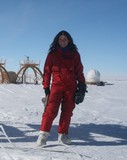
Area STEM: Ingegneria
Competenze: complessità applicata, design sistemico, diversity management, energie alternative, extreme project management, leadership, logistica, project management, sostenibilità, team management
Parole chiave: Antartide, energie alternative, esploratrice, innovazione, management, progetti complessi, sostenibilità, spedizione in Antartide, strategia, tecnologie digitali
Regione: Lazio
Funzione/Ruolo
Interface Manager Cherenkov Array Telescope gGmbH. Prima italiana a capo di una spedizione in Antartide. Esperta di extreme project management
Percorso professionale
Dopo la laurea in Ingegneria Civile presso l’Università di Pisa, prosegue la sua formazione con un master in Management conseguito nel 2010 presso il MIP (Graduate School of Business del Politecnico di Milano). Dal 2002 al 2008 è Energy Manager e Interface Manager per il PNRA (Programma Nazionale di Ricerche in Antartide), dove si occupa sostenibilità e di organizzare le missioni scientifiche in Antartide. Dal 2008 al 2010 è a capo della Missione Europea alla base di ricerca Concordia in Antartide. Nel 2013, per l'istituto polare francese, è a capo della logistica sempre nell’ambito della spedizione Europea in Antartide. Dal 2015 al 2016 dirige la missione di ricerca Belga in Antartide alla stazione Princess Elizabeth (primo Zero Emission Building dell'Antartide). Oltre alle esperienze polari, ha lavorato in United Kingdom nel Broadcasting e Start-up digitale; in Italia come consulente sulle strategie per la sostenibilità e, più di recente, sullo sviluppo delle partnership strategiche per l’innovazione tra Italia e Cina. Ha condotto ricerca in Teoria dell’Organizzazione preso il Politecnico di Milano e presso il Centro per la Complessità di Bergamo.Ha fondato “Complexity aware”: società di consulenza che supporta le aziende interessate a risvegliare il cosiddetto “Antarctic Mindset” (ovvero la capacità di creare strategie per prosperare nell’incertezza) e propone un metodo ideato insieme al filosofo della scienza Gianluca Bocchi
Attualmente è consulente e interface manager presso Cherenkov Array Telescope Observatory gGmbH.
Risultati scientifici
Durante le cinque spedizioni antartiche cui ha partecipato (la si può definire una esploratrice del XXI secolo) Chiara Montanari si è occupata della supervisione delle operazioni scientifiche, dell’organizzazione delle risorse umane, ma anche dei voli e delle operazioni di emergenza, ed è stata il principale contatto per i rapporti coi media. Grazie alle sue capacità di management anche di progetti complessi (e una spedizione al Polo Sud richiede particolare abilità di organizzazione e coordinazione), Montanari ha risposto a tutte le necessità legate al funzionamento del programma. In particolare, nel corso delle spedizioni alla base Concordia (una stazione di ricerca italo-francese situata sull’altipiano antartico a 3300 m di altitudine e a 1200 km dalla costa) e nel corso dell'ultima spedizione alla base di ricerca Princess Elisabeth (una stazione sabotata prima dell'arrivo del team), si è trovata a gestire situazioni ad alto rischio con forte pressione sul raggiungimento del risultato. In ogni missione ha coordinato da un lato il gruppo scientifico, con il proprio background e i propri obiettivi di missione, e dall’altro il team degli esperti di logistica, che ha competenze altrettanto strategiche: l’installazione delle complicate attrezzature scientifiche, l’approvvigionamento in viveri, materiali, carburante e la gestione degli spostamenti all’esterno. Montanari li ha fatti dialogare e lavorare insieme, agevolando anche i rapporti personali spesso non facili in un team multidisciplinare e multiculturale confinato a convivere in un microcosmo isolato. Sulla base di queste esperienze sul campo e degli studi sulla complessità applicata, Montanari oggi si occupa di trasferire alle aziende le competenze chiave per lo sviluppo di un team capace di resilienza e di agire efficacemente anche nel mondo del business contemporaneo, caratterizzato da elevata complessità, incertezza e cambiamento continuo.
Attività editoriali e pubblicazioni
Nel 2015 pubblica Cronache dai ghiacci. 90 giorni in Antartide, in cui narra l'esperienza della spedizione del 2013 alla stazione Concordia e propone il vivere e lavorare in ambiente estremo come metafora del mondo contemporaneo.
Riconoscimenti e premi
È la prima italiana a capo di una spedizione in Antartide.
Nel 2014 vince l'Ambrogino D'Oro dal Comune di Milano per l'impegno nell'innovazione, il trasferimento tecnologico e nella ricerca.
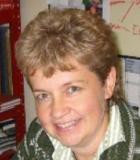
Funzione/Ruolo
Responsabile del Laboratorio Micro e Nanostrutture per la Fotonica presso il Centro Ricerche ENEA di Frascati (RM)
Percorso professionale
Dopo aver conseguito la laurea in Fisica nel 1984 all'Università di Roma "La Sapienza", e' assunta nella Divisione Studi presso Telespazio S.p.A. per le Telecomunicazioni Spaziali di Roma. Dal 1988 è ricercatrice presso il Centro Ricerche ENEA di Frascati (RM), dove dal 2010 è responsabile del Laboratorio Micro e Nanostrutture per la Fotonica. Nell'agosto 2008 è stata Visiting Researcher presso l'Università Federale Tecnologica del Paranà, in Brasile. Nel 2013 ha conseguito l'abilitazione scientifica nazionale alle funzioni di Professoressa Universitaria di prima fascia per Fisica Sperimentale della Materia.
Risultati scientifici
Rosa Maria Montereali è specializzata nell'indagine delle proprietà ottiche di difetti puntiformi in materiali isolanti per la realizzazione di micro-dispositivi ottici, sorgenti di luce miniaturizzate e laser a stato solido per la fotonica e di rivelatori di radiazione innovativi a lettura ottica per imaging-X e dosimetria, applicati in ambito scientifico, medicale e nucleare.
Partecipa all'indagine spettroscopica di nuovi materiali fotoluminescenti in forma di cristalli, polveri nanometriche, colloidi metallici e film sottili di semiconduttori organici di basso peso molecolare, utilizzati con successo per la realizzazione di diodi elettroluminescenti (OLED), in configurazione di risonatori compatti ed efficienti - microcavità ottiche verticali, guide d'onda planari, etc. - attività che svolge in collaborazione con università, enti di ricerca e industrie italiane ed estere, nell'ambito di progetti regionali, nazionali ed europei.
Nell'ambito delle attività di ricerca e sviluppo sulle applicazioni in ottica integrata dei film sottili di fluoruri, trattati con tecniche litografiche, laser e radiazioni ionizzanti di varia natura per la realizzazione di dispositivi fotonici miniaturizzati non-ibridi completamente ottici, il contributo innovativo è stato maggiormente apprezzato in ambito nazionale ed internazionale tramite l'assegnazione di relazioni su invito in prestigiosi congressi e conferenze. È co-inventrice di alcuni brevetti nazionali ed internazionali.
Attività editoriali e pubblicazioni
È autrice di più di 200 pubblicazioni su riviste scientifiche internazionali e/o con referee, tra cui:
[2017] Piccinini M, Nichelatti E, Ampollini A, Picardi L, Ronsivalle C, Bonfigli F, Libera S, Vincenti MA and Montereali RM. Proton beam dose-mapping via color centers in LiF thin film detectors by fluorescence microscopy, Europhysics Letters, 117:37004-1-5.
[2016] Montereali RM, Bonfigli F, Piccinini M, Nichelatti E, Vincenti MA. Photoluminescence of colour centres in lithium fluoride thin films: from solid-state miniaturised light sources to novel radiation imaging detectors, Journal of Luminescence, 170:761-769.
[2016] Fastampa R, Missori M, Braidotti MC, Conti C, Vincenti MA, Montereali RM. Temperature behaviour of optical absorption bands in colored LiF crystals, Results in Physics, 6:74-75.
[2015] Piccinini M, Ambrosini F, Ampollini A, Picardi L, Ronsivalle C, Bonfigli F, Libera S, Nichelatti E, Vincenti MA and Montereali RM. Photoluminescence of radiation-induced color centers in lithium fluoride thin films for advanced diagnostics of proton beams, Applied Physics Letters, 106: 261108_1_4.
[2014] Chiamenti I, Bonfigli F, Gomes ASL, Michelotti F, Montereali RM and Kalinowski HJ. Optical characterization of femtosecond laser induced active channel waveguides in lithium fluoride crystals, Journal of Applied Physics, 115, 2:023108-1-7.
[2013] Francini R, Montereali RM, Nichelatti E, Vincenti MA, Canci N, Segreto E, Cavanna F, Di Pompeo F, Carbonara F, Fiorillo G, Perfetto F. Optical characterization at liquid Argon temperature of Tetraphenyl-butadiene films on glass and specular reflector substrates in the VUV-VIS range of wavelengths, Journal of Instrumentation, JINST 8:P09006.
[2012] Montereali RM, Bonfigli F, Menchini F and Vincenti MA.Optical spectroscopy and microscopy of radiation-induced light-emitting point defects in lithium fluoride crystals and films, Low Temperature Physics 38, 8:779-785, doi: 10.1063/1.4740241; Fizika Nizkikh Temperatur 38, 8:976-984.
[2010] Montereali RM, Almaviva S, Bonfigli F, Cricenti A, Faenov A, Flora F, Gaudio P, Lai A, Martellucci S, Nichelatti E, Pikuz T, Reale L, Richetta M, Vincenti MA. Lithium Fluoride Thin Films Detectors for Soft X-Ray Imaging at High Spatial Resolution, Nuclear Instruments and Methods, A, 623:758-762.
[2007] Sekatskii SK, Dietler G, Bonfigli F, Loreti S, Marolo T, Montereali RM. Subwavelength-Size Local Fluorescent Sources based on Color Centers in LiF for Scanning Near-Field Optical Microscopy, Journal of Luminescence, 122-123:362-364.
[2004] Montereali RM, Gambino S, Loreti S, Gagliardi S, Pace A, Baldacchini G, Michelotti F. Morphological, Electrical and Optical Properties of Organic Light-Emitting Diodes with a LiF/Al Cathode and an Al-Hydroxyquinoline/Diamine Junction, Synthetic Metals, 143: 171-174.
Riconoscimenti e premi
È membro permanente dell'International Advisory Committee della serie di conferenze DIM (Defects in Insulating Materials).

Funzione/Ruolo
Professoressa ordinaria di Fisiologia Umana dell'Università di Pisa
Percorso professionale
Dopo la laurea in Fisica nel 1977 presso l'Università di Pisa, prosegue la sua formazione sia nelle discipline fisiche sia biologiche. Questo iniziale interesse multidisciplinare, che coniuga un approccio quantitativo e computazionale allo studio dei processi sensoriali neuronali e percettivi, è elemento caratterizzante dell'attività scientifica svolta, portandola a raggiungere risultati importati riconosciuti in campo internazionale. Nel 1981 svolge un perfezionamento in Biofisica presso la Scuola Normale Superiore. Successivamente passa circa 5 anni presso il dipartimento di Psicologia dell'Università Western Australia, completando la sua formazione nel campo delle scienze comportamentali. In questo periodo di post dottorato si rafforza in lei l'interesse per la comprensione dei meccanismi percettivi e la loro simulazione con metodi matematici e computazionali. Dal 1987 si stabilisce a Pisa dove continua la propria attività di ricerca, prima come ricercatrice di Fisica Generale della Scuola Normale Superiore e in seguito come Prima Ricercatrice dell'Istituto di Neurofisiologia del CNR. Nel 2000 diventa professoressa ordinaria di Psicobiologia presso la facoltà di psicologia della Libera Università Vita-Salute S Raffaele. Fonda il Corso di laurea specialistica in Neuroscienze Cognitive, unico in Italia, per le Facoltà di Psicologia, Filosofia e Medicina. Dal 2008 è professoressa di Fisiologia Umana presso la Facoltà di Medicina dell'Università di Pisa.
Risultati scientifici
L'attività di ricerca di Maria Concetta Morrone riguarda principalmente lo studio dei meccanismi neuronali nell'essere umano per l'esplorazione e la rappresentazione dello spazio e del tempo. In particolare ha studiato come il cervello possa conferire stabilità percettiva al mondo nonostante questo sia percepito attraverso degli organi straordinariamente mobili, come gli occhi. Gli studi effettuati mostrano una forte interazione fra lo spazio e il tempo percepito, analogamente ai fenomeni della fisica. La conoscenza dei circuiti e dei meccanismi operanti nei sistemi nervosi ha due importanti connessioni con le scienze applicate: da un lato le ricerche transazionali in medicina (nella quale le ipotesi teoriche possono trovare un'immediata possibilità di sperimentazione pratica e dove l'esperienza clinica fornisce indicazioni e supporto continuo alla ricerca), dall'altro le ricerche nell'ambito della robotica. Entrambe le discipline rientrano negli interessi delle ricerche effettuate e hanno portato alla messa a punto di metodi diagnostici per la medicina e allo sviluppo di modelli computazionali per il riconoscimento di immagini e la rappresentazione dello spazio percettivo, utili nei sistemi di visione artificiali.
Attività editoriali e pubblicazioni
Concetta Morrone ha pubblicato oltre 180 articoli scientifici in riviste internazionali come Nature cluster, Neuron, Current Biology, Trends in Neurosciences, PLoS and Journal of Neuroscience, as well as dozens in archival specialized journals like Vision Research e Journal of Vision.
Di seguito una selezione:
(2015) Biagi L, Crespi SA, Tosetti M, Morrone MC. BOLD Response Selective to Flow-Motion in Very Young Infants. PLoS Biology, 13(9):e1002260.
(2007) d'Avossa G, Tosetti M, Crespi D, Biagi L, Burr DC, Morrone MC. Spatiotopic selectivity of BOLD responses to visual motion in human area MT.Nature Neuroscience, 10(2):249-55.
(2000) Morrone MC, Tosetti M, et al. A cortical area that responds specifically to optic flow, revealed by fMRI.Nature Neuroscience, 3:1322-1328.
(1998) Neri P, Morrone MC, Burr DC. Seeing biological motion. Nature, 395(6705):894-6.
(1997) Ross J, Morrone MC, Burr DC. Compression of visual space before saccades.Nature, 386(6625):598-601.
(1995) Morrone MC, Burr DC, Vaina LM. Two stages of visual processing for radial and circular motion.Nature, 376(6540):507-9.
(1994) Burr DC, Morrone MC, Ross J. Selective suppression of the magnocellular visual pathway during saccadic eye movements. Nature, 371(6497):511-3.
(1988) Morrone MC, Burr DC. Feature detection in human vision: a phase-dependent energy model.Proceedings of the Royal Society of London B: Biological Sciences, 235(1280):221-45.
(1986) Morrone MC, Ross J, Burr DC, Owens R. Mach bands are phase dependent. Nature, 324: 250-253.
(1986) Morrone MC, Burr DC. Evidence for the existence and development of visual inhibition in humans. Nature, 321(6067):235-7.
Riconoscimenti e premi
Per le ricerche effettuate sono stati conferiti a Maria Concetta Morrone premi e numerosi riconoscimenti, come il Premio Nazionale del Ministero per i Beni Culturali e Ambientali, conferito dal Presidente della Repubblica Italiana presso l'Accademia Dei Lincei di Roma nel 2002 per la Fisiologia e Patologia, la Medaglia di Koffka conferita per le ricerche sullo Sviluppo e sulla Percezione dall'Università di Giessen nel 2011. È stata nominata Socia Corrispondente dell'Accademia dei Lincei - Classe di Scienze di Fisiche, Matematiche e Naturali nel 2014. Ha ricevuto l'Advanced Grant della European Research Council. Nel 2019 ha ricevuto la Medaglia Ken Nakayama 2019 per l'eccellenza nella scienza della visione.

Area STEM: Scienze biomediche e biotecnologie
Competenze: metodi della ricerca clinica, qualità della vita, trasferimento delle informazioni scientifiche
Parole chiave: alfabetizzazione sanitaria, empowerment and engagement della popolazione, salute pubblica, trasferimento informazioni scientifiche
Regione: Lombardia
Funzione/Ruolo
Responsabile del Laboratorio di ricerca per il coinvolgimento dei cittadini in sanità del Dipartimento di Salute Pubblica dell’IRCCS Istituto di Ricerche Farmacologiche Mario Negri di Milano
Percorso professionale
Dopo la laurea in Scienze Biologiche conseguita presso l’Università degli Studi di Milano nel 1982, si specializza in Ricerca Farmacologica presso il Mario Negri. Ricercatrice dapprima nei settori della Farmacologia Clinica e della Epidemiologia Clinica, dal 1987 è coinvolta in progetti sulla partecipazione attiva dei cittadini e pazienti nel dibattito sulla salute, sull’informazione e formazione medico-scientifica e in progetti di ricerca e partnership con associazioni di volontariato.
Dal 2006 al 2009 è componente del Comitato Etico dell’IRCCS Multimedica, dal 2007 al 2013 presidente del Comitato Etico dell’Azienda USL di Bologna e nel 2013 del Comitato Etico Provinciale di Reggio Emilia.
Paola Mosconi è socia fondatrice, vice-presidente e delegata europea di EUROPA DONNA Italia, un movimento di opinione per la lotta contro il tumore al seno, presente in 46 paesi europei. È presidente della Fondazione Nerina e Mario Mattioli Onlus per la ricerca nel settore della ginecologia oncologica. È stata vice-presidente dell’Associazione Alessandro Liberati - Network Cochrane Italiano, associazione fondata per contribuire alla diffusione e crescita della cultura dell’efficacia e appropriatezza in campo sanitario. È componente del Consiglio di Fondazione AIOM, EUPATI Italia, Fondazione Pofferi e del Comitato Tecnico Scientifico di Acto-Alleanza contro il tumore ovarico.
Risultati scientifici
A capo del “Laboratorio di ricerca sul coinvolgimento dei cittadini in sanità” dell’Istituto Mario Negri di Milano, Paola Mosconi si occupa della pianificazione, del coordinamento e dell’analisi di risultati di differenti attività di ricerca mirate al coinvolgimento e alla partecipazione della popolazione in generale, o di gruppi di pazienti specifici e loro rappresentanze, nelle scelte e nelle decisioni in tema di salute pubblica. È stata, ed è, responsabile di unità operative in programmi di ricerca medico-scientifica, finalizzati, per esempio, alla diagnosi precoce del tumore al seno, tramite promozione della corretta informazione sullo screening mammografico, alla promozione di un modello informativo per persone affette da sclerosi multipla sull’uso di farmaci ed esami a scopo diagnostico e prognostico, al coinvolgimento delle persone affette da AIDS/HIV per la messa a punto di un’agenda di priorità in materia di interventi sanitari, assistenza, prevenzione, informazione e ricerca.
In particolare, Paola Mosconi è esperta di metodologia della ricerca (conferenze di consenso, giurie dei cittadini, linee guida, indagini ad hoc con associazioni, indagini su conoscenze/ attitudini/comportamenti di cittadini/pazienti, registri di patologia, revisioni), informazione (valutazione del tipo di informazione fornita e da fornire su screening, malattie e trattamenti, modalità di comunicazione di informazioni di salute anche attraverso lo sviluppo di siti internet, sviluppo di strumenti decisionali, sviluppo di opuscoli divulgativi per la popolazione generale), formazione (corsi di metodologia della ricerca clinica per attivisti di associazioni di volontariato), ideazione di progetti di valutazione della qualità della vita e della salute dei cittadini e del grado di soddisfazione del Servizio Sanitario Nazionale.
Attività editoriali e pubblicazioni
Paola Mosconi svolge funzioni di referee per diverse riviste scientifiche e ha pubblicato numerosi articoli su riviste inazionali e internazionali. Di seguito una selezione:
(2017) Roberto A, Colombo Cinzia, Candiani G, Giordano L, Mantellini P, Paci E, Satolli R, Valenza M, Mosconi P. Personalised informed choice on evidence and controversy on mammography screening: protocol for a randomized controlled trial. BMC Cancer, 17:429.
(2016) Mosconi P, Colombo C, Satolli R, Carzaniga S. Involving a citizens’ jury in decisions on individual screening for prostate cancer. PLOS One; 11: e0143176.
(2016) Mosconi P, Antes G, Barbareschi G, Burls A, Demotes-Mainard J, Chalmers I, Colombo C, Garattini S, et al. A European multi-language initiative to make the general population aware of independent clinical research: The European Communication on Research Awareness Need project. Trials, 17:19.
(2015) Mosconi P, Castellani C, Villani W, Satolli R. Cystic fibrosis: to screen or not to screen? Involving a Citizens’ jury in decisions on screening carrier. Health Expectations, 8: 1956.
(2013) Mosconi P, Roberto A. Non-publication of large randomized clinical trials: cross sectional analysis. BMJ, 347: f7590.
(2013) Donati S, Satolli R, Colombo C, Senatore S, Cotichini R, Da Cas R, Spila Alegiani S, Mosconi P. Informing women on menopause and hormone therapy: Know the menopause a multidisciplinary project involving local healthcare system. PLOS One, 8 (12).
(2012) Mosconi P, Roberto A. Open-access clinical trial registries: An Italian scenario. Trials; 13: 194.
(2012) Mosconi P, Lionello L, Di Spazio L, Alberghini L. Are the voice of women and men equally represented in ethics committees? An Italian survey. J Clinical Research Bioethics, 3: 129.
(2012) Colombo C, Moja L, Gonzalez-Lorenzo M, Liberati A, Mosconi P. Patient empowerment as a component of health system reforms: rights, benefits and vested interests. Internal and Emergency Medicine; 7: 183.
(2007) Mosconi P, Colombo C, Satolli R, Liberati A. PartecipaSalute, an Italian project to involve lay people, patients’ associations and scientific-medical representatives on the health debate. Health Expectations, 10: 194.
(2004) Mosconi P, Buchanan M, Kyriakides S, Fernandez-Marcos A, Horvatin J, O'Connell D, Zernik N, EUROPA DONNA. EUROPA DONNA: has strenght in its heterogeneity. European Journal of Cancer; 40: 1145.
(1998) Apolone G, Mosconi P. The Italian SF-36 Health Survey: Translation, validation and norming. Journal of Clinical Epidemiology, 51: 1025.

Funzione/Ruolo
Group Leader al Max Planck Institute for Mathematics in the Sciences (Germania).
Percorso professionale
Dopo la laurea magistrale in Matematica all'Università di Bonn, nel 2020 ottiene il dottorato di ricerca presso il Max Planck Institute for Mathematics in the Sciences (MPI MiS). Dopo un postdoc all’Alan Turing Institute di Londra, vince una Minerva Fast Track Fellowship della Max Planck Society, e nel 2021 torna all’MPI MiS per guidare un gruppo di ricerca che studia grafi e ipergrafi. Da marzo 2023 sarà Assistant Professor in matematica applicata alla Vrije Universiteit Amsterdam.
Risultati scientifici
L'attività di ricerca di Raffaella Mulas si focalizza sulla teoria delle reti, e in particolare sulla teoria spettrale di grafi e ipergrafi. I suoi risultati sono principalmente di matematica pura, ma ha diverse collaborazioni interdisciplinari che le permettono di lavorare anche su applicazioni, ad esempio di fisica e di biologia.
Attività editoriali e pubblicazioni
[2022] Mulas R, Horak D, Jost J. Graphs, Simplicial Complexes and Hypergraphs: Spectral Theory and Topology. In: Higher-Order Systems, Understanding Complex Systems, F. Battiston and G. Petri (eds.), Springer.
[2022] Mulas R, Kuehn, C, Böhle T, Jost J. Random walks and Laplacians on hypergraphs: When do they match?. Discrete Applied Mathematics, 317:26-41.
[2022] Galuppi F, Mulas R, Venturello L. Spectral theory of weighted hypergraphs via tensors. Linear and Multilinear Algebra, DOI: 10.1080/03081087.2022.2030659.
[2021] Mulas R, Zhang D. Spectral theory of Laplace operators on oriented hypergraphs. Discrete Mathematics, 344(6):112372.
[2021] Mulas R. A Cheeger Cut for Uniform Hypergraphs. Graphs and Combinatorics, 37: 2265-2286.
[2021] Abiad A, Mulas R, Zhang D. Coloring the normalized Laplacian for oriented hypergraphs. Linear Algebra and Its Applications, 629:192-207.
[2021] Mulas R, Casey MJ. Estimating cellular redundancy in networks of genetic expression. Mathematical Biosciences, 341:108713.
[2020] Mulas R, Kuehn C, Jost J. Coupled dynamics on hypergraphs: Master stability of steady states and synchronization. Physical Review E, 101(6):062313.
[2019] Jost J, Mulas R. Hypergraph Laplace operators for chemical reaction networks. Advances in Mathematics, 351:870–896.
Riconoscimenti e premi
Nel 2020, ha vinto il Premio Donna di Scienza Giovani, dell'associazione Scienza Società Scienza. Nel 2021, ha vinto una Minerva Fast Track Fellowship della Max Planck Society, e dallo stesso anno è Membro eletto dell’Elisabeth-Schiemann-Kolleg.
Inoltre, per le sue attività di divulgazione ha vinto un premio al Science Slam del Max Planck Society PhD-net nel 2018. Con una sua illustrazione, nel 2021 ha vinto il primo premio alla Mathematics and Diversity Art Competition dell’Università di Southampton.
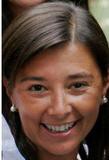
Funzione/Ruolo
Professoressa ordinaria di Chimica Industriale e Tecnologia e Prorettrice Delegata presso il Politecnico di Milano.
Percorso professionale
Si laurea in Ingegneria Chimica al Politecnico di Milano, poi continua la sua formazione con un dottorato di ricerca in Chimica Industriale presso l'Università di Milano, e con un post dottorato al Politecnico di Milano. Nel 2002 diventa assistente presso il Dipartimento di Ingegneria Chimica del Politecnico di Milano. Nel 2007 diventa professoressa associata, e dal 2008 passa al Dipartimento di Energia, dove ora è professoressa ordinaria.
Dal 2018 è coordinatrice del Consiglio di Corso di Laurea in Ingegneria Chimica (livello Bachelor e Master) e Ingegneria della Prevenzione e della Sicurezza nell'Industria di Processo (livello Master) del Politecnico di Milano. Dal 2019 è Vice Preside della Scuola di Ingegneria Industriale e dell'Informazione del Politecnico di Milano. Dal febbraio del 2023 è Prorettrice delegata all'Attuazione del piano strategico.
Risultati scientifici
I processi catalitici ambientali e le fonti di energia sono tra i principali interessi scientifici di Isabella Nova. In particolare, studia le tecnologie catalitiche per il controllo delle emissioni inquinanti dai gas di scarico a combustione magra, i processi foto-elettrochimici per la scissione dell'acqua in idrogeno e ossigeno, e la conversione dell'anidride carbonica in combustibili e prodotti chimici.
Attualmente lavora con Daimler AG (DE), MTU (DE), FPT (I), Johnson Matthey (UK), Politecnico di Milano e in progetti EU-H2020.
Attività editoriali e pubblicazioni
È autrice di più di 130 articoli scientifici nazionali e internazionali, di 4 brevetti internazionali, coeditrice di 6 numeri speciali di Catalysis Today (Elsevier) e 1 libro (Springer), coautrice di più di 250 comunicazioni a congressi.
È stata invitata a presentare i risultati del suo lavoro a più di 20 università o centri di ricerca nazionali e internazionali, e a fare da relatore principale o plenario in più di 10 conferenze internazionali.
Riconoscimenti e premi
Il suo lavoro scientifico nell'ambito della catalisi ambientale ha portato a diversi riconoscimenti, quali l'invito a dare conferenze a importanti conferenze internazionali e presso centri di ricerca di università e società internazionali, l'invito a fungere da editore per diversi volumi dedicati allo studio di processi catalitici per la rimozione di sostanze inquinati (Catalysis Todat, Elsevier Ed.) e di un libro dedicato alla tecnologia SCR per il controllo delle emissioni di NOx a bordo di veicoli (Springer), alla partecipazione all' Editorial Board della rivista Applied Catalysis B: Environmental" (Elsevier).
Ha inoltre, ricevuto alcuni premi, tra i quali il Premio Giovani Scienziati all'interno del tredicesimo International Congress on Catalysis, a Parigi (2004), il Glenn Award for the San Diego Meeting of the Fuel Chemistry Division (2005), il K-idea award dal Kilometro Rosso e l'Energy award dalla Schneider Electric per il brevetto "Apparatus and process for reducing the content of nitrogen oxides in exhaust gases of combustion systems" (2009). Fa inoltre parte del Centro di Eccellenza MIUR per l'Ingegneria dei Materiali e delle Superfici Nanostrutturati (NEMAS), dell'Associazione Italiana di Ingegneria Chimica, della Società Chimica Italiana e dell'American Chemical Society, Fuel Division.
Nel 2018 è stata inclusa nella Inspiring 50 Italy list.

Funzione/Ruolo
Professoressa associata di Oftamologia all'Università di Roma La Sapienza e Dirigente di primo livello al Pronto Soccorso Oculistico del D.A.I. Testa Collo, Policlinico Umberto I di Roma
Percorso professionale
Dopo la laurea in Medicina e Chirurgia all’Università degli Studi di Bari nel 1988, prosegue gli studi attraverso la specializzazione in Oftalmologia all’Università La Sapienza di Roma. Nel 1993 vince una borsa di studio triennale dell’Istituto Superiore di Sanità per la ricerca sulla lotta all'AIDS all’estero (Barcellona, Spagna).
Nel 1996 si diploma all’European Board of Ophthalmology. Contemporaneamente prosegue la sua formazione e le sue ricerche prima come professoressa a contratto, poi nel 1998 come ricercatrice.
Dal 2011 è professoressa associata di Oftalmologia all’Università di Roma “Sapienza”, dove svolge anche attività di ricerca ed è responsabile del percorso didattico formativo degli studenti della Facoltà di Medicina e Farmacia e degli specializzandi in oftalmologia. Sempre nel 2011 diventa dirigente di primo livello al Policlinico Umberto I, dove attualmente è responsabile dell’UOD di Pronto Soccorso Oculistico.
È referee di progetti di ricerca Cineca per le seguenti riviste: Clinical Ophthalmology, Clinical Interventions in Aging, International Medical Case Reports Journal, Clinical Optometry, Patient Preference and Adherence, Therapeutics and Clinical Risk Management.
Risultati scientifici
Gli interessi scientifici sono stati inizialmente orientati sulle terapie farmacologiche delle complicanze oculari da HIV e sull’impiego delle tecnologie laser per la correzione delle ametropie. Attualmente i suoi studi sono particolarmente incentrati sui ruoli fisiopatologici delle terapie intravitreali dell’edema maculare diabetico e da occlusione vascolare retinico che regolano i fattori vascolari di crescita nell’ambito di un Clinical Trials.gov NCT02257333 Registro nazionale trombosi venosa retinica Retinal Thrombosis and Atherosclerosis (HEART VISION).
Elena Pacella insieme al suo gruppo di ricerca come evidenziato nelle sue pubblicazioni, è stata fra le prime ricercatrici in Italia a dimostrare che la somministrazione intravitreale di molecole cortisoniche a lento rilascio (device) svolgono un importante effetto antinfiammatorio, bloccano la produzione della cascata dei mediatori dell'infiammazione (prostaglandine e trombossani derivati dalla sintesi dell'acido arachidonico) e quindi la neovascolarizzazione retinica nei diabetici con edema maculare non responde agli anti-VEGF, migliorando la funzione visiva ed inoltre bloccano le complicanze, per il periodo della terapia, se si considera che attualmente il 13% dei diabetici in piena attività lavorativa soffre di handicap visivo.
Attività editoriali e pubblicazioni
Elena Pacella è fondatrice ed editorial board della rivista scientifica Senses&Sciences Dal 2016 è membro del comitato editoriale della rivista scientifica La Clinica Terapeutica.
È revisora di progetti Cineca per le seguenti riviste: Clinical Ophthalmology, Clinical Interventions in Aging, International Medical Case Reports Journal, Clinical Optometry, Patient Preference and Adherence, Therapeutics and Clinical Risk Management.
È autrice e coautrice di numerosi articoli scientifici, tra cui:
(2017) Pacella F, La Torre G, Basili S, Autolitano M, Pascarella A, Lenzi T, Pacella E. Comparison between "early" or "late" intravitreal injection of dexamethasone implant in branch (BRVO) or central (CRVO) retinal vein occlusion: six-months follow-up. Cutaneus and Ocular Toxicology, 36(3):224-230. doi: 10.1080/15569527.2016.1254648. Epub 2017 Jan 11.
(2016) Pacella F, Romano MR, Turchetti P, Tarquini G, Carnovale A, Mollicone A, Mastromatteo A, Pacella E. An eighteen-month follow-up study on the effects of Intravitreal Dexamethasone Implant in diabetic macular edema refractory to anti-VEGF therapy. International Journal of Ophthalmology, 9(10):1427-1432. eCollection 2016.
(2016) Pacella F, Agostinelli E, Carlesimo SC, Nebbioso M, Secondi R, Forastiere M, Pacella E. Management of anterior chamber dislocation of a dexamethasone intravitreal implant: a case report. Journal of Medical Case Reports,10(1):282.
(2016) Pacella E, Mipatrini D, Pacella F, Amorelli G, Bottone A, Smaldone G, Turchetti P, La Torre G. Suspensory Materials for Surgery of Blepharoptosis: A Systematic Review of Observational Studies. PLoSOne, 11(9):e0160827. doi: 0.1371/journal.pone.0160827. eCollection 2016. Review.
(2016) Grancara S, Dalla Via L, García-Argáez AN, Ohkubo S, Pacella E, Manente S, Bragadin M, Toninello A, Agostinelli E. Spermine cycling in mitochondria is mediated by adenine nucleotide translocase activity: mechanism and pathophysiological implications. Amino Acids, 48(10):2327-37. doi: 10.1007/s00726-016-2264-6. Epub 2016 Jun 2.
(2016) Pacella F, Ferraresi AF, Turchetti P, Lenzi T, Giustolisi R, Bottone A, Fameli V, Romano MR, Pacella E. Intravitreal Injection of Ozurdex(®) Implant in Patients with Persistent Diabetic Macular Edema, with Six-Month Follow-Up. Ophthalmology and Eye Diseases, 8:11-6. doi: 10.4137/OED.S38028. eCollection 2016.
(2015) Pacella E, Pacella F, De Paolis G, Parisella FR, Turchetti P, Anello G, Cavallotti C. Glycosaminoglycans in the human cornea: age-related changes. Ophthalmology and Eye Diseases, 7:1-5. doi: 10.4137/OED.S17204. eCollection 2015.
(2015) Taurone S, Ripandelli G, Pacella E, Bianchi E, Plateroti AM, De Vito S, Plateroti P, Grippaudo FR, Cavallotti C, Artico M. Potential regulatory molecules in the human trabecular meshwork of patients with glaucoma: immunohistochemical profile of a number of inflammatory cytokines. Molecular Medicine Reports, 11(2):1384-90. doi: 10.3892/mmr.2014.2772. Epub 2014 Oct 27.
(2014) Fehér J, Kovács I, Pacella E, Radák Z. Correlation of the microbiota and intestinal mucosa in the pathophysiology and treatment of irritable bowel, irritable eye, and irritable mind syndrome. Orvosi Hetilap, 155(37):1454-60. doi: 10.1556/OH.2014.29987. Review. Hungarian.
(2014) Pacella E, Arrico L, Santamaria V, Turchetti P, Carbotti MR, La Torre G, Pacella F. Dorzolamidechlorhydrate versus acetazolamide in the management of chronic macular edema in patients with retinitis pigmentosa: description of three case reports. Ophthalmology Eye Disease, 6:21-6. doi: 10.4137/OED.S13617. eCollection 2014.
(2014) Pacella E, Nisi G, Campana M, Pacella F, Mazzeo F, Brandi C, De Santi MM, Malagnino V, Tanganelli P, D'Aniello C. Histological and ultra-structural effects of rapid muscle expansion through intramuscular administration of carbon dioxide: an intra-operative study in an animal model. European Review for Medical Pharmacology Sciences, 18(3):416-20.
Riconoscimenti e premi
Nel 2010 ha ricevuto il premio "Kallistos award" per la ricerca medica e scientifica.
Nel 2019 ha ricevuto il premio "Professionalism and Competence" della Fondazione SAPIENTIA MUNDI.

Funzione/Ruolo
Ricercatrice dell’Istituto di Scienze dell’Atmosfera e del Clima del Consiglio Nazionale delle Ricerche (ISAC-CNR)
Percorso professionale
Elisa Palazzi si laurea in Fisica nel 2003 e consegue un dottorato in Modellistica fisica per la protezione dell’ambiente nel 2008, entrambi presso l’Università degli studi di Bologna e in collaborazione con l’Istituto di Scienze dell’Atmosfera e del Clima del Consiglio Nazionale delle Ricerche (ISAC-CNR). In questo periodo lavora prevalentemente sulla misura di inquinanti atmosferici nelle aree urbane con tecniche di telerilevamento e sullo sviluppo di strumenti modellistici utili per analizzare e interpretare correttamente le misure. Presso ISAC-CNR svolge attività post-dottorale che include un contratto finanziato dall’Agenzia Spaziale Europea (ESA) finalizzato allo studio della circolazione atmosferica e dei suoi cambiamenti diagnosticati mediante misure satellitari di composti gassosi atmosferici. Questi studi la avvicinano maggiormente alle attività di ricerca incentrate sul clima e sui cambiamenti climatici che Elisa Palazzi intraprende a partire dal 2011, anno in cui diventa ricercatrice a tempo indeterminato del CNR, presso la sede ISAC di Torino. Da allora studia i cambiamenti climatici nelle regioni di montagna focalizzandosi sull’amplificazione del riscaldamento e sui cambiamenti nelle precipitazioni in alta quota, e ne analizza gli impatti sulle risorse idriche, così importanti anche per le regioni di pianura. Attualmente co-coordina una rete internazionale di studio sulle montagne chiamata GEO-GNOME (Group on Earth Observations–Global Network for Observations and Information in Mountain Environments) e una Iniziativa della European Climate Research Alliance (ECRA) sui cambiamenti nel ciclo idrologico. E’ attualmente autrice e co-autrice di 52 lavori pubblicati su riviste di settore (banca dati Scopus).
Risultati scientifici
Elisa Palazzi ha iniziato la sua attività di ricerca al CNR di Bologna già durante la Laurea e il Dottorato, lavorando sullo sviluppo e l’applicazione di modelli di trasferimento radiativo in atmosfera, basati su tecniche Monte Carlo, e utili per l’interpretazione di misure di gas inquinanti effettuate con tecniche di telerilevamento passivo. Inizia in quegli anni una modalità di lavoro che la caratterizzerà anche successivamente, ovvero la ricerca a cavallo tra parte sperimentale e modellistica. Dal 2009 al 2011, finanziata dall’Agenzia Spaziale Europea (ESA), è stata responsabile scientifico di un progetto inserito nell’ambito del programma ESA “Changing Earth System Network”, in cui ha utilizzato le misure satellitari di gas in traccia a vita media lunga (CO2, CH4, N2O, CFC) per derivare le caratteristiche del trasporto atmosferico attraverso le barriere dinamiche subtropicali e polari. Dal 2011 si specializza maggiormente su studi relativi al clima, ai suoi cambiamenti e alla sua variabilità nelle regioni di alta quota che sono considerate sentinelle del clima che cambia. Studia in particolare l’amplificazione del riscaldamento in montagna e i cambiamenti nella precipitazione, che possono influire sui cambiamenti osservati nella criosfera montana. Su questi temi, ha pubblicato lavori su riviste prestigiose e co-coordina una rete di ricerca internazionale per il reperimento di dati climatici nelle regioni di alta quota.
Attività editoriali e pubblicazioni
Elisa Palazzi è editor per la sezione “Remote Sensing of the Water Cycle” della Rivista Remote Sensing– MPDI, dal 2019.
Ha curato (con Antonello Provenzale e Klaus Fraedrich) la pubblicazione del libro The Fluid Dynamics of Climate(CISM International Centre for Mechanical Sciences 564, Courses and Lectures, Springer, 2016).
Le 12 pubblicazioni più rilevanti:
[2020] Rangwala I, Palazzi E, Miller JR. Projected Climate Change in the Himalayas during the Twenty-First Century.In: Dimri A., Bookhagen B., Stoffel M., Yasunari T. (eds) Himalayan Weather and Climate and their Impact on the Environment. Springer, Cham
[2019] Regine H, Golam R, [...], Palazzi E et al. High Mountain Areas. In: IPCC Special Report on the Ocean and Cryosphere in a Changing Climate. The Intergovernmental Panel on Climate Change (IPCC).
[2019] Palazzi E, Mortarini L, Terzago S, von Hardenberg J. Elevation-dependent warming in global climate model simulations at high spatial resolution, Clim Dyn 52: 2685. https://doi.org/10.1007/s00382-018-4287-z.
[2018] Pasetto D, Arenas-Castro S, Bustamante J, [...], Palazzi E, et al. , Integration of satellite remote sensing data in ecosystem modelling at local scales: practices and trends, Methods Ecol Evol. 2018; 9: 1810– 1821. https://doi.org/10.1111/2041-210X.13018
[2017] Terzago S, von Hardenberg J, Palazzi E, Provenzale A. Snow water equivalent in the Alps as seen by gridded data sets, CMIP5 and CORDEX climate models, The Cryosphere, 11, 1625-1645, https://doi.org/10.5194/tc-11-1625-2017.
[2017] Palazzi E, Filippi L, von Hardenberg J, Insights into elevation-dependent warming in the Tibetan Plateau-Himalayas from CMIP5 model simulations, Clim. Dyn., 48 (11-12), 3991-4008.
[2015] Pepin N, Bradley RS, [...], Palazzi E, et al. Elevation- dependent warming in mountain regions of the world. Nature Climate Change, 5 (5), pp. 424-430. DOI: 10.1038/nclimate2563.
[2015] Turco M, Palazzi E, von Hardenberg J, Provenzale A, Observed climate change hotspots. Geophys. Res. Lett., 42, 3521–3528. doi: 10.1002/2015GL063891.
[2015] Palazzi E, Von Hardenberg J, Terzago S, Provenzale A. Precipitation in the Karakoram- Himalaya: a CMIP5 view, Climate Dynamics, Vol 45, pp. 21-45, DOI: 10.1007/s00382-014- 2341-z.
[2014] Filippi L, Palazzi E, Von Hardenberg J, Provenzale A. Multidecadal variations in the relationship between the NAO and winter precipitation in the Hindu Kush-Karakoram, Journal of Climate, 27 (20), pp. 7890-7902. DOI: 10.1175/JCLI-D-14-00286.1.
[2014] D'Onofrio D, Palazzi E, Von Hardenberg J, Provenzale A, Calmanti S. Stochastic rainfall downscaling of climate models, Journal of Hydrometeorology, 15 (2), pp. 830-843. DOI: 10.1175/JHM-D-13-096.1.
[2013] Palazzi E, Von Hardenberg J, Provenzale A. Precipitation in the hindu-kush karakoram himalaya: Observations and future scenarios, Journal of Geophysical Research: Atmospheres, 118 (1), pp. 85-100. DOI: 10.1029/2012JD018697
Riconoscimenti e premi
"Premio Gian Giacomo Drago e Fausta Rivera Drago", per l’anno 2017 conferito dall'Istituto Lombardo Accademia di Scienze e Lettere da attribuirsi a uno studioso di non oltre 40 anni per rilevanti ricerche sul tema dei cambiamenti climatici e dei suoi effetti sull’ambiente e la salute dell’uomo.
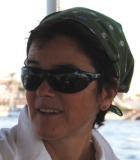
Funzione/Ruolo
Direttrice della Struttura Terremoti dell'Istituto Nazionale di Geofisica e Vulcanologia sezione di Roma
Percorso professionale
Dopo la laurea in Geologia all'università di Roma La Sapienza nel 1985, consegue l'abilitazione alla professione di geologa nel 1986. Lavora in seguito al Servizio Geologico d'Italia; dal 1987 è ricercatrice presso l'Istituto Nazionale di Geofisica e Vulcanologia di Roma, e nel 2000 assume la carica di Dirigente di Ricerca. Nel 1991-1992 e nel 1997-1998 è visiting scientist presso l'United States Geological Service di Menlo Park. in California. Dal 2013 decide di ridurre le proprie attività di ricerca per mettersi al servizio dell'INGV, ricoprendo ruoli di responsabilità e gestione interna. Dal 2013 al 2016 è direttrice della Sezione Roma1, Sismologia e Tettonofisica. Attualmente dirige la Struttura Terremoti con compiti di programmazione, sviluppo e verifica delle attività di ricerca.
Risultati scientifici
Il principale ambito di ricerca di Daniela Pantosti è la Geologia dei Terremoti e Paleosismologia (studio delle registrazioni geologiche dei terremoti del passato, attività di ricerca che offrono un contributo importante alle stime di pericolosità sismica. Queste discipline, che si occupano di caratterizzare la sismicità di una regione sulla base delle "impronte" lasciate dai terremoti del passato sul paesaggio e nella geologia, erano del tutto nuove in Italia alla fine degli anni Ottanta. Grazie al supporto dell'INGV, Daniela Pantosti ha potuto introdurle anche nel nostro Paese, utilizzandole per la prima volta per lo studio della faglia dell'Irpinia responsabile del terremoto del 1980. Attraverso l'osservazione dello sviluppo di modelli di segmentazione e ricorrenza delle faglie, della caratterizzazione delle sorgenti sismogenetiche e del loro comportamento sismico infatti risulta molto più attendibile la stima della pericolosità sismica. Visti gli ottimi risultati, questi studi si sono enormemente sviluppati e sono entrati a far parte integrante del percorso scientifico. Anche in seguito di questi successi, Pantosti ha partecipato ed è stata responsabile di progetti nazionali e internazionali riguardanti la definizione di pericolosità sismica e da tsunami in Italia, nel Mediterraneo, in California, nel Centro e Sud America e in Nuova Zelanda.
Attività editoriali e pubblicazioni
Daniela Pantosti è editrice associata per varie riviste scientifiche come Tectonophysics, Bulletin of the Seismological Society of America, Journal of Earthquake Engineering, Italian Journal of Geosciences.
È inoltre autrice di oltre numerose pubblicazioni scientifiche, tra cui:
(2018) Villani, F., Pucci, S., Civico, R., De Martini,P. M., Cinti, F. R., & Pantosti, D. Surface Faulting of the 30 October 2016 Mw 6.5 Central Italy Earthquake: Detailed Analysis of a Complex Coseismic Rupture, Tectonics, 37(10): 3378-3410.
(2018) Cinti, F. R., Civico, R., Blumetti, A. M.,Chiarini, E., La Posta, E., Pantosti, D., et al. Evidence for surface faulting earthquakes on the Montereale fault system (Abruzzi Apennines, central Italy). Tectonics, 37(9): 2758–2776.
(2017) Villani, F., L. Improta, S. Pucci, R. Civico, P.P.G. Bruno and D. Pantosti. Investigating the architecture of the Paganica Fault (2009 Mw 6.1earthquake, central Italy) by integrating high-resolution multiscale refraction tomography and detailed geological mapping, Geophysical Journal International, 208(1): 403–423.
(2016) Emergeo W.G.: Pucci S. , De Martini P.M. , Civico R. , Nappi R. , Ricci T. , Villani F. , Brunori C.A. , Caciagli M. , Sapia V. , Cinti F. R. , Moro M. , Di Naccio D. , Gori S. , Falcucci E. , Vallone R. , Mazzarini F. , Tarquini S. , Del Carlo P. , Kastelic V. , Carafa M. , De Ritis R. , Gaudiosi G. , Nave R. , Alessio G. , Burrato P. , Smedile A. , Alfonsi L. , Vannoli P. , Pignone M. , Pinzi S. , Fracassi U. , Pizzimenti L. , Mariucci M.T. , Pagliuca N. , Sciarra A. , Carluccio R. , Nicolosi I. , Chiappini M. , D’ajello Caracciolo F., Pezzo G. , Patera A. , Azzaro R. , Pantosti D., Montone P. , Saroli M. , Lo Sardo L. , Lancia M., Coseismic effects of the 2016 Amatrice seismic sequence: first geological results. Annals of Geophysics, 59, Fast Track 5.
(2016) Pucci S. , R. Civico, F. Villani, T. Ricci, E. Delcher, A. Finizola, V. Sapia, P. M. De Martini, D. Pantosti, S. Barde-Cabusson, E. Brothelande, R. Gusset, C. Mezon, S. Orefice, A. Peltier, M. Poret, L. Torres and B. Suski (2016). Deep electrical resistivity tomography along the tectonically active Middle Aterno Valley (2009 L’Aquila earthquake area, central Italy), Geophysical Journal International 207(2): 967–982.
(2015) R. Civico, C. A. Brunori, P. M. De Martini, S. Pucci, F. R. Cinti, and D. Pantosti Liquefaction susceptibility assessment in fluvial plains using airborne lidar: the case of the 2012 Emilia earthquake sequence area (Italy), Natural Hazards ad Earth System Science, 15(11): 2473–2483.
(2015) Civico R., S. Pucci, P.M. De Martini, D. Pantosti (2015). Morphotectonic analysis of the long-term surface expression of the 2009 L'Aquila earthquake fault (Central Italy) using airborne LiDAR data. Tectonophysics 644–645:108-121.
(2015) Civico R., D. Pantosti, S. Pucci, P.M. De Martini (2014). The Contribution of Airborne LiDAR Data to the Assessment of Surface Faulting Hazard for Lifelines Crossing Active Faults: An Example from the Central Apennines, Italy, in G. Lollino et al. (eds.), Engineering Geology for Society and Territory. Volume 5.
(2014) Papadopoulos G.A., E. Gràcia, R. Urgeles, V. Sallares, P. M. De Martini, D. Pantosti, M. González, A. C. Yalciner, J. Mascle, D. Sakellariou, A. Salamon, S. Tinti, V. Karastathis, A. Fokaefs, A. Camerlenghi, T. Novikova, A. Papageorgiou. Historical and pre-historical tsunamis in the Mediterranean and its connected seas: Geological signatures, generation mechanisms and coastal impacts. Marine Geology, 354: 81–109.
(2013) Clark KJ, Cochran UA, Berryman KR, Biasi G, Langridge R, Villamor P, Bartholomew T, Litchfield N, Pantosti D, Marco S, Van Dissen R, Turner G, Hemphill-Haley M. Deriving a long paleoseismic record from a shallow water Holocene basin next to the Alpine fault, New Zealand. Geological Society of America Bulletin, 125(5-6): 811-832.
Riconoscimenti e premi
Nel 1995 riceve l'ILP Edward Flinn award per "il suo contributo allo studio della Paleosismologia e Tettonica dell'Olocene in diverse aree".
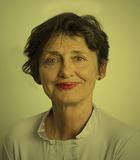
Funzione/Ruolo
Professoressa ordinaria di Psicobiologia presso l'Università degli studi di Milano Bicocca
Percorso professionale
Dopo la laurea in Medicina e Chirurgia all'Università degli Studi di Milano, nel 1981 intraprende un percorso di specializzazione in Neurologia presso la medesima università conclusosi nel 1985. Dal 1986 al 1989 è impegnata nel dottorato di ricerca in Psicobiologia (settore Neuropsicologia). Successivamente, dal 1992 al 1993, è ammessa al primo anno del Corso della Scuola di Specializzazione in Psichiatria. Già dal 1982 è medica interna presso l'Istituto di Clinica Neurologica dell'Università di Milano dove vince nel 1984 la borsa di studio della CIBA-Geigy per lo studio delle "Funzioni Cognitive nei cerebrolesi". Gli studi effettuati la portano a vincere una borsa di studio del Ministero degli Esteri presso la Clinica Neurologica dell'Università di Friburgo (Germania). Nel 1988 è a Cambridge dove lavora prima con una borsa dell'European Science Foundation e poi pagata dal Medical Research Council fino al 1991. Nel 1991 torna stabilmente in Italia e lavora presso la Clinica Neurologica dell'Ospedale San Paolo di Milano. Nel 1998 presso l'Università di Palermo diventa professoressa associata di Psicologia Fisiologica. Dal 2004 è invece professoressa ordinaria dell'Università degli Studi di Milano Bicocca. La sua esperienza accademica si arricchisce con la nomina a direttrice del dipartimento di Psicologia della stessa università dal 2002 al 2008, mentre è coordinatrice del Dottorato di Ricerca in Psicologia Sperimentale, Linguistica e Neuroscienze Cognitive dal 2007 al 2012. Dal 2010 al 2013 è Presidente della Scuola di Dottorato in Psicologia e Neuroscienze Cognitive e segretaria della Scuola di Specializzazione in Neuropsicologia. Da maggio 2016 è presidente della Società Italiana di Neuropsicologia.
Risultati scientifici
I principali argomenti di ricerca di Costanza Papagno sono i disturbi del linguaggio in pazienti con lesioni cerebrali focali e degenerative, con particolare riferimento alla dissociazione astratto-concreto, allo sviluppo del linguaggio in bambini con impianto cocleare (un orecchio artificiale elettronico in grado di ripristinare la percezione uditiva nelle persone con sordità profonda), agli effetti della stimolazione elettrica transcranica (tDCS) e ai disturbi di memoria a breve termine. Una delle recenti scoperte di Papagno e colleghi riguarda il "fascicolo uncinato", un fascio di fibre che (tra l'altro) fa da "ponte", collegando le due aree del cervello che servono per richiamare i nomi propri collegandoli al volto di una persona. Nel campo della memoria sono state testate le capacità del fascicolo uncinato in pazienti che hanno subito l'asportazione di un tumore al cervello. I test hanno dimostrato che i pazienti ancora in possesso del "fascicolo uncinato" sono capaci di svolgere questa operazione, diversamente dai pazienti ai quali il fascicolo è stato rimosso. I test di controllo delle altre attività cerebrali (memoria a lungo termine, comprensione di parole e frasi e cognizione spaziale) invece non hanno dimostrato differenze fra pazienti in possesso o meno del fascicolo.
Attività editoriali e pubblicazioni
Costanza Papagno fa parte di numerosi comitati scientifici ed è editrice di diverse riviste scientifiche oltre che autrice di numerosi articoli, tra cui:
(2016) Papagno C, Casarotti A. Comi A, Pisoni A, Lucchelli F, Bizzi A, Riva M, Bello L. Long-term proper name anomia after removal of the uncinate fasciculus. Brain Function and Structure, 221, 687-694.
(2016) Papagno C, Pisoni P, Mattavelli G, Casarotti A, Comi A, Fumagalli F, Vernice M, Fava E, Riva M, Bello L. Specific disgust processing in the left insula: New evidence from direct electrical stimulation. Neuropsychologia, 84, 29-35.
(2016) Papagno C, Cecchetto C, Pisoni A, Bolognini N. Deaf, blind or deaf-blind: Is touch enhanced? Experimental Brain Research, 234, 627-636.
(2014) Papagno C, Vallar G. A plastic brain for a changing environment. Cortex, 58, 248-250.
(2014) Vallar G, Bello L, Bricolo E, Castellano A, Casarotti A, Falini A, Riva M, Fava E, Papagno C. Cerebral correlates of visuo-spatial neglect. A direct cerebral stimulation study. Human Brain Mapping, 35(4):1334-50.
(2013) Papagno C, Vernice M, Cecchetto C. Phonology without semantics? Good enough for verbal short-term memory. Evidence from a patient with semantic dementia. Cortex, 49, 626-636.
(2011) Papagno C, Miracapillo C, Casarotti A, Romero Lauro L, Castellano A, Falini A, Casaceli G, Bello L. What is the role of the uncinate fasciculus? Surgical removal and proper name retrieval. Brain, 134, 405-414.
(2011) Papagno C, Gallucci M, Casarotti A, Castellano A, Falini A, Carrabba G, Giussani C, Fava E, Bello L, Caramazza A. Connectivity constraints on cortical reorganization of neural circuits involved in object naming. Neuroimage, 55, 1306-1313.
(2011) Cattaneo Z, Pisoni A, Papagno C. Transcranial direct current stimulation over Broca's region improves phonemic and semantic fluency in healthy individuals. Neuroscience, 183, 64-70.
(1998) Baddeley AD, Gathercole S, Papagno C. The Phonological loop as a language learning device. Psychological Review, 105, 158-173.
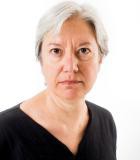
Funzione/Ruolo
Professoressa di Chimica e Biologia molecolare al King's College di Londra
Percorso professionale
Laureata in Chimica all’Università Federico II di Napoli, nel 1982 si trasferisce negli Stati Uniti dove lavora per un paio di anni al Dipartimento di Biochimica dell’Università del Wisconsin. Nel 1984 grazie a un progetto di sambio fra ITlia e Svizzera entra nel team di ricerca del Premio Nobel Richard Robert Ernst, all’Università di Zurigo. Nel 1987 consegue un postdottorato all’Università di Oxford e nel 1988 inzia a lavorare all’EMBL (European Molecular Biology Laboratory) di Heidelberg in Germania, dove nel 1991 viene nominate a capo del Programma Srutture. Nello stesso anno diviene team leader del National Institute for Medical Research di Londra. Nel 2013 diventa professoressa ordinaria al King’s College di Londra, dove continua a insegnare con un incarico part-time, fino al 2018, anche quando ottiene una cattedra all’Università di Pavia. Nel 2018 viene nominata professoressa all’Università Normale di Pisa, prima e unica donna docente ordinaria nella classe di Scienze della Normale in 208 anni di vita della scuola. All'inizio del 2019 si dimette in seguito a ostacoli burocratico-amministrativi che non le consentono di mantenere il suo incarico al King’s College di Londra dove è ora ritornata a tempo pieno.
Risultati scientifici
Annalisa Pastore si è occpata per piu' di 30 anni della relazione tra struttura e funzione di peptide e proteine. Dopo un esordio lavorando su proteine strutturali muscolari, si occupa da molti anni di proteine coinvolte nella neurodegenerazione. Due i principali filoni di ricerca: il primo riguarda malattie mitocondriali con particolare attentione alla atassia di Friedreich's su cui lavoro da quando il gene responsabile e' stato scoperto nel 1996. Di questa proteina abbiamo studiato con attenzione la struttura, le proprieta' di legame e scoperto che fa' parte di un complesso proteico responsabile per la formazione dei cluster a ferro Zolfo, gruppi importantissimi che provvedono al trasferimento elettronico nelle proteine. Il secondo filone si interessa invece di proteine che prendeno parte a processi aggregative quali quelli che hanno luogo nell'Alzheimer e nel Parkinson.
Attività editoriali e pubblicazioni
Annalisa Pastore è autrice di circa 300 pubblicazioni scientifiche, fra cui:
(2018) Yan, R., Yalinca, H., Paoletti, F., Gobbo, F., Marchetti, L, Kuzmanic, A., Lamba, D., Gervasio, F.L., Konarev, P.V., Cattaneo, A., Pastore, A. The structure of the Pro-domain of mouse proNGF in contact with the NGF domain. Structure, 27(1):78-89.
(2017) Alfano C, Sanfelice D, Martin SR, Pastore A, Temussi PA. An optimized strategy to measure protein stability highlights differences between cold and hot unfolded states. Nature Commun. 8:15428.
(2016) Corvino, A., Severino, B., Fiorino, F., Frecentese, F., Magli, E., Perissutti, E., Santagada, V., Bucci, M., Cirino, G., Kelly, G., Servillo, L., Popowicz, G., Pastore, A., Caliendo, G. Fragment-based de novo design of a cystathionine y-lyase selective inhibitor blocking hydrogen sulfide production. Scientific Reports, 6, 64398.
(2015) Ruggeri, F.S., Longo, G., Faggiano, S., Lipiec, E., Pastore, A*., Dietler, G.* Infrared nanospectroscopy characterization of oligomeric and fibrillar aggregates during amyloid formation. Nature Comm., 6, 7831.
(2013) Yan, R., Konarev, P.V. Iannuzzi, C., Adinolfi, A., Roche, B.., Kelly, G., Simon, L., Martin, S.R. Py, B., Barras, F., Svergun, D.I., Pastore, A. Ferredoxin competes with bacterial frataxin in binding to the desulfurase IscS. JBC 288: 24777-87.
(2010) Prischi, F., Konarev, P.V., Iannuzzi, C., Pastore, C., Adinolfi, S., Martin, S.R., Svergun, D.I., Pastore, A. Structural bases for the interaction of frataxin with the central components of iron-sulfur cluster assembly. Nature Communications 1, 95.
(2005) Nicastro, G., Menon, R., Masino, L., McDonalds, N.O., Pastore, A. The solution structure of the Josephin domain of ataxin-3: Structural determinants for molecular recognition. PNAS 102: 10493-10498.
(2001) Atkinson, R. A., Joseph, C., Kelly, G., Muskett, F.W.,Frenkiel, T.A., Nietlispach, D., Pastore, A. Ca2+-independent binding of an EF-hand domain to a novel motif: an alpha-actinin/titin complex. Nature Struct. Biol. 8: 853-857.
(1996) Musco, G., Stier, G., Joseph, C., Castiglione Morelli, M.A., Nilges, M., Gibson, T.J., Pastore, A. Three-dimensional structure and stability of the KH domain: Molecular insights into the Fragile X syndrome. Cell 85: 237-245.
(1994) Pfuhl M., Winder S. and Pastore, A. Nebulin, a helical actin binding protein. EMBO J. 1782-1789.
Riconoscimenti e premi
Nel 2000 viene nominata EMBO Membership e nel 2013 membro della Academia Europeae.

Area STEM: Fisica
Competenze: fisica delle particelle elementari, fisica teorica, fisica teorica delle interazioni fondamentali, gravità quantistica, meccanica quantistica, teoria della relatività di Einstein
Parole chiave: buchi neri, gravità, supersimmetria, teoria dei campi, teoria delle stringhe, teorie di gauge
Regione: Lombardia
Funzione/Ruolo
Professoressa ordinaria di Fisica Teorica all'Università Milano Bicocca.
Percorso professionale
Silvia Penati si laurea in Fisica nel 1984 presso l’Università degli studi di Milano. Nel 1985 entra nella scuola di dottorato del Dipartimento di Fisica dell’Università di Milano dove prende il titolo di Dottore di Ricerca nel 1989. Nel 1988 è vincitrice di una borsa di studio post dottorato presso la Brandeis University, Massachusetts, US, dove svolge le sue ricerche fino alla fine del 1990. Rientrata in Italia con una borsa post dottorato presso il Dipartimento di Fisica dell’Università di Milano, nel 1992 vince in quella sede un concorso da ricercatore. Nel 2000 si trasferisce nella neonata Università di Milano-Bicocca dove diventa professoressa associata nel 2003 e professoressa ordinaria nel 2017. Nel 2013 risulta vincitrice, come Principal Investigator, di un progetto europeo COST “The String Theory Universe”, che coinvolge circa 500 studiosi da 25 paesi europei, progetto di cooperazione scientifica in Fisica Teorica che ha una particolare attenzione al problema della bassa rappresentanza femminile in questo ambito. Dal 2012 al 2018 è Presidente del Consiglio di Coordinamento Didattico del Dipartimento di Fisica, Università di Milano-Bicocca. Dal 2020 coordina un gruppo di lavoro di Ateneo sulle tematiche di genere, nonché il network europeo GenHET, con sede al CERN di Ginevra, attivo nel promuovere e sostenere l’eccellenza femminile nella Fisica Teorica. È relatrice invitata a molti congressi internazionali. È organizzatrice di numerose conferenze internazionali, svolge costantemente attività di revisore per le principali riviste internazionali del settore e di valutatrice esterna per progetti europei e dell’Australian Research Council.
Dal 1992 tiene insegnamenti di Meccanica Quantistica, Relatività Generale, Teoria dei Campi e Metodi Matematici per la Fisica per le Lauree Triennale e Magistrale in Fisica. Tiene periodicamente corsi di supersimmetria in scuole di Dottorato internazionali. Nell’arco della sua carriera ha svolto attività di relatrice di tesi per circa un centinaio di studenti di Laurea Triennale e Magistrale e quindici studenti di Dottorato.
Dal 1985 svolge costantemente attività di divulgazione scientifica nelle scuole secondarie di secondo grado e per il pubblico in generale.
Risultati scientifici
Silvia Penati ha iniziato la sua carriera nella ricerca lavorando su diversi aspetti della teoria delle stringhe, una teoria che, originariamente nata nel tentativo di unificare le quattro forze fondamentali ad alte energie, gravità inclusa, si è successivamente sviluppata come potente apparato matematico, fonte ispiratrice di nuove idee non solo per lo studio teorico delle particelle elementari, ma più in generale per lo studio di sistemi fisici fortemente accoppiati. I principali contributi in questo ambito hanno riguardato lo studio della dinamica interagente di particelle di spin arbitrario, modelli sigma di stringa accoppiati alla gravità, e lo studio di sistemi integrabili in due dimensioni di interesse per le loro applicazioni alla descrizione di fenomeni bidimensionali quali l’effetto Kondo, sistemi dissipativi, problemi di impurità quantistica ed effetto Hall quantistico. Negli anni successivi Silvia Penati si è occupata dello studio di teorie di campo quantistiche con supersimmetria e supergravità, inspirati dalla teoria delle stringhe e di interesse per i più recenti sviluppi sulla descrizione olografica dell’interazione gravitazionale. In questo contesto i risultati più recenti e rilevanti riguardano le teorie di gauge supersimmetriche in tre dimensioni, lo sviluppo di test teorici non banali della corrispondenza AdS/CFT, una realizzazione esplicita del principio olografico per la descrizione della gravità a livello quantistico e dei buchi neri, e la descrizione di sistemi fisici con difetti e impurità.
Attività editoriali e pubblicazioni
Silvia Penati è autrice di più di 100 pubblicazioni su riviste internazionali ad alto impatto con peer-review.
Di seguito una selezione:
[1988] Howe P S, Penati S, Pernici M, Townsend P K, Wave Equations for arbitrary spin from Quantization of the Extended Supersymmetric Spinning Particle, Physics Letters B215 (1988): 555-558.
[1995] Penati S, Zanon D, Quantum Integrability in two-dimensional systems with boundary, Physics Letters B358 (1995): 63-72.
[2000] Mussardo G, Penati S, A quantum Field Theory with Infinite Resonance States, Nuclear Physics B567: 454-492.
[2000] Gates S J, Grisaru M T, Penati S, Holomorphy, minimal homotopy and 4D, N=1 Bardeen-Gross- Jackiw anomaly, Physics Letters B481 (2000): 397-407.
[2002] Arutyunov G, Penati S, Petkou A C, Santambrogio A, Sokatchev E, Nonprotected operators in N=4 SYM and multiparticle states of AdS(5) SUGRA, Nuclear Physics B643 (2002): 49-78.
[2003] Klemm D, Penati S, Tamassia L, Non(anti)commutative superspace, Classical Quantum Gravity 20 (2003): 2905-2916.
[2003] Grisaru M T, Penati S, Romagnoni A, Two loop renormalization for nonanticommutative N=1/2 supersymmetric Z model, JHEP 08 (2003):003.
[2005] Mauri A, Penati S, Santambrogio A, Zanon D, Exact results in planar N=1superconformal Yang-Mills theory, JHEP 11 (2005): 024.
[2010] Bianchi M S, Penati S, Siani M, Infrared stability of N=2 Chern-Simons matter theories, JHEP 05 (2010): 106.
[2011] Bianchi M S, Leoni M, Mauri A, Penati S, Santambrogio A, Scattering Amplitudes/Wilson Loop duality in ABJM theory, JHEP 01 (2011): 073.
[2017] Bianchi M S, Griguolo L, Mauri A, Penati S, Preti M, Seminara D, Towards the exact Bremsstrahlung function of ABJM theory, JHEP 08 (2017): 022.
[2021] Penati S, Superconformal Line Defects in 3D, Universe 7 (2021) 9: 348.
La lista completa è disponibile su
https://inspirehep.net/literature?sort=mostrecent&size=25&page=1&q=a%20penati%2Cs.
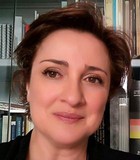
Funzione/Ruolo
Ricercatrice presso l’INGV (Istituto Nazionale di Geofisica e Vulcanologia) e Segretaria generale dell'International Association for Promoting Geoethics
Percorso professionale
Dopo la laurea in Scienze Geologiche e il Dottorato di Ricerca in Scienze della Terra all’Università di Roma La Sapienza, nel 1999 comincia la sua attività scientifica nel settore della pericolosità geologica e dei rischi naturali, collaborando con il Gruppo Nazionale per la Difesa dai Terremoti del Consiglio Nazionale delle Ricerche, l’Università di RomaTre, l’Università di Genova e il Politecnico di Milano. Dal 2008 al 2011 è professoressa di Geologia, Geologia applicata e Geotecnica alla Facoltà di Architettura dell’Università di Roma La Sapienza e all’Università di Viterbo Tuscia. Dal 2012 è docente del Corso di Dottorato in Paesaggio e Ambiente all’Università di Roma La Sapienza. Nel 2016 è docente dell’École Polytechnique Fédérale di Losanna (Svizzera) per il corso online “Disaster Risk Reduction” sul tema della resilienza e della geoetica. Nel 2012 fonda l’International Association for Promoting Geoethics, un network scientifico, con più di 1600 membri in 116 nazioni, che ha lo scopo di analizzare e valorizzare gli aspetti etici, sociali e culturali delle Scienze della Terra. È stata eletta recentemente Consigliera dello IUGS (International Union of Geological Sciences) per il quadriennio 2018-2022. È membro del Consiglio Direttivo della Società Geologica Italiana dal 2013, membro del Comitato Esecutivo dello IAEG Italy (International Association for Engineering Geology and the Environment) dal 2015 e coordinatrice della sezione di “Geoetica e Cultura Geologica” della Società Geologica Italiana dal 2012. Dal 2017 è membro dell’Ethical Advisory Board of ICOS ERIC (Integrated Carbon Observation System), infrastruttura di ricerca pan-europea dedicata ai dati scientifici sul ciclo del carbonio e sui gas serra. Dal 2014 al 2016 è Senior Editor della Oxford University Press per la collana “Natural Hazard Science”. Dal 2017 è membro dell’Editorial Board della rivista "Scienze e Ricerche".
Risultati scientifici
Dal 1999 partecipa a progetti di ricerca nazionali ed internazionali sulle pericolosità geologiche, i rischi naturali e la microzonazione sismica, con particolare riferimento ai centri storici e ai siti di beni monumentali. Nel 2007 comincia ad occuparsi di comunicazione della scienza e di divulgazione delle geoscienze, attività che la porta a pubblicare due libri con l’editore Il Mulino di Bologna. Dal 2012 si dedica costantemente alla sviluppo della geoetica, ovvero allo studio delle implicazioni etiche, sociale, filosofiche e culturali della ricerca e della pratica delle geoscienze, di cui è tra i maggiori esperti a livello mondiale. L’attività sulla geoetica la impegna nell’organizzazione di sessioni scientifiche nei maggiori convegni internazionali di geoscienze, nella pubblicazione di volumi monografici con editori scientifici internazionali, nella partecipazione in qualità di relatore ad invito a numerosi eventi scientifici. Attualmente nell’ambito del progetto europeo ENVRI-Plus è leader di un work-package dedicato allo sviluppo di un quadro di riferimento etico per le infrastrutture europee di ricerca nel settore ambientale e della Terra solida. Collabora con quotidiani e magazine (tra cui il Corriere della Sera) con articoli sui temi della pericolosità geologica, della prevenzione dai rischi, della divulgazione scientifica.
Attività editoriali e pubblicazioni
Silvia Peppoloni è autrice di due libri divulgativi: (con Doglioni), Pianeta Terra: una storia non finita (Il Mulino, 2016) e Convivere con i rischi naturali (Il Mulino, 2014).
Inoltre è autrice di numerose pubblicazioni scientifiche. Tra le più recenti:
[2018] Arattano M., Peppoloni S., Gatti A. The ethical duty to divulge geosciences and the improvement of communication skills to fulfill it. Episodes, 41(2): 97-103.
[2017] Peppoloni S., Di Capua G., Bobrowsky P., Cronin V. (a cura di). Geoethics at the heart of all geoscience. Annals of Geophysics, 60, Fast track 7.
[2017] Bobrowsky P., Cronin V., Di Capua G., Kieffer S., Peppoloni S. "The emerging field of geoethics". In Scientific Integrity and Ethics: With Applications to the Geosciences,a cura di L. Gundersen, Special Publication American Geophysical Union. New York, John Wiley.
[2016] Peppoloni S., Di Capua G. "Geoethics: Ethical, social, and cultural values in geosciences research, practice, and education". In Geoscience for the Public Good and Global Development: Toward a Sustainable Future, a cura di Wessel G., Greenberg J., Geological Society of America, Special Paper, 520:17-21.
[2016] Di Capua G, Peppoloni S, Amanti M, Cipolloni C and Conte G. "Site classification map of Italy based on surface geology". In Developments in Engineering Geology, a cura di Eggers M.J., Griffiths J.S., Parry S., Culshaw M.G. Geological Society, London. Engineering Geology Special Publication, 27: 147–158.
[2015] Peppoloni S., Di Capua G (a cura di). Geoethics: the Role and Responsibility of Geoscientists. Geological Society, London, Special Publications, 419.
[2015] Peppoloni S, Bobrowsky P, Di Capua G. "Geoethics: A Challenge for Research Integrity in Geosciences". In Integrity in the Global Research Arena, a cura di Steneck N, Anderson M, Kleinert S, Mayer T., World Scientific, pp. 287-294
[2014] Wyss M., Peppoloni S. (a cura di). Geoethics, Ethical Challenges and Case Studies, in Earth Sciences, Elsevier.
[2014] Matteucci R., Gosso G., Peppoloni S., Piacente S., Wasowski J. The “Geoethical Promise”: A Proposal. Episodes, 37, 3:190-191.
[2014] Peppoloni S., Di Capua G. "Geoethical aspects in the natural hazards management". In Engineering Geology for Society and Territory, Vol. 17, a cura di Lollino G, Arattano M, Giardino M, Oliveira R, Peppoloni S. Education, Professional Ethics and Public Recognition of Engineering Geology. Springer.
Riconoscimenti e premi
Nel 2017 riceve il Premio Speciale della Giuria alla XX Edizione del Premio di Letterario “Parco Majella" per il libro, scritto in collaborazione con Carlo Doglioni, Pianeta Terra: una storia non finita, che le vale anche il terzo posto al Premio Nazionale per la Divulgazione Scientifica nella categoria Matematica, Fisica e Scienze Naturali, 2016. Per lo stesso riconoscimento, è stata finalista nell’edizione 2014, con il libro Convivere con i rischi naturali.

Area STEM: Scienze cliniche e scienza dell'alimentazione
Competenze: medicina nucleare, neurologia, neuroscienze cliniche, radiologia
Parole chiave: cervello, demenza, diagnostica per immagini, malattie neurodegenerative, morbo di parkinson, neuroscienze, risonanza magnetica (mri) funzionale e strutturale, tomografia ad emissione di positroni (pet)
Regione: Lombardia
Funzione/Ruolo
Professoressa ordinaria di Neuroscienze all'Università Vita-Salute San Raffaele di Milano e Capo Unità "In vivo Human Molecular and Structural Neuroimaging", Divisione di Neuroscienze, Istituto Scientifico San Raffaele, Milano
Percorso professionale
Dopo aver conseguito la laurea in Medicina e Chirurgia all'Università degli Studi di Milano, prosegue la sua formazione attraverso una specializzazione in Neurologia, alla quale ne segue un'altra in Radiologia, sempre presso l'Università di Milano. Nel biennio 1987-1988 lascia l'Italia per Londra dove è ricercatrice presso la Royal Post-Graduate Medical School, Hammersmith Hospital, University of London. Nel 1989, tornata in Italia, diventa ricercatrice presso l'Istituto Tecnologie Biomediche Avanzate del C.N.R. di Milano; dal 1991 al 2000 è dirigente di ricerca dell'Istituto di Neuroscienze e Bioimmagini del C.N.R. di Milano. Dal 2001 è professoressa ordinaria di Neuroscienze all'Università Vita-Salute San Raffaele di Milano, Capo Unità "In vivo Human Molecular and Structural Neuroimaging" della divisione di Neuroscienze dell'Istituto Scientifico San Raffaele e coordinatrice dell'Area Attività Diagnostica Neuroimmagini, Medicina Nucleare, dell'Ospedale San Raffaele. Dal 2021 è anche Direttrice della Scuola di Specializzazione in Neuropsicologia, della Facoltà di Psicologia.
Risultati scientifici
Daniela Perani e il suo gruppo sviluppano numerosi progetti di ricerca nel campo delle neuroimmagini strutturali (MRI) e molecolari (PET), tecniche applicate allo studio delle malattie neurodegenerative. Gli studi di Daniela Perani si svolgono anche nel campo delle neuroimmagini funzionali (fMRI) per lo studio delle funzioni cognitive nella norma e delle loro modificazioni associate a malattie neurologiche. L'utilizzo di tecniche di neuroimaging funzionali (come SPECT, PET, fMRI) infatti consente l'indagine diagnostica in numerose neuroscienze cognitive come la neuropsicologia, la neurofisiologia (sistemi sensorimotori) e la neurologia (studio di demenze, malattie cerebrovascolari, malattie extrapiramidali come il morbo di Parkinson, sclerosi multipla e malattie prioniche, determinate dall'accumulo cerebrale di una proteina anomala, il prione). Queste tecniche forniscono la possibilità di indagare in vivo, in soggetti normali o in pazienti, l'attività funzionale cerebrale durante la esecuzione di compiti sensorimotori o cognitivi. Le tecniche PET e fMRI hanno dimostrato l'interazione tra flusso ematico e funzione cerebrale. Queste metodiche ad alta risoluzione spaziale consentono una precisa localizzazione anatomica della attivazione regionale cerebrale, che a sua volta rappresenta il correlato funzionale dell'attività mentale in vivo.
Attività editoriali e pubblicazioni
È autrice di più di 250 pubblicazioni scientifiche nazionali ed internazionali, fra cui:
(2013) Klunk WE, Perani D. Amyloid and neurodegeneration: Converging and diverging paths. Neurology, 81(20):1728-1729.
(2013) Garibotto V, Tettamanti M, Marcone A, Florea I, Panzacchi A, Moresco R, Virta JR, Rinne J, Cappa SF, Perani D. Cholinergic activity correlates with reserve proxies in Alzheimer's disease. Neurobiology of Aging, 34(11):2694.e13-8.
(2013) Iannaccone S, Cerami C, Alessio M, Garibotto V, Panzacchi A, Olivieri S, Gelsomino G, Moresco RM, Perani D. In vivo microglia activation in very early dementia with Lewy bodies, comparison with Parkinson's disease. Parkinsonism & Related Disorders, 19(1): 47-52.
(2013) Consonni M, Cafiero R, Marin D, Tettamanti M, Iadanza A, Fabbro F, Perani D. Neural convergence for language comprehension and grammatical class production in highly proficient bilinguals is independent of age of acquisition. Cortex, 49(5):1252-1258.
(2013) Nordberg A, Carter SF, Rinne J, Drzezga A, Brooks DJ, Vandenberghe R, Perani D, Forsberg A, Långström B, Scheinin N, Karrasch M, Någren K, Grimmer T, Miederer I, Edison P, Okello A, Van Laere K, Nelissen N, Vandenbulcke M, Garibotto V, Almkvist O, Kalbe E, Hinz R, Herholz K. A European multicentre PET study of fibrillar amyloid in alzheimer's disease. European Journal of Nuclear Medicine and Molecular Imaging, 40(1):104-114.
(2012) Tettamanti M, Rognoni E, Cafiero R, Costa T, Galati D, Perani D. Distinct pathways of neural coupling for different basic emotions. Neuroimage, 59(2):1804-1817.
(2012) Babiloni C, Buffo P, Vecchio F, Marzano N, Del Percio C, Spada D, Rossi S, Bruni I, Rossini PM, Perani D. Brains "in concert": Frontal oscillatory alpha rhythms and empathy in professional musicians. Neuroimage, 60(1):105-116.
(2012) Marcone A, Garibotto V, Moresco RM, Florea I, Panzacchi A, Carpinelli A, Virta JR, Tettamanti M, Borroni B, Padovani A, Bertoldo A, Herholz K, Rinne JO, Cappa SF, Perani D. [11]-MP4A PET cholinergic measurements in amnestic mild cognitive impairment, probable alzheimer's disease, and dementia with lewy bodies: A bayesian method and voxel-based analysis. Journal of Alzheimer's Disease, 31(2):4387-399.
(2012) Canessa N, Alemanno F, Riva F, Zani A, Proverbio AM, Mannara N, Perani D, Cappa SF. The neural bases of social intention understanding: The role of interaction goals. PLoS ONE, 7(7).
(2012) Lalli S, Piacentini S, Franzini A, Panzacchi A, Cerami C, Messina G, Ferré F, Perani D, Albanese A. Epidural premotor cortical stimulation in primary focal dystonia: Clinical and 18F-fluoro deoxyglucose positron emission tomography open study. Movement Disorders Journal, 27(4):533-428.
Riconoscimenti e premi
Daniela Perani è la coordinatrice Italiana Neuroimaging del Progetto Finalizzato RETI Nazionali Alzheimer 2014-2017, fa inoltre parte della Società Italiana di Neuropsicologia, della Società Internazionale di Neuroscienze (ISFNSCI) ed è componente dell'International Neuropsychological Symposium, dal 2000.
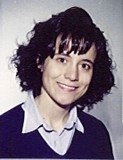
Funzione/Ruolo
Professoressa ordinaria di Informatica presso l'Università La Sapienza di Roma
Percorso professionale
Dopo la laurea in Scienze dell'Informazione all'Università degli Studi di Roma La Sapienza nel 1993, prosegue la sua formazione con un dottorato di ricerca in Ingegneria Informatica conseguito presso la stessa università. Durante il dottorato è vincitrice di una prestigiosa borsa di studio Fulbright grazie alla quale nel 1996 è Visiting Research Associate presso l'Advanced Communications Technologies laboratory della Boston University, l'anno successivo presso la Erik Jonsson School of Engineering and Computer Science della University of Texas, a Dallas. Nel 1998, collabora con il Dipartimento di Elettronica e Informazione del Politecnico di Milano. Dall'anno successivo è assegnista di ricerca al Politecnico di Milano. Dall'anno successivo è assegnista di ricerca al Politecnico di Milano e svolge anche attività didattiche. Da 2001 è ricercatrice di ruolo di Informatica alla Università degli Studi di Roma La Sapienza, dove nel 2006 diventa professoressa associata e nel 2021 professoressa ordinaria. Dal gennaio 2021 è Prorettrice con delega allo Sviluppo della cultura imprenditoriale per il potenziamento della terza missione.
Risultati scientifici
L'attività di ricerca di Chiara Petrioli riguarda lo sviluppo di soluzioni per sistemi wireless di prossima generazione, reti di sensori e "Internet delle cose". In particolare Chiara Petrioli ha coordinato il progetto europeo GENESI che ha sviluppato innovativi sistemi di monitoraggio strutturale statico e dinamico degli edifici, ponti e tunnel, sperimentati nella fase di costruzione della metro B1 di Roma e della costruzione del Pont de la Poya in Svizzera. Le tecnologie sviluppate in GENESI consentono di fornire dati in real-time per lunghi periodi di tempo grazie ad un nuovo paradigma di comunicazione, basato su wake up radio, che consente di far consumare energia ai dispositivi solo quando devono effettuare operazioni o comunicare, e grazie alla capacità di alimentare i dispositivi mediante energy harvesting, ovvero di raccogliere energia dall'ambiente mediante micro-turbine eoliche e celle solari. In una collaborazione con il Ministero Per i Beni e le Attività Culturali il gruppo di Chiara Petrioli ha quindi sviluppato sistemi di monitoraggio micro-climatico, shock e vibrazioni i cui dati stanno contribuendo a definire "buone pratiche e linee guida" per aumentare la sicurezza delle opere d'arte in fase di trasporto. Tali sistemi sono stati usati all'interno del progetto Safe-Art per monitorare oltre quaranta trasporti di importanti opere d'arte (quali la Pietà Rondinini, il Narciso di Caravaggio, il Marcello del Louvre, la Livia Orante dei Vaticani, il Cratere di Eufronio del Museo di Villa Giulia). Chiara Petrioli ha anche proposto soluzioni per estendere l'Internet delle cose agli ambienti marini. Grazie alle tecnologie sviluppate dal suo gruppo e da venti partner internazionali nel progetto SUNRISE sono stati sviluppati nodi sensori sottomarini e veicoli autonomi sottomarini interconnessi in una rete e in grado di cooperare e svolgere compiti complessi. Queste tecnologie stanno ponendo le basi per creare un sistema di monitoraggio intelligente per l'ambiente marino, rendendo possibile lo sfruttamento sostenibile delle sue risorse e consentendo di basare su dati quantitativi le politiche per la salvaguardia di tale ambiente. Il sistema SUNRISE ha applicazione in vari contesti applicativi: dal monitoraggio ambientale, alla conservazione e valorizzazione dei siti archeologici sommersi, alla protezione delle infrastrutture critiche e dei confini marittimi, al monitoraggio di allevamenti di acquacoltura. Nel dicembre del 2016 è stato incluso in NT100, ovvero la lista di Nominet Trust sulle migliori 100 "global social tech changing our lives".
Attività editoriali e pubblicazioni
Chiara Petrioli è, ed è stata, componente dell'editorial board di molte riviste scientifiche internazionali. È autrice di numerose pubblicazioni, tra cui:
(2016) Ateniese G, Bianchi G, Capossele A, Petrioli C, Spenza D. Low-cost Standard Signatures for Energy-Harvesting Wireless Sensor Networks. ACM Transactions on Embedded Computing Systems.
(2015) Petrioli C, Petroccia R, Potter JR, Spaccini D. The SUNSET framework for simulation, emulation and at-sea testing of underwater wireless sensor networks. Ad Hoc Networks, 34:224-238.
(2015) Basagni S, Petrioli C, Petroccia R, Spaccini D. CARP: A Channel-aware Routing Protocol for Underwater Acoustic Wireless Networks. Ad Hoc Networks, 34:92-104.
(2015) Spenza D, Magno M, Basagni S, Benini L, Paoli M, Petrioli C. Beyond Duty Cycling: Wake-up Radio with Selective Awakenings for Long-lived Wireless Sensing Systems. IEEE INFOCOM, Hong Kong, 522-530.
(2014) Petrioli P, Spenza D, Tommasino P, Trifiletti A. A Novel Wake-Up Receiver with Addressing Capability for Wireless Sensor Nodes. Distributed Computing in Sensor Systems Conference 2014:18-25.
(2014) La Porta T, Petrioli C, Phillips C, Spenza D. Sensor-mission assignment in rechargeable wireless sensor networks. ACM Transactions on Sensor Networks (TOSN), 10(4).
(2014) Basagni S, Boloni L, Gjanci P, Petrioli C, et al. Maximizing the Value of Sensed Information in Underwater Wireless Sensor Networks via an Autonomous Underwater Vehicle. Proceedings of IEEE INFOCOM. Toronto, Canada.
(2014) Petrioli C, Nati M, Casari P, Zorzi M, Basagni S. ALBA-R: Load-Balancing Geographic Routing Around Connectivity Holes in Wireless Sensor Networks. IEEE Transactions on Parallel and Distributed Systems, 25(3):529-539.
(2011) La Porta TF, Maselli G, Petrioli G. Anticollision Protocols for Single-Reader RFID Systems: Temporal Analysis and Optimization. IEEE Transaction on Mobile Computing, 10(2):267-279.
(2003) Petrioli C, Basagni S Chlamtac I, Configuring BlueStars: Multihop scatternet formation for Bluetooth networks. IEEE Transactions on Computers, Special Issue on Wireless Internet, 52:779-790.
Riconoscimenti e premi
Chiara Petrioli nel 1996 vince un Fulbright grant. I lavori del suo gruppo di ricerca hanno vinto il premio "Best poster" a IEEE INFOCOM 2013, il premio "Migliore demo" a ACM WINTECH 2013 e il premio "Migliore demo" a ACM WUWNET 2014. I progetti di ricerca coordinati da Chiara Petrioli GENESI e SUNRISE sono stati messi in evidenza come casi di successo sul sito Digital Agenda of Europe e sul sito del Vice-Presidente della Commissione Europea. Il progetto SUNRISE è stato scelto come testimonial della campagna della rappresentanza italiana della commissione europea EuFactor#.

Funzione/Ruolo
Responsabile del Coordinamento regionale di Confturismo Toscana in seno a Confcommercio Toscana. Responsabile dei Servizi alle imprese (ambiente, sicurezza, sviluppo) di Confcommercio Provincia di Firenze e Confcommercio Provincia di Arezzo.
Percorso professionale
Dopo la laurea in Ingegneria Ambiente e Territorio conseguita nel 2000 all’Università degli Studi di Firenze, e una specializzazione in Sistemi di gestione Ambientale e della Qualità, nel 2001, entra a far parte, come esperta di Ambiente e Sviluppo sostenibile, del team di Coordinatori di percorsi di Agenda 21 (il Piano di azione dell’ONU per lo sviluppo sostenibile per il XXI secolo) Terre di Siena: un percorso per la realizzazione di progetti di sostenibilità ambientale, economica e sociale sul territorio. Durante questo incarico, realizza pubblicazioni e materiale informativo e si occupa anche della formazione e del coinvolgimento di stakeholders economici e dei servizi e dei giovani, all'interno di percorsi in scuole di secondo grado.
Dal 2002 al 2004, all'interno dell'Ufficio Sviluppo & Consulenza ambientale di Monte dei Paschi Bancaverde Spa, fornisce consulenza sui temi delle certificazioni ISO 9001/ISO 14001 e EMAS per le aziende clienti e per aziende impegnate in investimenti (superiori al 1.000.000 €) nel campo delle Energie rinnovabili (parchi eolici, parchi fotovoltaici, centrali biomasse, impianti di gestione e recupero rifiuti).
E' membro, per diversi anni, di Nucleo di Valutazione Ambiente e Paesaggio di Commissione edilizia comunale.
Si occupa successivamente di marketing territoriale e di attrazione di investimenti diretti esteri dentro Toscana Promozione, Agenzia regionale di promozione economica e turistica dove, dal 2005 al 2012, lavora su temi e progetti di internazionalizzazione attiva e passiva, di ricerca e mappatura dell'offerta economica e scientifico-tecnologica regionale di eccellenza (in più settori: energie rinnovabili, immobiliare, life sciences, ICT, nautica), di promozione estera e, viceversa, della ricerca di partner o investitori esteri per il matching con le eccellenze dell'industria e della R&S regionale.
Segue CEO/Imprenditori di aziende e multinazionali toscane e Responsabili della ricerca di atenei e/o centri di ricerca toscani in missioni/tour promozionali all'estero; accompagna la delegazione selezionata dell'ICT toscana a Tokyo durante gli Eventi della Primavera italiana a Tokyo, nel 2007.
Segue l'organizzazione di incoming in Toscana di Venture Capitalist internazionali specializzati e partecipa alla cura dei relativi incontri bilaterali con imprese e attori del sistema della ricerca toscani selezionati.
Passa successivamente a svolgere attività di Key account per le aziende della meccanica e di alcuni settori dell'High Tech regionale.
Nel 2008 viene nominata nel Consiglio di Amministrazione di APEA (Agenzia provinciale per l'Energia, l'Ambiente e lo Sviluppo locale), società in house nata con compiti e competenze in materia di ambiente ed energia, ampliata successivamente a funzioni di sviluppo economico e progettazione europea.
Dal 2103 svolge attività ingegneristica e tecnico-progettuale, all'interno dell'Ufficio Opere Pubbliche della Provincia di Siena, nell'ambito della difesa del suolo e successivamente nel settore viabilità, occupandosi anche di sicurezza sul lavoro, come Responsabile del Servizio di Prevenzione e Protezione per lo stesso Ente (420 dipendenti).
Nel 2020 viene incaricata dalla multinazionale LCI Italy della funzione di HSE Manager (Sicurezza- Ambiente- Innovazione) per le aziende del gruppo in Italia (oltre 10 aziende).
Dal 2021 svolge attività di coordinamento delle Associazioni e Federazioni del comparto turistico della Regione Toscana afferenti al sistema Confcommercio, di interlocuzione vs le istituzioni, regionali e locali, per lo sviluppo del comparto.
Si occupa altresì, come Responsabile di Servizi alle Imprese, di fornire consulenza e supporto in ambito Ambiente, Sicurezza, Igiene e Privacy alle imprese associate a Confcommercio per la Provincia di Firenze e per la Provincia di Arezzo.
Risultati scientifici
Elisa Poggiali è esperta di sviluppo sostenibile, di promozione territoriale e internazionalizzazione. In particolare, si è occupata di implementazione di sistemi di gestione di impresa o di pubblica amministrazione in chiave di attenzione per l'ambiente, per la qualità, per la sicurezza e di valorizzazione e sviluppo economico attraverso la costituzione di relazioni internazionali (sia in ambito scientifico che economico) e la creazione di network di conoscenze per l'attrazione degli IDE (investimenti diretti esteri) e la crescita delle imprese regionali. Ha competenze sui temi dello sviluppo sostenibile e di condivisione di obiettivi e progetti (piani di azione) per i territori locali. Ha curato e cura lo sviluppo di impresa come consulente e la partecipazione di imprese attive in diversi settori, prevalentemente dell’alta tecnologia e dell’innovazione, a eventi e fiere specializzate all'estero.
Attività editoriali e pubblicazioni
È autrice di alcune pubblicazioni a carattere divulgativo sui temi e sui percorsi di AGENDA 21:
(2002) Iozzi G., Fiorito L., Poggiali E., Valeriani B., AG 21 Terre di Siena, Amministrazione provinciale di Siena.
(2002) Iozzi G., Fiorito L., Poggiali E., Valeriani B., Manuale guida AG21 delle Terre di Siena, Amministrazione provinciale di Siena.
(2003) Iozzi G., Fiorito L., Poggiali E., Valeriani B., Gli strumenti volontari di certificazione ambientale: percorso comune tra pubblico e privato. Circondario Valdelsa, Amministrazione provinciale di Siena.
(2003) Iozzi G., Fiorito L., Poggiali E., Valeriani B., Tracce di un processo: Agenda 21 Terre di Siena- Circondario Valdelsa, Amministrazione provinciale di Siena.
(2003) Iozzi G., Fiorito L., Poggiali E., Valeriani B., I tre volti dell'agricoltura, risorsa economica, socio-culturale ed ecologica per lo sviluppo- Circondario Valdelsa, Amministrazione provinciale di Siena.
(2005) Poggiali E., Manuale operativo di Agenda 21 Locale, Amministrazione provinciale di Siena.
E' autrice della pubblicazione realizzata per la Regione Toscana Dipartimento Politiche Territoriali e ambientali, Area Energia: Biserni, Bolognin, Chaussadis, Cesareo, Giovannoni, Mautone, Penna, Poggiali, Scenari per la realizzazione di parchi eolici da parte di Enti Locali, 2005 e di una pubblicazione sui temi della pianificazione territoriale di area vasta realizzata per l'Amministrazione provinciale di Siena per avvicinare i temi della sostenibilità, delle norme per il governo del territorio, della conservazione degli ecosistemi, dei paesaggi e del governo delle città: Campanini, Poggiali, Introduzione al PTCP della provincia di Siena per i ragazzi della scuola secondaria di secondo grado, 2006.
Si è occupata per anni (2005/2012) di realizzazione e/o revisione di documenti/contenuti per la promozione e comunicazione istituzionale e d'impresa e di web content (www.agenda21.provincia.siena.it www.investintuscany.com ).

Area STEM: Ingegneria
Competenze: economia e pianificazione dei sistemi di trasporto, gestione di aziende complesse di trasporto pubblico con azionariato pubblico/privato, ingegneria dei trasporti
Parole chiave: business plan, innovazione, mobilità, transizione ecologica, trasporti pubblici
Regione: Lombardia
Funzione/Ruolo
Amministratrice delegata di aziende operanti nel settore di trasporti pubblici.
Percorso professionale
Laureata in Ingegneria Civile – Trasporti presso l’Università di Bologna, ha passato un periodo di studio presso l'École Nationale Ponts et Chausèes a Parigi-Francia. E' stata relatrice in numerose conferenze internazionali, con pubblicazioni sia in francese che in inglese. Negli oltre 8 anni passati a Parigi, è stata ricercatrice presso INRETS (Istituto Nazionale Francese di Ricerca sui Trasporti), Reponsabile delle previsioni di medio-lungo termine della domanda di trasporto presso Keolis Group e Responsabile dei modelli di previsione dei passeggeri per i progetti delle linee a grande velocità presso il dipartimento della pianificazione degli investimenti di Rèseau Ferrè de France-SNCF.
Ritornata in Italia nel 2001, ha ricoperto il ruolo di Amministratice Delegata in aziende italiane di trasporto pubblico facenti parte di Arriva Italia- Deutsche Bahn Group. Da giugno 2018 a settembre 2019, ha assunto il ruolo di Business Innovation Director di Arriva Italia. Attualmente sta ricoprendo il ruolo di Direttrice Generale di STIE e Amministratrice Delegata di MOVIBUS, due aziende operanti nei servizi di trasporto pubblico nell’area milanese. E’ inoltre stata Presidente e Consigliera Delegata di ComoNext (Como Innovation Hub).
Risultati scientifici
Annarita Polacchini è esperta di comportamenti di mobilità degli individui, sulle scelte di localizzazione residenziale e di trasporto delle famiglie, progettazione di servizi di trasporto pubblico, gestione di aziende complesse di trasporto pubblico con azionariato pubblico/privato, business plan.
Attività editoriali e pubblicazioni
(1997) J.P.Orfeuil, A. Polacchini, "Les dépenses transports et les dépenses logement des ménages Franciliens" (I costi di trasporto e d’alloggio delle famiglie della regione parigina), DREIF, Paris.
(1997) C. Gallez, J.P.Orfeuil, A. Polacchini, "L’évolution de la mobilité quotidienne : croissance ou réduction des disparités?" (L’evoluzione della mobilità quotidiana: crescita o riduzione delle disparità?), RTS 56- numero speciale -Enquête Nationale Transports et Communications 1994, Paris
(1997) M-H. Massot, A. Polacchini, F.Broqua, J-M. Blosseville, F. Dumontet, M. Parent, "Prior technical and Economical Evaluation of a Station Car System « Praxitéle »" (Analisi tecnica e valutazione economica del sistema di locazione auto di breve durata «Praxitéle»), 4th World Congress on Intellingent Transport Systems, 21-24 Ottobre 1997, Berlin-Germany.
(1997) C. Gallez, L. Hivert, A. Polacchini, "Budgets Energie Environnement des Déplacements (BEED): un outil de diagnostic et de simulation des consommations et émissions polluantes au sein d'une région urbaine" (Budget Energia Ambiente degli Spostamenti : uno strumento per la diagnosi e la simulazione dei consumi e delle emissioni inquinamenti all’interno di una regione urbanizzata), 4° Meeting Internazionale su "Trasporto ed inquinamento dell’aria" - 9-13 giugno 1997, Avignone – apparso in inglese nella rivista «International Journal of Environnement and Pollution».
(1997) J-M. Blosseville, F. Dumontet, M-H. Massot, M. Parent, A. Polacchini, "Performance Evaluation of a Station Car System" - Transport Research Board 1997, 12-16 Janvier 1997, Washington-USA.
(1996) A. Bernard, A. Polacchini, A. Séguin, Y. Bussière, "Household Structure and Mobility Patterns of Women in O-D Survey: Methods and Results Based on the Case Studies of Montreal and Paris" (Struttura familiare e comportamenti di mobilità delle donne : metodi di studio e risultati basati sui dati di Montreal e Parigi), The Second National Conference on Women's Travel Issues', 23-26 Octobre 1996, Baltimora Maryland-USA
(1996) F. Leurent, A. Polacchini - "Sur le choix du mode de transport par les voyageurs en milieu urbain" (Analisi delle scelte del modo di trasporto scelto dai viaggiatori in ambito urbano) – DREIF, Paris.
(1996) C. Gallez, A. Polacchini, L. Hivert, "Le Budget Energie Emissions des Déplacements (BEED): un outil d'évaluation des politiques urbaines" (Budget Energia e Ambiente degli Spostamenti : uno strumento di valutazione delle politiche di pianificazione in ambito urbano), Congresso Inrets – Ademe - 'Environnement, véhicules et mobilité urbaine', Paris, 25 Giugno 1996.
(1995) A. Polacchini - "La mobilité et les échanges de déplacements des Franciliens en fonction d'une typologie de zone urbaine" (Mobilità e scambi di spostamenti nell’area parigina in funzione della tipologia urbana) – Congresso Internazionale dell’Atec a Havre - 17/18 Ottobre 1995.
(1994) F. Leurent, A. Polacchini - "Prospection d'une demande potentielle pour la voiture en libre service urbain" (Proiezione della domanda potenziale per un sistema di auto a noleggio di breve durata in ambito urbano) - Projet Praxitèle-Inrets, Octobre 1994.
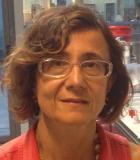
Funzione/Ruolo
Professoressa ordinaria di Biologia molecolare all'Università degli Studi di Torino
Percorso professionale
Valeria Poli consegue la laurea in Biologia, nel 1984, e poi il dottorato in Biologia umana, nel 1992, presso l'Università degli Studi di Torino. Dal 1988 al 1990 svolge un post-dottorato all'European Molecular Biology Laboratory di Heidelberg in Germania, e dal 1990 al 1992 alla Columbia University di New York. Dal 1992 al 1997 è Principal Investigator all'Istituto di Ricerche di Biologia Molecolare P. Angeletti di Roma. Dal 1997 al 2001 lavora all'Università di Dundee, in Inghilterra, come Principal Investigator, Wellcome Trust Senior Research Fellow, Honorary Senior Lecturer and Head dell'Unità Transgenica istituita presso il Dipartimento di Biochimica.
Nel 2001 diventa professoressa associata di Biologia molecolare all'Università di Torino, e poi, dal 2005, professoressa ordinaria.
Risultati scientifici
Valeria Poli ha contribuito a progressi fondamentali nella comprensione dei meccanismi che mediano l'attività e la funzione a livello trascrizionale delle citochine (molecole prodotte da vari tipi di cellule e secrete nel mezzo circostante, di solito in risposta a uno stimolo in grado di modificare il comportamento di altre cellule inducendo nuove attività come crescita, differenziazione e morte), in condizioni sia fisiologiche che patologiche. In particolare ha contribuito alla scoperta del fattore di trascrizione IL-6DBP-C/EBPbeta, che media molte delle funzioni dell'Interleuchina 6 (IL-6), una proteina che agisce come citochina multifunzionale, sia pro-infiammatoria, sia anti-infiammatoria; alla generazione e caratterizzazione di ceppi di topo mutati per i geni C/EBPbeta e IL-6, topi poi ampiamente usati dalla comunità scientifica per comprendere le funzioni fisiologiche e patologiche dei due fattori; alla generazione di ceppi murini manipolati geneticamente per il fattore di trascrizione pro-oncogenico STAT3; e infine alla caratterizzazione del ruolo pro-metastatico dei microRNA 143 e 145 nel tumore mammario.
Attualmente le attività del suo laboratorio riguardano principalmente lo studio delle funzioni biologiche del fattore di trascrizione STAT3, il principale mediatore della segnalazione delle citochine appartenenti alla famiglia dell'IL-6, utilizzando modelli cellulari e murini in vivo. In particolare si sta concentrando sulla comprensione dei meccanismi fondamentali delle attività della proteina STAT3 come oncogene, al crocevia tra infiammazione, risposta immunitaria, nicchia delle cellule staminali e tumorali e trasformazione tumorale, analizzando le sue interazioni con altri geni oncogeni / soppressori tumorali e cercando di identificare specifici geni bersaglio pro-oncogenici. Attualmente è impegnata nella ricerca sul rapporto tra cellule tumorali del seno e fibroblasti associati al cancro nella nicchia tumorale, sul ruolo dei microRNAs 143 e 145 nella EMT (Transizione Epitelio Mesenchima) e nella formazione di metastasi, e sul ruolo di STAT3 nella regolazione del metabolismo energetico e dell'omeostasi del calcio nel tumore così come nelle cellule normali.
Attività editoriali e pubblicazioni
Valeria Poli è ed è stata nel comitato editoriale di prestigiose riviste scientifiche come Cell Communication and Signaling, American Journal of Cancer Research, JAK-STAT e Frontiers in Molecular and Cellular Oncology. Svolge regolare attività di revisione scientifica per riviste internazionali come il Journal of Clinical Investigation, l'EMBO Journal, l'European Journal of Immunology, il Journal of Cell Science, il Biochemical Journal, Circulation Research, Cell Death and Differentiation e PLOS ONE.
È co-autrice di più di 130 pubblicazioni, fra cui:
[2018] Avalle L, Camporeale A, Morciano G, Caroccia N, Ghetti E, Orecchia V, Viavattene D, Giorgi C, Pinton P, Poli V. STAT3 localizes to the ER, acting as a gatekeeper for ER-mitochondrion Ca2+ fluxes and apoptotic responses. Cell Death & Differentation, 26: 932-942.
[2017] Avalle L, Incarnato D, Savino A, Gai M, Marino F, Pensa S, Barbieri I, Stadler MB, Provero P, Oliviero S, Poli V. MicroRNAs-143 and -145 induce epithelial to mesenchymal transition and modulate the expression of junction proteins. Cell Death & Differentation, 24: 1750-1760.
[2014] Demaria M, Camporeale A, Poli V STAT3 and metabolism: How many ways to use a single molecule? Int J Cancer, 135 (9): 1997-2003.
[2013] Camporeale A, Marino F, Papageorgiou A, Carai P, Fornero S, Fletcher S, Page BDG, Gunning P, Forni M, Chiarle R, Morello M, Jensen O, Levi R, Heymans S, Poli V. STAT3 activity is necessary and sufficient for the development of immune-mediated myocarditis in mice and promotes progression to dilated cardiomyopathy. EMBO Molecular Medicine, 5: 572–590.
[2012] Demaria M, Misale S, Giorgi C, Miano V, Camporeale A, Campisi J, Pinton P and Poli V. STAT3 can serve as a hit in the process of malignant transformation of primary cells, Cell Death and Differentiation, 19:1390-1397.
[2010] Barbieri I, Pensa S, Pannellini T, Quaglino E, Maritano D, Demaria M, Voster A, Turkson J, Cavallo F, Watson CJ, Provero P, Musiani P and Poli V. Constitutively active Stat3 enhances Neu-mediated migration and metastasis in mammary tumors via upregulation of Cten, Cancer Research, 70:2558-67.
[2009] Vallania F, Schiavone D, Dewilde S, Pupo E, Garbay S, Calogero R, Pontoglio M, Provero P and Poli V. Genome-Wide Discovery of Functional Transcription Factor Binding Sites by Comparative Genomics: the Case of Stat3, Proceedings of National Academy of Sciences of the United States of America, 106:5117-22.
[2004] Maritano D, Sugrue ML, Tininini S, Dewilde S, Strobl B, Fu XP, Murray-Tait V, Chiarle R and Poli V. The STAT3 isoforms, a and b, play unique and specific roles, Nature Immunology, 5:401-409.
[2001] Alonzi T, Maritano D, Gorgoni B, Rizzuto G, Libert C, Poli V. Essential role of STAT3 in the control of the acute phase response as revealed by inducible gene inactivation in the liver. Molecular and Cellular Biology, 21:1621-1632.
[1996] Screpanti I, Musiani P, Bellavia D, Cappelletti M, Aiello FB, Maroder M, Frati L, Modesti A, Gulino A and Poli V. Inactivation of the Interleukin-6 gene prevents development of Castleman's disease in C/EBPß-deficient mice, The Journal of Experimental Medicine, 184:1561-1566.
Riconoscimenti e premi
Valeria Poli è Presidente della Società Italiana di Biofisica e Biologia Molecolare e membro di prestigiose comunità scientifiche quali l'European Molecular Biology Organisation, l'Association of Cellular and Developmental Biology, l'Academia Europaea.
È revisora dei grant per l'European Research Council e fra gli esperti valutatori dei progetti Horizon 2020. Revisora regolare per la valutazione tecnico-scientifica di progetti di ricerca per il MIUR e per diversi enti e istituti internazionali quali il Biotechnology and Biological Sciences Research Council, l'American Institute for Cancer Research, il Pancreatic Cancer Research Fund, l'Austrian Science Fund, la Foundation for Scientific Research Belgium.
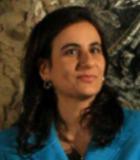
Funzione/Ruolo
Ricercatrice CNR, Responsabile del Laboratorio di Crescita Epitassiale (MOVPE ed MBE) dell'Istituto per la Microelettronica e Microsistemi (IMM) del CNR (sede di Lecce), Responsabile Scientifica per l'IMM delle attività di ricerca della Rete di Laboratori Pubblici di Ricerca PHASHYN
Percorso professionale
Dopo la laurea in Fisica nel 1991 all'Università degli Studi di Lecce, prosegue la sua formazione attraverso un dottorato di ricerca in Fisica, presso l'Università degli Studi di Bari, conseguendone il titolo nel 1996. Nel settembre 1996 vince una posizione post-dottorato per un anno in Galles, Gran Bretagna, presso il North East Wales Institute (NEWI), adesso Glyndwr University. Dal marzo 1998 è ricercatrice in Fisica della Materia presso l'IMM (Istituto per la microelettronica e i Microsistemi) del CNR, sezione di Lecce. Nel 1996/97 è docente presso diverse istituzioni straniere in Gran Bretagna, nell'ottobre 1998 Visiting Scientist presso la Chiba University, Chiba, Giappone e dal 1997 al 2011 professoressa a contratto presso la Facoltà di Ingegneria dell'Università del Salento. È relatrice di numerose tesi di laurea e dottorato.
Risultati scientifici
Le competenze di Paola Prete riguardano lo studio della crescita di materiali semiconduttori composti, in particolare nanofili, e delle loro proprietà ottiche, morfologiche e funzionali. In particolare, lo studio della sintesi di materiali semiconduttori mediante tecnologie epitassiali (da fase vapore, MOVPE e da fasci molecolari, MBE), lo studio delle proprietà fisiche, chimiche e morfologiche attraverso tecniche di spettroscopia ottica (luminescenza ed assorbimento) e di microscopia elettronica (FE-SEM, catodoluminescenza).
La ventennale attività di ricerca di Paola Prete è iniziata con lo studio delle proprietà ottiche e strutturali di etero-strutture a bassa dimensionalità di semiconduttori per applicazioni optoelettroniche. Attualmente lavora nel campo delle nanotecnologie studiando ed impiegando le tecniche di sintesi bottom-up nella fabbricazione di nano-strutture quasi-1D per applicazioni ai dispositivi per la nano-optoelettronica, fotonica e sensoristica. Tra le attività di ricerca più recenti, di particolare rilievo è l'applicazione delle nanotecnologie alle energie rinnovabili, ed in particolare all'energia solare da fonte fotovoltaica, nell'ambito della Rete di Laboratori Pubblici di Ricerca PHASHYN. Le ricerche di Paola Prete mirano alla realizzazione di celle solari di III-generazione ad alta efficienza, costituite da nanofili, (nanocristalli di semiconduttori delle dimensioni di un virus, cioè dell'ordine di poche decine di milionesimi di millimetro). Le tecnologie che Paola Prete sta sviluppando a Lecce consentiranno di impacchettarne decine di miliardi per centimetro quadro: una tecnologia sofisticata e fruibile che potrà garantire, in un futuro non troppo lontano, incrementi sostanziali nel rendimento delle celle e costi di fabbricazione relativamente bassi. All'interno di questa tematica si inserisce anche lo studio della crescita epitassiale van der Waals di materiali 2-dimensionali (quali il grafene e i materiali ‘graphene-like'). Paola Prete fa parte del Comitato Consultivo e di quello Scientifico di diversi congressi internazionali. Iscritta all'Albo degli esperti dell'Agenzia Regionale per la Tecnologia ed Innovazione della Regione Puglia (A.R.T.I.), è valutatrice di progetti di ricerca, sviluppo precompetitivo e trasferimento tecnologico dell'ARTI Puglia.
Attività editoriali e pubblicazioni
Dal 2011 è fondatrice ed Editor-in-Chief della rivista scientifica open access "Nanomaterials and Nanotechnology", SAGE, USA (2016 Impact Factor 1.536).
Dal dicembre 2016 è anche Associate Editor della prestigiosa rivista "Progress in Crystal Growth and Characterization of Materials", Elsevier (2016 Impact Factor 3.4).
Editor di libri e Guest Editor di numerosi volumi internazionali e Special Issue su riviste scientifiche peer-reviewed quali "Progress in Crystal Growth and Characterization of Materials" (Elsevier), "Crystal "Research and Technology" (Wiley-VCH), "Applied Physics A: Material Science and Processing" (Springer).
È autrice di più di 120 pubblicazioni su riviste scientifiche nazionali ed internazionali, fra cui:
[2018] Wolf D, Huebner R, Niermann T, Sturm S, Prete P, Lovergine N, Buechner B, Lubk A, Three-Dimensional Composition and Electric Potential Mapping of III-V CoreMultishell Nanowires by Correlative STEM and Holographic Tomography. Nano Letters, 18 (8) 4777-4784.
[2017] Di Carlo V, Prete P, Dubrovskii V G, Berdnikov Y, Lovergine N, CdTe nanowires by Au-catalyzed Metalorganic Vapor Phase Epitaxy. Nano Letters, in stampa (pubblicato on-line 14 giugno, 2017), DOI: 10.1021/acs.nanolett.7b00719.
[2015] Bianco GV, Losurdo M, Giangregorio MM, Sacchetti A, Prete P, Lovergine N, Capezzuto P, and Bruno G, Direct epitaxial CVD synthesis of tungsten disulfide on epitaxial and CVD graphene. RSC Advances, 5:98700-98708.
[2015] Chen G., McGuckin T, Hawley C J, Gallo EM, Prete P, Miccoli I, Lovergine N, Spanier J E, Subsurface imaging of coupled carrier transport in GaAs/AlGaAs core-shell nanowires. Nano Letters, 15 (1):75-79.
[2015] Miccoli I, Prete P, Lovergine N, A mass-transport limited model describing the MOVPE growth of III-V shells around dense free-standing nanowire arrays. CrystEngComm, 17 (31): 5998-6005.
[2014] Lubk A, Wolf D, Kern F, Roeder F, Prete P, Lovergine N, Lichte H, Nanoscale three-dimensional reconstruction of elastic and inelastic mean free path lenghts by electron holographic tomography. Applied Physics Letters, 105 (17):173101.
[2013] Chen G, Sun G, Ding Y J, Prete P, Miccoli I, Lovergine N, Shtrikman H, Kung P, Livneh T, J. E. Spanier J E, Direct measurement of band edge discontinuity in individual core-shell nanowires by photocurrent spectroscopy, Nano Letters, 13:4152−4157
[2012] Persano A, Taurino A, Prete P, Lovergine N, Nabet B, Cola A, Photocurrent properties of single GaAs/AlGaAs core-shell nanowires with Schottky contacts. Nanotechnology 23 (46):465701 (6pp).
[2011] Chen G, Gallo E M, Leaffer O D, McGuckin T, Prete P, Lovergine N, Spanier J E, Tunable hot-electron transfer within a single core-shell nanowire. Physical Review Letters, 107:156802 (1-5).
[2011] Gallo E M, Chen G, Currie M, McGuckin T, Prete P, Lovergine N, Nabet B, Spanier J E, Picosecond response times in GaAs/AlGaAs core/shell nanowire-based photodetectors. Applied Physics Letters 98 (24):241113 (3pp).
[2011] Wolf D, Lichte H, Pozzi G, Prete P, Lovergine N, Electron holographic tomography for mapping the three-dimensional distribution of electrostatic potential in III-V semiconductor nanowires. Applied Physics Letters 98 (26): 264103 (3pp).
Riconoscimenti e premi
Paola Prete ha vinto il Premio dell'Associazione Italiana di Cristallografia (AIC) per l'anno 2000, riservato a giovani scienziati operanti nel campo della cristallografia che abbiano ottenuto risultati innovativi di interesse cristallografico sia teorico che applicativo, conferito con la seguente motivazione: "per i risultati innovativi ottenuti nello studio della crescita di semiconduttori e la determinazione delle loro proprietà ottiche e strutturali".
Dal 2006 fa parte della Commissione Crescita Cristalli dell'AIC dal 2006.
Nel triennio 2012-2014 è stata coordinatrice della Commissione Crescita Cristalli dell'AIC e rappresentante per l'Italia della International Organization of Crystal Growth (IOCG).
Nel 2015 è stata direttrice della European School on Crystal Growth (ESCG2015), Bologna 5-8 settembre 2015.

Funzione/Ruolo
Responsabile della linea di ricerca in "Life Science" del MOSE (Molecular Simulation Engineering) di Trieste
Percorso professionale
Dopo la laurea in Chimica presso l'Università di Trieste, nel 1986 ottiene l'abilitazione alla professione. Dal 1986 al 1990 lavora come borsista all'Area Science Park di Trieste e all'Università di Trieste. Dal 1990 al febbraio 2002 è assistente alla docenza presso la Facoltà di Ingegneria dell'Università degli Studi di Trieste. Dal 2002 è professoressa associata di Ingegneria Chimica nella stessa facoltà.
Risultati scientifici
Le attività di ricerca principali sono focalizzate sullo studio, la correlazione e la previsione delle relazioni struttura / proprietà di sistemi molecolari complessi come dendrimeri (macromolecole dotate di una caratteristica struttura ad albero), proteine e trasportatori di farmaci. Nel 2014 Sabrina Pricl, assieme agli altri ricercatori del MOSE (MOlecular Simulation Engineering) di Trieste ed ai colleghi del MD Anderson Cancer Center di Houston, pubblica i risultati dello studio condotto sulla Leucemia Mieloide Cronica (CML). Lo studio ha individuato le dinamiche molecolari responsabili delle resistenze ai farmaci mirati. Si è dimostrato come i pazienti sottoposti alla terapia a lungo termine sviluppassero delle mutazioni di una particolare proteina (BCR-ABL1) che rendevano poco efficace la terapia stessa. Sabrina Pricl e colleghi hanno così fornito informazioni importanti per il trattamento della Leucemia Mieloide Cronica, consentendo non solo la possibilità di formulare una terapia personalizzata per il paziente, ma anche indagando la possibilità di creare principi attivi antagonisti alla mutazione della proteina. Sempre nel 2014, nell'ambito di una ricerca internazionale, Sabrina Pricl e colleghi sviluppano un "nanovettore" capace di trasportare e proteggere piccoli filamenti di RNA che hanno importanti capacità terapeutiche anti tumorali e anti virali. In assenza di questi "nanovettori" i piccoli filamenti di RNA non possono essere utilizzati a scopi terapeutici perché riconosciuti dal sistema immunitario come "esogeni" e quindi distrutti. La scoperta è di assoluta importanza per lo sviluppo di nuove terapie.
Attività editoriali e pubblicazioni
Sabrina Pricl è autrice di numerose pubblicazioni scientifiche nazionali ed internazionali, fra cui:
(2020) Laurini E, Marson D, Aulic S, Fermeglia M, Pricl S. Computational Alanine Scanning and Structural Analysis of the SARS-CoV-2 Spike Protein/Angiotensin-Converting Enzyme 2 Complex. ACS Nano. 2020 Sep 22;14(9):11821-11830. doi: 10.1021/acsnano.0c04674. Epub 2020 Aug 26. PMID: 32833435
(2020) Laurini E, Marson D, Aulic S, Fermeglia A, Pricl S. Computational Mutagenesis at the SARS-CoV-2 Spike Protein/Angiotensin-Converting Enzyme 2 Binding Interface: Comparison with Experimental Evidence. CS Nano. 2021 Mar 18. doi: 10.1021/acsnano.0c10833. Online ahead of print. PMID: 33733740
(2016) Chen C, Posocco P, Liu X, Cheng Q, Laurini E, Zhou J, Liu C, Wang Y, Tang J, Dal Col V, Yu T, Giorgio S, Fermeglia M, Qu F, Liang Z, Rossi JJ, Liu M, Rocchi P, Pricl S, Peng L. Mastering dendrimer self-assembly for efficient siRNA delivery: from conceptual design to in vivo efficient gene silencing. Small, 12:3667-3676.
(2015) Brambilla L, Genini D, Laurini E, Merulla J, Perez L, Fermeglia M, Carbone GM, Pricl S, Catapano CV. Hitting the right spot: Mechanism of action of OPB-31121, a novel and potent inhibitor of the Signal Transducer and Activator of Transcription 3 (STAT3). Molecular Oncology, 9:1194-1206.
(2015) Tuo W, Chao C, Juan L, Cheng L, Posocco P, Xiaoxuan L, Qiang C, Shuaidong H, Zicai L; Fermeglia M, Pricl S, et al. Anticancer drug nanomicelles formed by self-assembling amphiphilic dendrimer to combat cancer drug resistance. Proceedings of The National Academy of Sciences of The United States of America, 112:2978-2983.
(2014) Gibbons DL, Pricl S, Posocco P, Laurini E, Fermeglia M, Sun H, Talpaz M, Donato N. Quintás-Cardama A. Molecular dynamics reveal BCR-ABL1 polymutants as a unique mechanism of resistance to PAN-BCR-ABL1 kinase inhibitor therapy. Proceedings of The National Academy of Sciences of The United States of America, 111:3550-3555.
(2014) Liu X, Zhou J, Yu T, Chen C, Cheng Q, Sengupta K, Huang Y; Li H, Liu C, Wang Y, Posocco P, Wang M, Cui Q, Giorgio S, Fermeglia M, Qu F, Pricl S, et al. Adaptive Amphiphilic Dendrimer-Based Nanoassemblies as Robust and Versatile siRNA Delivery Systems. Angewandte Chemie. International Edition, 53, 11822-11827.
(2012) Posocco P, Gentilini C, Bidoggia S, Pace A, Franchi P, Lucarini M, Fermeglia M, Pricl S, Pasquato L. Self-organization of mixtures of fluorocarbon and hydrocarbon amphiphilic thiolates on the surface of gold nanoparticles. Acs Nano, 6:7243-7253.
(2011) Barnard A, Posocco P, Pricl S, Calderon M, Haag R, Shum WT, Pack WD, Smith DK. Degradable Self-Assembling Dendrons for Gene Delivery - Experimental and Theoretical Insights into the Barriers to Cellular Uptake. Journal Of The American Chemical Society, 133:20288-20300.
(2011) Pierotti M, Tamborini E, Negri T, Pricl S, Pilotti S. Targeted therapy in GIST: in silico modeling for prediction of resistance. Nature Reviews. Clinical Oncology, 8:161-170.
(2009) Negri T, Pavan GM, Virdis E, Greco A, Fermeglia M, Pricl S, Pierotti MA, Pilotti S, Tamborini E. T670X KIT mutations in gastrointestinal stromal tumors: making sense of missense. Journal Of The National Cancer Institute, 101: 194-204.
(2006) Tamborini E, Pricl S, Negri T, Lagonigro MS, Miselli F, Greco A, Gronchi A, Casali P, Ferrone M, Fermeglia M, Pierotti MA, Pilotti S. Functional analyses and Molecular modeling of two c-Kit mutations responsible for Imatinib secondary resistance in GIST patients. Oncogene, 25, 6140-6146.
Riconoscimenti e premi
Sabrina Pricl fa pate delle seguenti società scientifiche: American Chemical Society, The Society of Rheology, Italian Society of Rheology, American Institute of Chemical Engineering, COMSEF (Computational Molecular Science & Engineering Forum), Editorial Board of Carbohydrate Polymers.
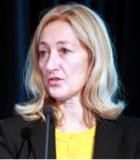
Funzione/Ruolo
Direttrice scientifica presso l'IRCSS Fondazione Salvatore Maugeri di Pavia e Professoressa ordinaria di Cardiologia all'Università di Pavia
Percorso professionale
Silvia Giuliana Priori si laurea in Medicina e Chirurgia nel 1986 all'Università degli Studi di Milano, per poi specializzarsi in Cardiologia presso la stessa università, conseguendo nel 1995 il dottorato di ricerca in Fisiopatologia Cardiaca. Dopo un periodo di training formativo all'estero, nei laboratori di Elettrofisiologia Cellulare del Dipartimento di Cardiologia della Washington University, torna in Italia per svolgere uno stage di ricerca in biologia molecolare presso il Telethon Institute for Genetics and Medicine (TIGEM) a Milano. Dal 2008 al gennaio 2016 è Professor of Medicine e Direttrice del Programma di Genetica alla Leon H. Charney Division of Cardiology dell'Università di New York. Attualmente è professoressa ordinaria di Cardiologia all'Università degli Studi di Pavia. Oltre all'attività accademica, Silvia Giuliana Priori coordina diversi laboratori e reparti: è Direttrice Scientifica Centrale della Fondazione Salvatore Maugeri Clinica del Lavoro e della Riabilitazione IRCCS e Direttrice del Reparto di Cardiologia Riabilitativa e del Servizio di Cardiologia Molecolare presso la stessa Fondazione. Dirige e coordina anche programmi internazionali, come il Programma di Genetica Cardiovascolare Genetica Cardiovascolare presso il Centro National de Investigaciones Cardiovasculares Carlos III (CNIC) di Madrid.
Risultati scientifici
Dal 1997 ha iniziato lo sviluppo di una linea di ricerca autonoma nei laboratori da lei diretti. Fondendo l'attività clinica sulle malattie aritmogene (malattie cardiache che provocano aritmie) alle competenze di biologia molecolare ed elettrofisiologia cellulare, ha creato il primo centro in Italia, e uno dei primi al mondo, di Cardiologia Molecolare dove studia i meccanismi delle aritmie cardiache che provocano morti improvvise in bambini e adolescenti. Ha ottenuto importanti successi nella ricerca sulla sindrome del QT lungo (LQTS, dall'inglese "Long Q-T Syndrome"), una rara anomalia cardiaca caratterizzata da una ritardata ripolarizzazione delle cellule miocardiche ed associata a sincope, e sulla sindrome di Brugada, anch'essa una patologia cardiaca con disturbi dell'attività elettrica del cuore che porta all'arresto cardiaco. L'équipe che dirige è impegnata in un progetto di ampio respiro basato sulla creazione di innovativi modelli animali di malattie genetiche e sullo sviluppo di strategie molecolari avanzate per correggere i difetti genici attraverso l'utilizzo di virus adenoassociati (capaci di integrarsi nel genoma della cellula ospite anche in assenza di proliferazione cellulare) per silenziare i geni malati e per riesprimere quelli sani.
Attività editoriali e pubblicazioni
Autrice di numerose pubblicazioni nazionali ed internazionali tra cui:
(2016) Mosca B, Eckhardt J, Bergamelli L, Priori SG, et al. Role of the JP45-calsequestrin complex on calcium entry in slow twitch skeletal muscles. Journal of Biological Chemistry, 291(28):14555-65.
(2016) Mazzanti A, Priori SG. Brugada Syndrome. Journal of the American College of Cardiology, 68(6):624-625.
(2016) Faragli A, Underwood K, Priori SG, Mazzanti A. Is There a Role for Genetics in the Prevention of Sudden Cardiac Death?.Journal of Cardiovascular Electrophysiology.
(2016) Mosca B, Eckhardt J, Bergamelli L, Priori SG, et al. Role of the JP45-Calsequestrin Complex on Calcium Entry in Slow Twitch Skeletal Muscles.Journal of Biological Chemistry, 291(28).
(2016) Chyou JY Fredman D, Cerrone M, Priori SG, et al. Electrocardiographic features of sudden unexpected death in epilepsy, Epilepsia.
(2016) Curcio A, Mazzanti A, Bloise R, Priori SG, et al. Clinical Presentation and Outcome of Brugada Syndrome Diagnosed With the New 2013 Criteria.Journal of Cardiovascular Electrophysiology, 27(8):937-43.
(2016) Mazzanti A, Maragna R, Faragli A, Priori SG, et al. Gene-Specific Therapy With Mexiletine Reduces Arrhythmic Events in Patients With Long QT Syndrome Type 3.Journal of the American College of Cardiology, 67(9):1053-1058.
(2016) Imberti JF, Underwood K, Mazzanti A, Priori SG. Clinical Challenges in Catecholaminergic Polymorphic Ventricular Tachycardia.Heart, Lung and Circulation, 25(8).
(2015) Priori SG, Blomstorm-Lundqvist C, Mazzanti A, et al. 2015 ESC Guidelines for the Management of Patients With Ventricular Arrhythmias and the Prevention of Sudden Cardiac Death. Revista Española de Cardiología, 69(2):176.
(2015) Ferrantini C, Coppini R, Scellini B, Priori SG, et al. R4496C RyR2 mutation impairs atrial and ventricular contractility.The Journal of General Physiology, 147(1).
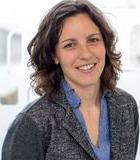
Funzione/Ruolo
Partner associata della McKinsey & Company
Percorso professionale
Dopo la laurea in Ingegneria fisica, prosegue gli studi con un dottorato di ricerca in Fisica presso il Politecnico di Milano, durante il quale passa un anno presso l'Istituto di Scienza dei Materiali (ICMAB-CSIC) dell'Università Autonoma di Barcellona. In seguito si trasferisce in Francia per un post-dottorato. Nel 2014, tornata in Italia, mette a disposizione dell'Istituto Italiano di Tecnologia (IIT) di Genova le capacità e l'esperienza maturate all'estero. Nel 2016 è cou-founder e amministratrice unica della BeDimensional, start-up nata dai laboratori dell'IIT. Nel marzo del 2017 diventa Socia della McKinsey & Company.
Risultati scientifici
Durante il dottorato si occupa di elettronica degli ossidi ed in particolare si focalizza sullo studio dei fenomeni che caratterizzano l'interfaccia tra materiali ferromagnetici e ferroelettrici. L'obiettivo di questi studi è lo sviluppo di nuovi dispositivi di memoria controllati elettricamente basati su giunzioni ad effetto tunnel. All'Istituto Italiano di Tecnologia si dedica inizialmente allo sviluppo di materiali intelligenti per applicazioni industriali. Successivamente, si dedica al progetto di trasferimento tecnologico dei nuovi materiali bidimensionali, in particolare il grafene, nato in IIT divenendo amministratore unico della startup BeDimensional. All'interno dell'Istituto Italiano di Tecnologia, nei Graphene Labs, si studiano i cristalli bidimensionali, la nuova famiglia di materiali "smart" nata a partire dal 2004 con l'isolamento del primo e più noto di questi materiali - il grafene - e che possiedono caratteristiche uniche dal punto di vista meccanico, elettrico, termico e ottico. Il grafene, definito materiale delle meraviglie, è dotato di una resistenza meccanica circa 200 volte superiore all'acciaio e di una straordinaria conducibilità termica. È biocompatibile, biodegradabile, capace di sostenere una densità di corrente elettrica superiore al rame ed è una barriera pressoché impermeabile alla stragrande maggioranza degli elementi chimici, pur mantenendo le caratteristiche di flessibilità e leggerezza. Nei Graphene Labs di IIT è stato sviluppato un processo per la produzione di questi materiali scalabile a livello industriale. I cristalli bidimensionali (tra cui il grafene) possono inoltre essere opportunamente miscelati in matrici plastiche, in fibre di carbonio/vetro o in metalli creando compositi con performance elevate. Queste opportunità aprono un nuovo scenario industriale inimmaginabile fino a qualche anno fa. L'idea è quindi quella di rivoluzionare e agevolare l'industria manifatturiera nazionale e internazionale.
Attività editoriali e pubblicazioni
È autrice di numerose pubblicazioni su riviste scientifiche nazionali ed internazionali, tra cui:
(2016) Pesquera D, Barla A, Wojcik M, Jedryka E, Bondino F, Mangano E, Nappini S, Gutiérrez D, Radaelli G, et al. Strain-Driven Orbital and Magnetic Orders and Phase Separation in Epitaxial Half-Doped Manganite Films for Tunneling Devices.Physical Review Applied 6(3):034004.
(2016) Radaelli G, Heredia-Guerrero JA, et al. Highly Effective Antiadhesive Coatings from pH-Modified Water-Dispersed Perfluorinated Acrylic Copolymers: The Case of Vulcanizing Rubber.Advanced Materials Interfaces 3(13).
(2015) Asa M, Baldrati L, Rinaldi C, Bertoli S, Radaelli G, et al. Electric field control of magnetic properties and electron transport in BaTiO 3 -based multiferroic heterostructures.Journal of Physics Condensed Matter 27(50):504004.
(2015) Bertacco R, Radaelli G, et al. Switching magnetic order at an Fe/BaTiO3 interface on and off: Impact on hybrid magnetic-ferroelectric tunnel junctions.
(2015) Liu F, Fina I, Gutiérrez D, Radaelli G, et al. Selecting Steady and Transient Photocurrent Response in BaTiO3 Films.
(2015) Radaelli G, Gutiérrez D, et al. Large Room-Temperature Electroresistance in Dual-Modulated Ferroelectric Tunnel Barriers.Advanced Materials 27(16).
(2014) Radaelli G, Petti D, Cantoni M, et al, Absence of strain-mediated magnetoelectric coupling at fully epitaxial Fe/BaTiO3 interface (invited). Journal of Applied Physics 115(17).
(2014) Radaelli G, Cantoni M, et al. Two dimensional growth of ultrathin Fe films on BaTiO.Journal of Applied Physics 115(6):063501.
(2014) Gutiérrez D, Radaelli G, et al. Bandwidth-limited control of orbital and magnetic orders in half-doped manganites by epitaxial strain.Physical Review B 89:075107
(2014) Radaelli G, Petti D, et al. Electric Control of Magnetism at the Fe/BaTiO3 Interface.Nature Communications 5:3404.
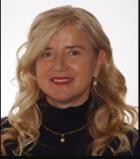
Funzione/Ruolo
Professoressa ordinaria di Analisi Matematica presso la Università degli Studi di Catania
Percorso professionale
Dopo la laurea in Matematica all’Università degli Studi di Catania nel 1988, diventa, nel 1989, Cultrice della Materia di Analisi Matematica presso la Facoltà di Ingegneria dell'Università di Catania. Nel 1990 supera l'esame di ammissione al Dottorato Ricerca in Matematica presso l'Università di Catania. Nel 1992 diventa ricercatrice e nel 2000 Professoressa Associata all'Università di Catania. Nel 2012 le viene conferito il PhD in Mathematics dalla Luleå University (Svezia). Nel 2013 ottiene la abilitazione scientifica nazionale a Professoressa Ordinaria di Analisi Matematica e dal 2017 è Professoressa Ordinaria di Analisi Matematica presso la Università di Catania. E’ Chief researcher del Center of Nonlinear Problems of Mathematical Physics, RUDN University, Mosca (Russia). Fa parte del Collegio dei docenti del Dottorato di Ricerca in Matematica della Università di Catania, e di commissioni internazionali di esame di Dottorato di Ricerca. Ha tenuto corsi di insegnamento per il Dottorato di Ricerca in Italia, Francia, Turchia e Svezia.
E’ responsabile di progetti di ricerca del "Gruppo Nazionale per la Analisi Matematica, la Probabilità e le loro Applicazioni (GNAMPA) - Istituto Nazionale di Alta Matematica", di accordi ERASMUS tra la Università di Catania ed Università straniere in Svezia, Norvegia, Turchia e Francia.
E’ Vice Preside della Facoltà di Scienze Matematiche, Fisiche e Naturali della Università di Catania dal 2009 al 2012, viene eletta, nel 2012, Presidente del Corso di Laurea Magistrale in Scienze per la Tutela dell'Ambiente della Università di Catania, e nel 2013 Direttrice del “Centro Universitario per la Tutela e la Gestione degli Ambienti Naturali e degli Agro-Ecosistemi” (C.U.T.G.A.N.A.).
E’ delegata del Rettore della Università di Catania alla Internazionalizzazione in ambito scientifico.
Referente per Catania della Unione Matematica Italiana, membro della Accademia Gioenia, membro proponente del "Centro di Matematica per la Tecnologia Angelo Marcello Anile" della Università di Catania, membro proponente del "Centro interdipartimentale di ricerca per il community engagement” (CUrE) della Università di Catania. E’ inserita nell’Albo degli esperti valutatori della Agenzia Nazionale della Valutazione della Università e della Ricerca (A.N.V.U.R.).
Risultati scientifici
È attualmente responsabile di un gruppo di ricerca che si interessa dello studio di equazioni alle derivate parziali, lineari e quasi-lineari, e di cambiamenti climatici e loro impatto. Con il suo team ha definito un indice che permette di calcolare con facilità l'effetto territoriale della sensibilità alla desertificazione al fine di superare il limite di protocollo internazionale “MEditerranean Desertification And Land Use European” (MEDALUS), che non prevede una stima della sensibilità alla desertificazione di una zona territoriale (comunale, provinciale, regionale, zona idrografica) attraverso un valore unico. Tale indice ha vantaggi significativi, perché produce efficaci classifiche, con la conseguente possibilità di elaborare i dati comparativi in relazione a diversi periodi di tempo.
Nell’ambito di tale ricerca di matematica applicata alla tutela all’ambiente si studiano, inoltre, gli effetti dell'impatto, sul clima e sull' ambiente, del trasporto di polvere sahariana sul particolato (PM10).
I risultati di tali ricerche sono stati esposti in convegni internazionali in tutti e 5 i continenti, di cui circa 20 da lei organizzati in Europa e USA, facendo parte di comitati scientifici in cui talvolta è stata l'unico membro italiano. Ha tenuto seminari in numerose Università italiane ed estere, essendo, solo a titolo di esempio: ospite di gruppi di ricerca, ospite su invito in occasione di semestri intensivi dell’Istituto Nazionale di Alta Matematica (I.N.D.A.M.), ospite del “Centro di Ricerca Matematica E. De Giorgi” della "Scuola Normale Superiore" di Pisa, del "Newton Institute" di Cambridge, del Department of Mathematics della “Research Melbourne Institute of Technology” di Melbourne, della “Tokyo University of Science” di Tokyo, del “Florida Institute of Technology” di Miami, del Department of Mathematics, della“Harvard University” di Boston, del "Mittag-Leffler" Institute della Accademia reale svedese delle Scienze di Stoccolma.
Attività editoriali e pubblicazioni
È Editor in Chief unico della rivista internazionale "Journal of Mathematics Research", pubblicata dal Canadian Center of Science and Education, Editor del volume "Journal of Inequalities and Applications", ed. Springer. 2015, membro di Editorial Board di numerose riviste internazionali pubblicate su Scopus e Web of Science con impact factor.
È autrice di oltre 90 pubblicazioni scientifiche, a nome singolo e in collaborazione con circa 30 coautori, di cui un terzo italiani e gli altri europei ed extraeuropei. Ad un solo nome sono pubblicate note scientifiche su riviste che figurano tra le prime 10 del Journal Citation Reports e pubblicazioni che, in entrambi i database Scopus e Web of Science, hanno più di 150 citazioni.
Solo a titolo di esempio, alcune tra le sue pubblicazioni scientifiche:
(2021) Hamdy M. Ahmed, Reda A. Elbarkouky, Othman A. M. Omar, and Maria Alessandra Ragusa. Models for COVID-19 Daily Confirmed Cases in Different Countries. Mathematics, 9:659.
(2018) Guliyev V, Omarova M, Ragusa MA, Scapellato A. Commutators and Generalized Local Morrey Spaces. Journal of Mathematical Analysis and Applications, 457 (2): 1388-1402.
(2017) Cuspilici A, Monforte P, Ragusa MA. Study of Saharan dust influence on PM10 measures in Sicily from 2013 to 2015. Ecological Indicatiors, 76: 297-303.
(2017) Deringoz F, Guliyev V, Ragusa MA. Intrinsic Square Functions on Vanishing Generalized Orlicz-Morrey Spaces. Set-Valued and Variational Analysis, 25: 807–828.
(2017) Ragusa MA, Scapellato A. Mixed Morrey spaces and their applications to partial differential equations. Nonlinear Analysis-Theory Methods & Applications, 151: 51-65.
(2017) Duro A, Piccione V, Ragusa MA, Rapicavoli V, Veneziano V. Enviromentally Sensitive Patch Index of desertification risk applied to the main habitats of Sicily. Book Series: American Institute of Physics, 1863, Article Number: UNSP 510005.
(2014) Benboenou S, Ragusa MA, Terberche M. Remarks on Leray's self-similar solutions to the 3D magnetohydrodynamic equations. Mathematical Methods in the Applied Sciences, 37 (17): 2615-2618.
(2013) Ragusa MA, Tachikawa A, Takabayashi H. Partial regularity of p(x)-harmonic maps. Transactions of the American Mathematical Society, 365 (6):3329-3353.
(2012) Persson LE, Ragusa MA, Samko N, Wall P. Commutators of Hardy operators in vanishing Morrey spaces. Book Series: American Institute of Physics, 1863:859-866.
(2008) ) Polidoro S, Ragusa MA. Harnack inequality for hypoelliptic ultraparabolic equations with a singular lower order term. Revista Matematica Iberoamericana Vol. 24, 1011-1046.
(2002) Ragusa MA. Local holder regularity for solutions of elliptic system. Duke Mathematical Journal, 113 (2):385-397.
(2000) D. Palagachev, M.A. Ragusa, L. Softova. Regular Oblique derivatives problem in Morrey Spaces. El. Journal of Differential Equations (39).

Funzione/Ruolo
Professoressa ordinaria di Bioingegneria al Politecnico di Milano
Percorso professionale
Dopo la laurea in Ingegneria Meccanica con indirizzo in Bioingegneria, presso il Politecnico di Milano, nel 2000 consegue il dottorato di ricerca in Bioingegneria presso lo stesso Ateneo, dove prosegue la sua carriera fino a oggi. Nel 2003 fonda l'unità di ricerca in Bioingegneria dislocata presso l'IRCCS Istituto Ortopedico Galeazzi di Milano e la dirige fino al 2008. Nel 2010 fonda il laboratorio di Meccanobiologia del Dipartimento di Chimica, materiali e ingegneria chimica "Giulio Natta", dove dal 2018 è professoressa ordinaria di Bioingegneria. Dal 2013 al 2015 è vice-coordinatrice del programma interdipartimentale di dottorato in Bioingegneria. Nel 2014 fonda e dirige il LuCld lab, laboratorio per l'imaging su cellule viventi. Dal 2015 è la referente del Politecnico di Milano per l'accordo quadro con l'istituto di ricerca farmacologica dell'I.R.C.C.S. Istituto di Ricerche Farmacologiche Mario Negri di Milano.
Risultati scientifici
La sua attività scientifica si concentra sulla bioingegneria, sulla comprensione e il conseguente controllo di meccanismi biologici mediante dispositivi ingegneristici per la coltura di cellule al di fuori dell'organismo umano. Un importante risultato è stato quello di riuscire a orientare la produzione di organoidi (versioni semplificate e miniaturizzate di un organo prodotto in vitro), per esempio tessuto cerebrale o metastasi tumorali ossee, utilizzando dispositivi miniaturizzati detti "bioreattori millifluidici". Manuela Raimondi ha progettato tali sistemi per produrre e mantenere in coltura tessuto vivente da impiegare per la sperimentazione di nuovi farmaci, per esempio chemioterapici e anti-infiammatori, in modo molto più realistico della coltura cellulare convenzionale, riducendo l'impiego di animali da esperimento. Nei suoi studi si è focalizzata sulle cellule "mesenchimali", ovvero cellule staminali del tessuto osseo e cartilagineo, che forniscono la naturale capacità rigenerativa e riparativa ai tessuti del corpo umano. Un importante risultato è stato quello di riuscire a imitare gli stessi legami che mantengono aggregate le cellule nelle nicchie naturali in cui esse abitualmente risiedono nel corpo umano, progettando strutture artificiali di dimensione nanometrica, dette "nicchie ingegnerizzate", alle quali far aderire le cellule in coltura. Questa tecnica di coltura non convenzionale consente di mantenere le proprietà delle cellule staminali in coltura prolungata, senza necessità di somministrare molecole tossiche, accelerando così il trasferimento di queste cellule verso un loro uso clinico come farmaci naturali, in sostituzione dei farmaci anti-infiammatori convenzionali. Lo stesso metodo viene utilizzato per le rigenerazione di organi in vitro.
Attività editoriali e pubblicazioni
È autrice di circa 200 pubblicazioni scientifiche, tra cui:
[2018] Marturano-Kruik A, A.Villasante, K.Yaeger, S. Ambati, A. Chramiec, M.T. Raimondi, G. Vunjak-Novakovic. Biomechanical regulation of drug sensitivity in an engineered model of human tumor. Biomaterials. 2018 Jan;150:150-161. doi: 10.1016/j.biomaterials.2017.10.020
[2018] Marturano-Kruik A, Nava MM, Yaeger K, Chramiec A, Hao L, Robinson ST, Guo XE, Raimondi MT, Vunjak-Novakovic G. Human bone perivascular niche-on-a-chip for studyingmetastatic colonization. Proc Natl Acad Sci U S A. 2018 Feb 6;115(6):1256-1261. doi:10.1073/pnas.1714282115.
[2018] Garcia A, Jacchetti E, Marotta R, Tunesi M, Rodriguez Matas JF, Raimondi MT. The Effect of Cell Morphology on the Permeability of the Nuclear Envelope to Diffusive Factors. Frontiers in Physiology. Published online July 13, 2018. https://doi.org/10.3389/fphys.2018.00925
[2017] Ricci D, Nava MM, Zandrini T, Cerullo G, Raimondi MT, Osellame R. Scaling-Up Techniques for the Nanofabrication of Cell Culture Substrates via Two-Photo Polymerization for Industrial-Scale Expansion of Stem Cells. Materials, 10(1):66. doi: 10.3390/ma10010066
[2016] Tunesi M, Fusco F, Fiordaliso F, Corbelli A, Biella G, Raimondi MT. Optimization of a 3D dynamic culturing system for in vitro modeling of Frontotemporal Neurodegeneration-relevant pathologic features. Frontiers in aging neuroscience. Frontiers in Aging Neuroscience, 8:146. doi: 10.3389/fnagi.2016.00146
[2016] Garcia B, Rodriguez Matas JF, Raimondi MT. Modeling of the mechano-chemical behavior of the nuclear pore complex: current research and perspectives. Integrative Biology, 8(10): 1011-1021 doi: 10.1039/c6ib00153j
[2016] Nava MM, Di Maggio N, Zandrini T, Cerullo G, Osellame R, Martin I, Raimondi MT. Synthetic niche substrates engineered via two-photon laser polymerization for the expansion of human mesenchymal stromal cells. Journal of Tissue Engineering and Regenerative Medicine, doi: 10.1002/term.2187
[2016] Nava MM, Piuma A, Figliuzzi M, Cattaneo I, Bonandrini B, Zandrini T, Cerullo G, Osellame R, Remuzzi A, Raimondi MT. Two-photon polymerized "nichoid" substrates maintain function of pluripotent stem cells when expanded under feeder-free conditions. Stem Cell Research and Therapy, 7:132. doi: 10.1186/s13287-016-0387-z
[2014] Raimondi MT, Nava MM, Eaton SM, Bernasconi S, Vishnubhatla KC, Cerullo G, Osellame R. Optimization of femtosecond laser polymerized structural niches to control mesenchymal stromal cell fate in culture. Micromachines, 5, 341-358; DOI: 10.3390/mi5020341
[2013] Raimondi MT, Eaton SM, Laganà M, Aprile V, Nava MM, Cerullo G, Osellame R. Three-dimensional structural niches engineered via two-photon laser polymerization promote stem cell homing. Acta Biomaterialia, 9(1):4579-84. DOI: 10.1016/j.actbio.2012.08.022
[2012] Laganà M, Raimondi MT. A miniaturized, optically accessible bioreactor for systematic 3D tissue engineering research. Biomedical Microdevices. 14(1):225-234, ISSN 1387-2176, DOI:10.1007/s10544-011-9600-0
Riconoscimenti e premi
Manuela Raimondi ha ricevuto numerosi premi e riconoscimenti, fra cui tre grants ERC:
2000-2001: Young Investigator Award del Politecnico di Milano.
2005-2006 e 2006-2007: Research Award della Fondazione Cariplo.
2006 e 2007: Rocca Award del MIT-Italy program.
2010-2011: Research Award del Ministero dell'Economia e dello Sviluppo Economico.
2011-2012: Young Researcher Award del Politecnico di Milano.
2015-2020: ERC-CoG-2014 Grant award in stem cell mechanobiology, dell'European Research Council, project NICHOID.
2017-2018: ERC-PoC-2016 Grant award in stem cell bioengineering, assegnato dall'European research Council, Brussels, Belgium - project NICHOIDS.
2019-2020 ERC-PoC-2018 Grant award in microfluidic bioengineering, dell’European Research Council, project MOAB.



